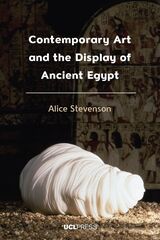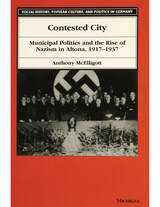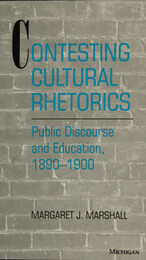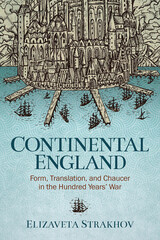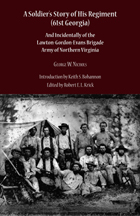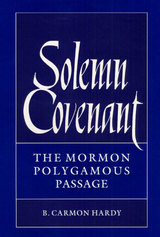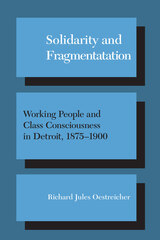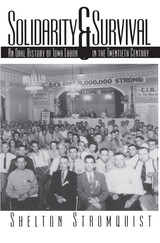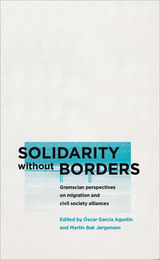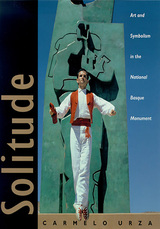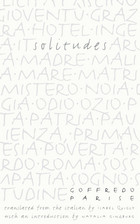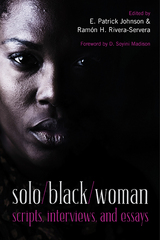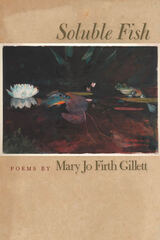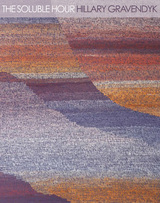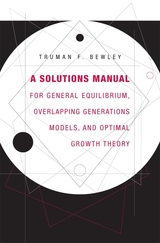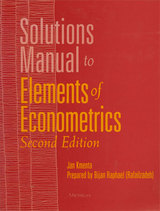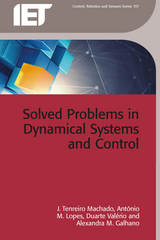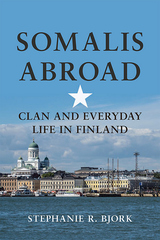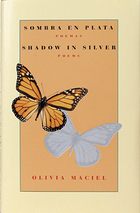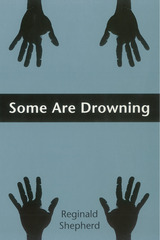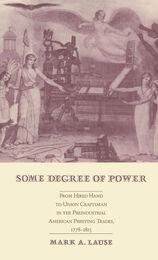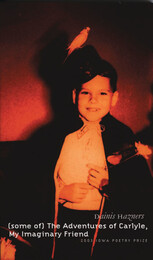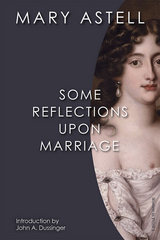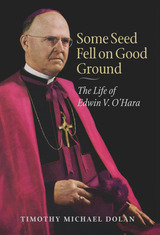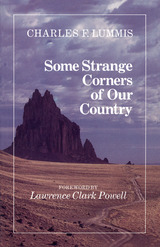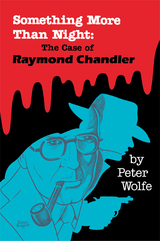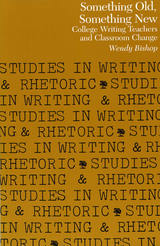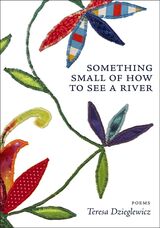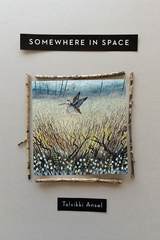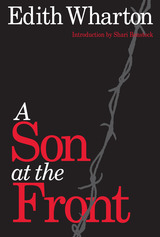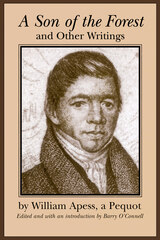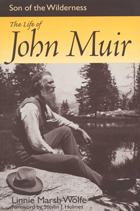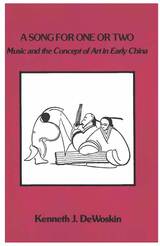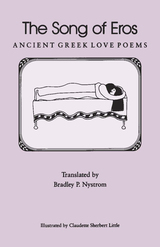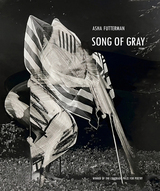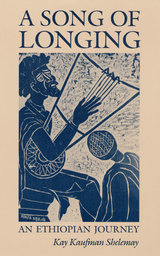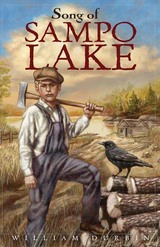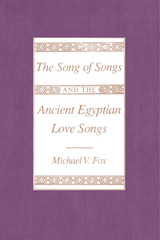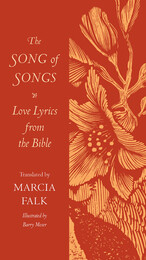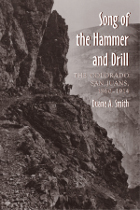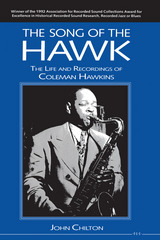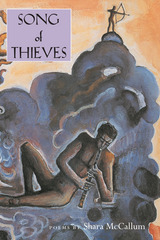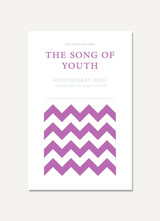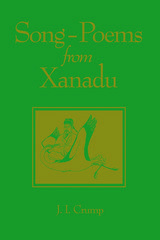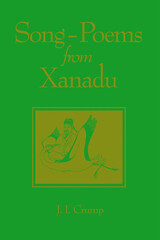Soldiers of the French Revolution
Alan Forrest
Duke University Press, 1989 In this work Alan Forrest brings together some of the recent research on the Revolutionary army that has been undertaken on both sides of the Atlantic by younger historians, many of whom look to the influential work of Braudel for a model. Forrest places the armies of the Revolution in a broader social and political context by presenting the effects of war and militarization on French society and government in the Revolutionary period.
Revolutionary idealists thought of the French soldier as a willing volunteer sacrificing himself for the principles of the Revolution; Forrest examines the convergence of these ideals with the ordinary, and often dreadful, experience of protracted warfare that the soldier endured.
 Soldiers of the Pen: The Writers' War Board in World War II
Thomas Howell
University of Massachusetts Press, 2019 From 1942 to 1945, a small, influential group of media figures willingly volunteered their services to form the Writers' War Board (WWB), accepting requests from government agencies to create propaganda. Members included mystery writer Rex Stout, Pulitzer and Nobel Prize winner Pearl S. Buck, novelist and sports writer Paul Gallico, Book-of-the-Month Club editor and popular radio host Clifton Fadiman, and Broadway lyricist Oscar Hammerstein II. The WWB mobilized thousands of other writers across the country to spread its campaigns through articles, public appearances, radio broadcasts, and more.
The WWB received federal money while retaining its status as a private organization that could mount campaigns without government oversight. Historian Thomas Howell argues that this unique position has caused its history to fall between the cracks, since it was not recognized as an official part of the government's war effort. Yet the WWB's work had a huge impact on the nation's wartime culture, and this fascinating history will inform contemporary thinking on propaganda, the media, and American society.
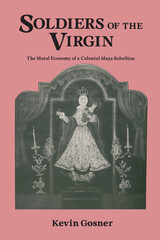 Soldiers of the Virgin: The Moral Economy of a Colonial Maya Rebellion
Kevin Gosner
University of Arizona Press, 1992 In the early summer of 1712, a young Maya woman from the village of Cancuc in southern Mexico encountered an apparition of the Virgin Mary while walking in the forest. The miracle soon attracted Indian pilgrims from pueblos throughout the highlands of Chiapas. When alarmed Spanish authorities stepped in to put a stop to the burgeoning cult, they ignited a full-scale rebellion. Declaring "Now there is no God or King," rebel leaders raised an army of some five thousand "soldiers of the Virgin" to defend their new faith and cast off colonial rule.Using the trial records of Mayas imprisoned after the rebellion, as well as the letters of Dominican priests, the local bishop, and Spaniards who led the army of pacification, Kevin Gosner reconstructs the history of the Tzeltal Revolt and examines its causes. He characterizes the rebellion as a defense of the Maya moral economy, and shows how administrative reforms and new economic demands imposed by colonial authorities at the end of the seventeenth century challenged Maya norms about the ritual obligations of community leaders, the need for reciprocity in political affairs, and the supernatural origins of power.The first book-length study of the Tzeltal Revolt, Soldiers of the Virgin goes beyond the conventions of the regional monograph to offer an expansive view of Maya social and cultural history. With an eye to the contributions of archaeologists and ethnographers, Gosner explores many issues that are central to Maya studies, including the origins of the civil-religious hierarchy, the role of shamanism in political culture, the social dynamics of peasant corporate communities, and the fate of the native nobility after the Spanish conquest.
 Soldiers on the Home Front: The Domestic Role of the American Military
William C. Banks and Stephen Dycus
Harvard University Press, 2016 When crisis requires American troops to deploy on American soil, the country depends on a rich and evolving body of law to establish clear lines of authority, safeguard civil liberties, and protect its democratic institutions and traditions. Since the attacks of 9/11, the governing law has changed rapidly even as domestic threats—from terror attacks, extreme weather, and pandemics—mount. Soldiers on the Home Front is the first book to systematically analyze the domestic role of the military as it is shaped by law, surveying America’s history of judicial decisions, constitutional provisions, statutes, regulations, military orders, and martial law to ask what we must learn and do before the next crisis.
America’s military is uniquely able to save lives and restore order in situations that overwhelm civilian institutions. Yet the U.S. military has also been called in for more coercive duties at home: breaking strikes, quelling riots, and enforcing federal laws in the face of state resistance. It has spied on and overseen the imprisonment of American citizens during wars, Red scares, and other emergencies. And while the fears of the Republic’s founders that a strong army could undermine democracy have not been realized, history is replete with reasons for concern.
At a time when the military’s domestic footprint is expanding, Banks and Dycus offer a thorough analysis of the relevant law and history to challenge all the stakeholders—within and outside the military—to critically assess the past in order to establish best practices for the crises to come.
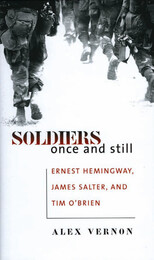 Soldiers Once and Still: Ernest Hemingway, James Salter, and Tim O'Brien
Alex Vernon
University of Iowa Press, 2007 As the world enters a new century, as it embarks on new wars and sees new developments in the waging of war, reconsiderations of the last century’s legacy of warfare are necessary to our understanding of the current world order. In Soldiers Once and Still, Alex Vernon looks back through the twentieth century in order to confront issues of self and community in veterans’ literature, exploring how war and the military have shaped the identities of Ernest Hemingway, James Salter, and Tim O’Brien, three of the twentieth century’s most respected authors. Vernon specifically explores the various ways war and the military, through both cultural and personal experience, have affected social and gender identities and dynamics in each author’s work.
Hemingway, Salter, and O’Brien form the core of Soldiers Once and Still because each represents a different warring generation of twentieth-century America: World War I with Hemingway, World War II and Korea with Salter, and Vietnam with O’Brien. Each author also represents a different literary voice of the twentieth century, from modern to mid-century to postmodern, and each presents a different battlefield experience: Hemingway as noncombatant, Salter as air force fighter pilot, and O’Brien as army grunt.
War’s pervasive influence on the individual means that, for veterans-turned-writers like Hemingway, Salter, and O’Brien, the war experience infiltrates their entire body of writing—their works can be seen not only as war literature but also as veterans’ literature. As such, their entire postwar oeuvre, regardless of whether an individual work explicitly addresses the war or the military, is open to Vernon’s exploration of war, society, gender, and literary history.
Vernon’s own experiences as a soldier, a veteran, a writer, and a critic inform this enlightening critique of American literature, offering students and scholars of American literature and war studies an invaluable tool for understanding war’s effects on the veteran writer and his society.
 Soldier's Paradise: Militarism in Africa after Empire
Samuel Fury Childs Daly
Duke University Press, 2024 In Soldier’s Paradise, Samuel Fury Childs Daly tells the story of how Africa’s military dictators tried and failed to transform their societies into martial utopias. Across the continent, independence was followed by a wave of military coups and revolutions. The soldiers who led them had a vision. In Nigeria and other former British colonies, officers governed like they fought battles—to them, politics was war by other means. Civilians were subjected to military-style discipline, which was indistinguishable from tyranny. Soldiers promised law and order, and they saw judges as allies in their mission to make society more like an army. But law was not the disciplinary tool soldiers thought it was. Using legal records, archival documents, and memoirs, Daly shows how law both enabled militarism and worked against it. For Daly, the law is a place to see decolonization’s tensions and ironies—independence did not always mean liberty, and freedom had a militaristic streak. In a moment when militarism is again on the rise in Africa, Daly describes not just where it came from but why it lasted so long.
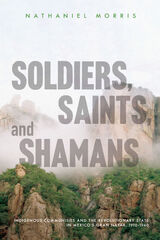 Soldiers, Saints, and Shamans: Indigenous Communities and the Revolutionary State in Mexico's Gran Nayar, 1910–1940
Nathaniel Morris
University of Arizona Press, 2020 The Mexican Revolution gave rise to the Mexican nation-state as we know it today. Rural revolutionaries took up arms against the Díaz dictatorship in support of agrarian reform, in defense of their political autonomy, or inspired by a nationalist desire to forge a new Mexico. However, in the Gran Nayar, a rugged expanse of mountains and canyons, the story was more complex, as the region’s four Indigenous peoples fought both for and against the revolution and the radical changes it bought to their homeland.
To make sense of this complex history, Nathaniel Morris offers the first systematic understanding of the participation of the Náayari, Wixárika, O’dam, and Mexicanero peoples in the Mexican Revolution. They are known for being among the least “assimilated” of all Mexico’s Indigenous peoples. It’s often been assumed that they were stuck up in their mountain homeland—“the Gran Nayar”—with no knowledge of the uprisings, civil wars, military coups, and political upheaval that convulsed the rest of Mexico between 1910 and 1940.
Based on extensive archival research and years of fieldwork in the rugged and remote Gran Nayar, Morris shows that the Náayari, Wixárika, O’dam, and Mexicanero peoples were actively involved in the armed phase of the revolution. This participation led to serious clashes between an expansionist, “rationalist” revolutionary state and the highly autonomous communities and heterodox cultural and religious practices of the Gran Nayar’s inhabitants. Morris documents confrontations between practitioners of subsistence agriculture and promoters of capitalist development, between rival Indian generations and political factions, and between opposing visions of the world, of religion, and of daily life. These clashes produced some of the most severe defeats that the government’s state-building programs suffered during the entire revolutionary era, with significant and often counterintuitive consequences both for local people and for the Mexican nation as a whole.
 Soldiers' Stories: Military Women in Cinema and Television since World War II
Yvonne Tasker
Duke University Press, 2011 From Skirts Ahoy! to M*A*S*H, Private Benjamin, G.I. Jane, and JAG, films and television shows have grappled with the notion that military women are contradictory figures, unable to be both effective soldiers and appropriately feminine. In Soldiers’ Stories, Yvonne Tasker traces this perceived paradox across genres including musicals, screwball comedies, and action thrillers. She explains how, during the Second World War, women were portrayed as auxiliaries, temporary necessities of “total war.” Later, nursing, with its connotations of feminine care, offered a solution to the “gender problem.” From the 1940s through the 1970s, musicals, romances, and comedies exploited the humorous potential of the gender role reversal that the military woman was taken to represent. Since the 1970s, female soldiers have appeared most often in thrillers and legal and crime dramas, cast as isolated figures, sometimes victimized and sometimes heroic. Soldiers’ Stories is a comprehensive analysis of representations of military women in film and TV since the 1940s. Throughout, Tasker relates female soldiers’ provocative presence to contemporaneous political and cultural debates and to the ways that women’s labor and bodies are understood and valued.
A Soldier's Story of His Regiment (61st Georgia): And Incidentally of the Lawton-Gordon-Evans Brigade Army of Northern Virginia
George W. Nichols
University of Alabama Press, 2011 One of the classic narratives of front line infantry service in the Army of Northern Virginia
Nichol’s 61st Georgia fought in the renowned brigade commanded consecutively by generals Alexander R. Lawton, John B. Gordon, and Clement A. Evans.
Framed without any excess of sentimental hindsight, in addition to reporting on great battles and dramatic moments, Nichol’s told the story of two cousins killing each other in a quarrel about cooking duties and described maggot-infested corpses around Spotsylvania’s Bloody Angle.
Includes an annotated roster of the 61st supplies which details about Nichol’s fellow veterans, some of which is not available anywhere else.
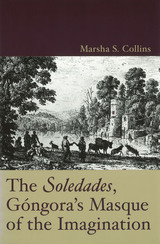 The Soledades, Góngora's Masque of the Imagination
Marsha S. Collins
University of Missouri Press, 2002
Prince of Darkness or Angel of Light? The pastoral masterpiece the Soledades garnered both titles for its author, Luis de Góngora, one of Spain's premier poets. In The Soledades, Góngora's Masque of the Imagination, Marsha S. Collins focuses on the brilliant seventeenth-century Spanish poet's contentious work of art. The Soledades have sparked controversy since they were first circulated at court in 1612-1614 and continue to do so even now, as Góngora has become for some critics the poster child of postmodernism. These perplexing 2,000-plus line pastoral poems garnered endless debates over the value and meaning of the author's enigmatic, challenging poetry and gave rise to his reputation, causing his very name to become an English term for obscurity.
Collins views these controversial poems in a different light, as a literary work that is a product of European court culture. She shows that the Soledades are in essence a court masque, an elaborate theatrical genre that combines a variety of cultural forms and that unfolds in the mind of the reader. Collins maintains that far from serving as an example of "art for art's sake," the Soledades represent Góngora's bid to transform poetic language into a new kind of visionary discourse that allows readers to access secret truths invisible to the average member of the reading public.
Each of Collins's four chapters analyzes a different facet of the Soledades, offering readers varied means of approaching Góngora's great work and helping the audience read the poems with greater understanding and appreciation.
The Soledades, Góngora's Masque of the Imagination demystifies the daunting, hermetic language of the Soledades to make this masterpiece of imperial Spain accessible to a new, and wider, circle of modern readers. Collins's book transports readers to the court of Habsburg Spain, offering a window to court culture—art, music, alchemy, emblems, garden architecture—and revealing the remarkable beauty of one of Spain's greatest literary masterpieces. Interdisciplinary and cross-cultural in approach, this book will appeal to all Hispanists, including those interested in the current "New Baroque" vogue in Hispanic scholarship, as well as specialists in Renaissance and Baroque English and European literature.
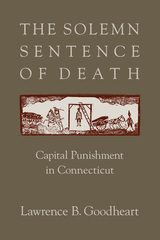 The Solemn Sentence of Death: Capital Punishment in Connecticut
Lawrence B. Goodheart
University of Massachusetts Press, 2011
The first case study of its kind, this book addresses a broad range of questions about the rationale for and application of judicial execution in Connecticut since the seventeenth century. In addition to identifying the 158 people who have been put to death for crimes during the state's history, Lawrence Goodheart analyzes their social status in terms of sex, race, class, religion, and ethnicity. He looks at the circumstances of the crimes, the weapons that were used, and the victims. He reconstructs the history of Connecticut's capital laws, its changing rituals of execution, and the growing debate over the legitimacy of the death penalty itself. Although the focus is on the criminal justice system, the ethical values of New England culture form the larger context. Goodheart shows how a steady diminution in types of capital crimes, including witchcraft and sexual crimes, culminated in an emphasis on proportionate punishment during the Enlightenment and eventually led to a preference for imprisonment for all capital crimes except first-degree murder. Goodheart concludes by considering why Connecticut, despite its many statutory restrictions on capital punishment and lengthy appeals process, has been the only state in New England to have executed anyone since 1960.
Solfege, Ear Training, Rhythm, Dictation, and Music Theory: A Comprehensive Course
Marta Arkossy Ghezzo
University of Alabama Press, 2005 One of the most highly acclaimed resources for the study of ear training in music education today Solfège has become one of the most highly acclaimed resources for the study of ear training in music education today. This revised and expanded third edition includes a multitude of new musical examples and dictations covering the entire continuum of musical development from classical to modern. This edition is enhanced with a free online companion library of rich and definitive audio performances of each of the 51 musical dictations, keyed by track number to the musical notation in the text. As students progress from the simple to the complex by following these carefully interrelated lessons, the results are, according to Mel Powell, “akin to miracle-making.”
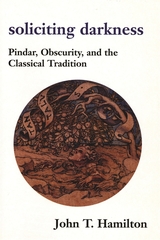 Soliciting Darkness: Pindar, Obscurity, and the Classical Tradition
John T. Hamilton
Harvard University Press, 2003 Hailed by Horace and Quintilian as the greatest of Greek lyric poets, Pindar has always enjoyed a privileged position in the so-called classical tradition of the West. Given the intense difficulty of the poetry, however, Pindaric interpretation has forever grappled with the perplexing dilemma that one of the most influential poets of antiquity should prove to be so dark.
In discussing both poets and scholars from a broad historical span, with special emphasis on the German legacy of genius, Soliciting Darkness investigates how Pindar’s obscurity has been perceived and confronted, extorted and exploited. As such, this study addresses a variety of pressing issues, including the recovery and appropriation of classical texts, problems of translation, representations of lyric authenticity, and the possibility or impossibility of a continuous literary tradition. The poetics of obscurity that emerges here suggests that taking Pindar to be an incomprehensible poet may not simply be the result of an insufficient or false reading, but rather may serve as a wholly adequate judgment.
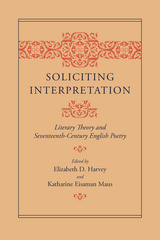 Soliciting Interpretation: Literary Theory and Seventeenth-Century English Poetry
Edited by Elizabeth D. Harvey and Katharine Eisaman Maus
University of Chicago Press, 1990 This collection gathers new essays by critics and scholars who are currently reshaping our sense of the function and nature of seventeenth-century poetry. Contributors return to the New Critical canon of Renaissance poetry with fresh perspectives that emphasize considerations of gender, ideology, power, and language.
In the first group of essays, David Norbrook, Annabel Patterson, John Guillory, Rosemary Kegl, and Stephen Orgel explore the various ways in which a text can be "political." Next, Arthur Marotti, Jane Tylus, and Jonathan Goldberg consider the circumstances of textual production and reception in the seventeenth century. Finally, Stanley Fish, Gordon Braden, Michael C. Schoenfeldt, and Maureen Quilligan discuss the particular forms of anxiety that result when seventeenth-century poets modify the traditional rhetoric of sexual desire to serve what seem to be erotic or religious purposes.
These essays, accompanied by an extensive editors' introduction, intersect less in their shared enthusiasm for particular authors or interpretative methods than in a common interest in particular critical issues. They present the most exciting work by critics redefining Renaissance studies.
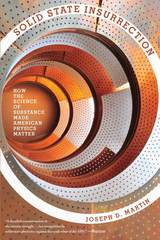 Solid State Insurrection: How the Science of Substance Made American Physics Matter
Joseph D. Martin
University of Pittsburgh Press, 2019 Solid state physics, the study of the physical properties of solid matter, was the most populous subfield of Cold War American physics. Despite prolific contributions to consumer and medical technology, such as the transistor and magnetic resonance imaging, it garnered less professional prestige and public attention than nuclear and particle physics.
Solid State Insurrection argues that solid state physics was essential to securing the vast social, political, and financial capital Cold War physics enjoyed in the twentieth century. Solid state’s technological bent, and its challenge to the “pure science” ideal many physicists cherished, helped physics as a whole respond more readily to Cold War social, political, and economic pressures. Its research kept physics economically and technologically relevant, sustaining its cultural standing and policy influence long after the sheen of the Manhattan Project had faded. With this book, Joseph D. Martin brings a new perspective to some of the most enduring questions about the role of physics in American history.
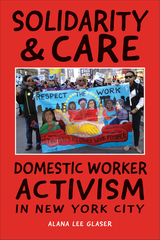 Solidarity & Care: Domestic Worker Activism in New York City
Alana Lee Glaser
Temple University Press, 2023 The members of the Domestic Workers United (DWU) organization—immigrant women of color employed as nannies, caregivers, and housekeepers in New York City—formed to fight for dignity and respect and to “bring meaningful change” to their work. Alana Lee Glaser examines the process of how these domestic workers organized against precarity, isolation, and exploitation to help pass the 2010 New York State Domestic Worker Bill of Rights, the first labor law in the United States protecting in-home workers.
Solidarity & Care examines the political mobilization of diverse care workers who joined together and supported one another through education, protests, lobbying, and storytelling. Domestic work activists used narrative and emotional appeals to build a coalition of religious communities, employers of domestic workers, labor union members, and politicians to first pass and then to enforce the new law.
Through oral history interviews, as well as ethnographic observation during DWU meetings and protest actions, Glaser chronicles how these women fought (and continue to fight) to improve working conditions. She also illustrates how they endure racism, punitive immigration laws, on-the-job indignities, and unemployment that can result in eviction and food insecurity.
The lessons from Solidarity & Care along with the DWU’s precedent-setting legislative success have applications to workers across industries.
All royalties will go directly to the Domestic Workers United
 Solidarity And Contention: Networks Of Polish Opposition
Maryjane Osa
University of Minnesota Press, 2003 Offers an innovative model for understanding how social movements occur in repressive societies After a series of failed attempts at mobilizing society, Poland’s opposition sprang to surprising—and newly effective—life with the formation of the Solidarity trade union in 1980. If not for those past failures, this book suggests, Solidarity might never have succeeded. Solidarity and Contention deftly reconstructs the networks of protest in Communist Poland to show how waves of dissent during the 1950s, 1960s, and 1970s left an organizational residue that both instructed and enabled Solidarity and, ultimately, the Polish revolution. Using newly available documentary sources, Maryjane Osa establishes links between activists during three waves of protest: 1954 to 1959, 1966 to 1970, and 1976 to 1980. She shows how political challengers, applying lessons drawn from past failures, developed an ideological formula to de-emphasize divisive issues and promote symbolic concerns, thus facilitating coalition building. Solidarity was therefore able to take advantage of a large opposition network already well in place before the founding of the union. An important case study in itself, the book also answers one of the most intriguing questions in social movement research: how can movements emerge in authoritarian states—where media are state controlled, the rights of assembly and speech are restricted, and the risks of collective action are high?
Solidarity and Fragmentation: Working People and Class Consciousness in Detroit, 1875-1900
Richard Jules Oestreicher
University of Illinois Press, 1985 How did the interplay between class and ethnicity play out within the working class during the Gilded Age? Richard Jules Oestreicher illuminates the immigrant communities, radical politics, worker-employer relationships, and the multiple meanings of workers' affiliations in Detroit at the end of the nineteenth century.
Solidarity and Survival: An Oral History of Iowa Labor in the Twentieth Century
Shelton Stromquist
University of Iowa Press, 1993 In Solidarity and Survival, three generations of Iowa workers tell of their unrelenting efforts to create a labor movement in the coal mines and on the rails, in packinghouses and farm equipment plants, on construction sites and in hospital wards. Drawing on nearly one thousand interviews collected over more than a decade by oral historians working for the Iowa Federation of Labor, AFL-CIO, Shelton Stromquist presents the resonant voices of the men and women who defined a new, prominent place for themselves in the lives of their communities and in the politics of their state.
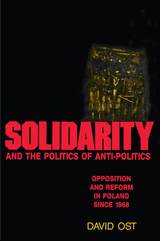 Solidarity and the Politics of Anti-Politics: Opposition and Reform in Poland since 1968
David Ost
Temple University Press, 1991 "For both academic analysts and political activists, this book offers useful lessons from the Polish experience with anti-politics and neocorporatism."
--Political Science Quarterly
Based on extensive use of primary sources, this book provides an analysis of Solidarity, from its ideological origins in the Polish "new left," through the dramatic revolutionary months of 1980-81, and up to the union's remarkable resurgence in 1988-89, when it sat down with the government to negotiate Poland's future. David Ost focuses on what Solidarity is trying to accomplish and why it is likely that the movement will succeed.
He traces the conflict between the ruling Communist Party and the opposition, Solidarity's response to it, and the resulting reforms. Noting that Poland is the one country in the world where "radicals of ‘68" came to be in a position to negotiate with a government about the nature of the political system, Ost asks what Poland tells us about the possibility for realizing a "new left" theory of democracy in the modern world.
As a Fulbright Fellow at Warsaw University and Polish correspondent for the weekly newspaper In These Times during the Solidarity uprising and a frequent visitor to Poland since then, David Ost has had access to a great deal of unpublished material on the labor movement. Without dwelling on the familiar history of August 1980, he offers some of the unfamiliar subtleties--such as the significance of the Szczecin as opposed to the Gdansk Accord--and shows how they shaped the budding union's understanding of the conflicts ahead. Unique in its attention to the critical, formative period following August 1980, this study is the most current and comprehensive analysis of a movement that continues to transform the nature of East European society.
"In his superb book, ...political scientist David Ost chronicles the trajectory of the Polish post-war opposition from its roots in the fascist resistance up to the actions of Solidarity in 19.... [He] astutely bridges academic disciplines, interweaving social theory with intellectual and political history to explain Solidarity's raison d'etre.... In an age when definitions of left and right have become obscured, Solidarity and the Politics of Anti-Politics stands out at a creative example of left thought."
--In These Times
"Ost contributes not only an explication of Polish political life, but he also presents a vision of democracy applicable to the Western world as a whole."
--Jewish Currents
"An invaluable contribution."
--Choice
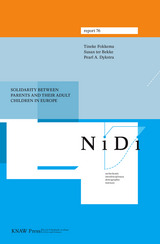 Solidarity between Parents and their Adult Children in Europe
Tineke Fokkema
Amsterdam University Press, 2008 At present, our knowledge of the current state of solidarity between parents and their adult children in Europe is limited. Insight into contemporary intergenerational solidarity is not only important for the well-being of individuals but is also of great interest to policy makers. Patterns of intergenerational solidarity are not only affected by social policies and services but also reveal a number of important social policy issues and dilemmas. Will encouraging labour force participation among women and older workers mean they have less time to care for their dependents? Should formal care services be further expanded to relieve the burden faced by family members with the risk that they start to replace informal care?
This report aims to contribute to this insight by providing a more differentiated picture of the strength, nature and direction of solidarity between parents and their adult children, its variation among European countries and its determinants. Our findings indicate that parent-child ties are quite strong. The majority of Europeans aged 50 and over live in close proximity and are in frequent contact with at least one of the children. Moreover, strong family care obligations still exist and a substantial amount of support is being exchanged between parents and their non-co resident children.
Interesting differences, however, emerge between individuals and countries. While fathers are more inclined to assist their children financially, mothers have more frequent contact and exchange more help in kind with their children. Being religious and having a large family have a positive impact on several dimensions of intergenerational solidarity. Parental divorce and a better socioeconomic position of parents and children, on the other hand, lead to a weakening of parent-child ties in many respects. Contrary to common belief, employed children show solidarity with their parents as much as those without a paid job. Differences in the nature of intergenerational solidarity between the European countries tend to follow the general division into an individualistic north and a familistic south.
 Solidarity Cities: Confronting Racial Capitalism, Mapping Transformation
Maliha Safri
University of Minnesota Press, 2025 Mapping the transformative effects of America’s urban solidarity economies Solidarity economies, characterized by diverse practices of cooperation and mutual support, have long played pivotal but largely invisible roles in fostering shared survival and envisioning alternatives to racial capitalism globally and in the United States. This book maps the thriving existence of these cooperative networks in three differently sized American cities, highlighting their commitment to cooperation, democracy, and inclusion and demonstrating the desire—and the pressing need—to establish alternative foundations for social and economic justice. Collectively authored by four social scientists, Solidarity Cities analyzes the deeply entrenched racial and economic divides from which cooperative networks emerge as they work to provide unmet basic needs, including food security, affordable housing, access to fair credit, and employment opportunities. Examining entities such as community gardens, credit unions, cooperatives, and other forms of economic solidarity, the authors highlight how relatively small yet vital interventions into public life can expand into broader movements that help bolster the overall well-being of their surrounding communities. Bringing together insights from geography, political economy, and political science with mapping and spatial analysis methodologies, surveys, and in-depth interviews, Solidarity Cities illuminates the extensive footprints of solidarity economies and the roles they play in communities. The authors show how these initiatives act as bulwarks against gentrification, exploitation, and economic exclusion, helping readers see them as part of the past, present, and future of more livable and just cities. Retail e-book files for this title are screen-reader friendly with images accompanied by short alt text and/or extended descriptions.
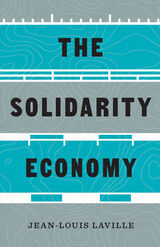 The Solidarity Economy
Jean-Louis Laville
University of Minnesota Press, 2023 Questioning the boundaries between politics and economics
Jean-Louis Laville’s large body of work has focused on an intellectual history of the concept of solidarity since the Industrial Revolution. In The Solidarity Economy, his most famous distillation of this work, Laville establishes how the formations of economic solidarities (unions, activism, and other forms of associationalism) reveal that the boundaries between politics and economics are porous and structured such that politics, ideally a pure expression of ethics and values, is instead integrated with economic concerns. Exploring the possibilities and long histories of association, The Solidarity Economy identifies the power of contemporary social and solidarity movements and examines the history of postcapitalist practices in which democratic demands invade the heart of the economy. The Solidarity Economy ranges in focus from workers associations in France dating back to the nineteenth century, to associations of African Americans and feminists in the United States in the late nineteenth and early twentieth centuries, to a Brazilian landless-worker coalition in the twentieth century. Studying solidarity associations over time allows us to examine how we can recombine the economic and political spheres to address dependencies and inequalities. Ultimately, The Solidarity Economy has global scope and inspiring examples of associations that deepen democracy.
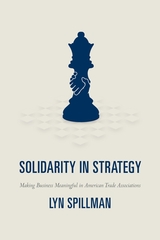 Solidarity in Strategy: Making Business Meaningful in American Trade Associations
Lyn Spillman
University of Chicago Press, 2012 Popular conceptions hold that capitalism is driven almost entirely by the pursuit of profit and self-interest. Challenging that assumption, this major new study of American business associations shows how market and non-market relations are actually profoundly entwined at the heart of capitalism. In Solidarity in Strategy, Lyn Spillman draws on rich documentary archives and a comprehensive data set of more than four thousand trade associations from diverse and obscure corners of commercial life to reveal a busy and often surprising arena of American economic activity. From the Intelligent Transportation Society to the American Gem Trade Association, Spillman explains how business associations are more collegial than cutthroat, and how they make capitalist action meaningful not only by developing shared ideas about collective interests but also by articulating a disinterested solidarity that transcends those interests. Deeply grounded in both economic and cultural sociology, Solidarity in Strategy provides rich, lively, and often surprising insights into the world of business, and leads us to question some of our most fundamental assumptions about economic life and how cultural context influences economic.
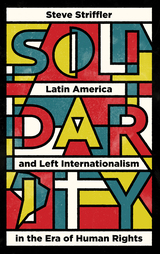 Solidarity: Latin America and the US Left in the Era of Human Rights
Steve Striffler
Pluto Press, 2018 How and why has solidarity changed over time? Why have particular strategies, tactics, and strands of internationalism emerged or re-emerged at particular moments? And how has solidarity shaped the history of the US left in particular?
In Solidarity, Steve Striffler addresses these key questions, offering the first history of US-Latin American solidarity from the Haitian Revolution to the present day. Striffler traces the history of internationalism through the Cold War, exploring the rise of human rights as the dominant current of international solidarity. He also considers the limitations of a solidarity movement today that inherited its organisational infrastructure from the human rights movements.
Moving beyond conventionally ahistorical analyses of solidarity, here Striffler provides a distinctive intervention in the history of progressive politics in both the US and Latin America, the past and present of US imperialism and anti-imperialism, and the history of human rights and labour internationalism.
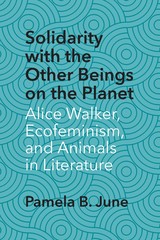 Solidarity with the Other Beings on the Planet: Alice Walker, Ecofeminism, and Animals in Literature
Pamela B. June
Northwestern University Press, 2020 For decades, Pulitzer Prize–winning author and activist Alice Walker has spoken out in defense of the oppressed. Her writings address the intersections of racist, sexist, heterosexist, classist, and, increasingly, speciesist oppressions, and she has made clear the importance of reducing violence and creating peace where possible. In light of Walker’s call to action, this book analyzes seven of her novels to offer a fresh reading situated at the complex intersection of critical race studies and critical animal studies.
Grounded in ecofeminist theory, this literary analysis examines Walker’s evolving views on animals in relation to her discussions of other oppressed groups. Pamela B. June argues that Walker’s fiction can help readers understand and perhaps challenge American culture’s mistreatment of nonhuman animals. Walker has withstood criticism for her decision to abandon vegetarianism, and this book also problematizes the slippery territory of viewing writers as moral guides. Solidarity with the Other Beings on the Planet will appeal to readers in literary studies, ecofeminist studies, African American studies, and critical animal studies.
Solidarity without Borders: Gramscian Perspectives on Migration and Civil Society
Edited by Óscar García Agustín and Martin Bak Jørgensen
Pluto Press, 2016 Solidarity without Borders examines the politics of migration at the ground-level, considering migrants not as an issue to be solved but as individual political agents, exploring the possibilities raised by alliances between migrants and trade unions, worker organizations, and other constituencies. Applying Gramsci’s theories of modern resistance and taking up the Gezi Park Protests in Turkey, social movements in Ireland, and the Lampedusan Libyan migrant group as case studies, Solidarity without Borders demonstrates how new solidarity relations are shaped and how these may construct a new common ground for developing political alternatives.
 Solidarity's Secret: The Women Who Defeated Communism in Poland
Shana Penn
University of Michigan Press, 2006 "This important book explores one of the most pivotal periods in Polish history and deals with a topic nearly everyone else overlooked. Shana Penn's study begins with a simple question I wish I had thought more about myself: once the leadership of Solidarity had been arrested during the 1981 military coup, who kept the movement alive over the following months and years? The answer will surprise you, as Penn delves into the lives of seven Polish women activists who rose to the call, set about saving an entire political movement, and in time turned themselves into some of the most powerful women in Poland today."
---Lech Walesa, former President of Poland and winner of the 1983 Nobel Peace Prize
Solidarity's Secret is the first book to record the crucial yet little-known role women played in the rise of an independent press in Poland and in the fall of that country's communist government.
Shana Penn pieces together a decade of interviews with the women behind the Polish pro-democracy movement-women whose massive contributions were obscured by the more public successes of their male counterparts.
Penn reveals the story of how these brave women ran Solidarity and the main opposition newspaper, Tygodnik Mazowsze, while prominent men like Lech Walesa were underground or in jail during the 1980s martial law years. The same women then went on to play influential roles in post-communist Poland.
Solidarity's Secret gives us a richly detailed story-within-a-story-unheard of not only in the West, but until recently even within Poland itself-from one of the most important eras in modern history.
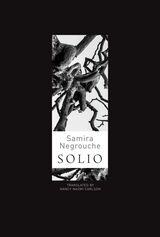 Solio
Samira Negrouche
Seagull Books, 2024 Poetry that serves as an evocative portrayal of diverse landscapes and cultures.
In these otherworldly poetry sequences, Samira Negrouche reminds us that “all life is movement,” where “time passes through me / beings pass through me / they are me / I am them.” The “I” is representative of one voice, three voices, all voices, all rooted in movement as their bodies brush past one another, brush against thresholds of time and space. Everything is in flux—including the dream-like landscapes at the borders of borders—as the poet seeks to recover parts of self and memory, on both a personal and universal level. In these poems, history-laden locales such as Algiers, Timbuktu, N’Djamena, Cotonou, Zanzibar, Cape Town, and Gorée are evoked. Even the language, expertly and sensitively translated by Nancy Naomi Carlson, refuses to be pinned down, as it loops back on itself. At times contradictory, at times fractured in meaning, syntax, and diction, the playful language is riddled with “restless” verbs. In the end, the “I” takes on prophetic overtones, instilling hope for the future.
 Solitaire of Love
Cristina Peri Rossi
Duke University Press, 2000 Solitaire of Love, an achingly lyrical novel by internationally acclaimed Latin American writer Cristina Peri Rossi, explores the sense of emotional exile that sexual passion can evoke. Only the fourth book of Peri Rossi’s to be translated into English—the others are The Ship of Fools, A Forbidden Passion, and Dostoevsky’s Last Night—Solitaire of Love showcases the mesmerizingly rhythmic language that has become the trademark of this award-winning and prolific author of novels, essay collections, poetry, and short stories.
Tracing the course of a relationship as it evolves into uncompromising self-destruction, the narrator of Solitaire of Love becomes addicted to his own passion and to the body of his beloved. Erotic, romantic love becomes bewitchment, producing a heightened state where time is measured in the rhythms of a chosen body and pride becomes subservient to obsession. The specifics of this other body trump any claim to ordinary existence for the narrator, as sex becomes a kind of idolatrous slavery and love becomes a mechanism for self-immolation. As in Peri Rossi’s other works, an ambiguous sense of gender and sexuality arise from her uniquely experimental prose and mystically erotic logic. Language is subsumed into this process as a way to bear witness, to transfix and capture the love object. The limbo of obsession, as described by Peri Rossi, creates an infantilizing brand of loneliness, broken by flashes of joy, insight, fury, and fear.
This novel was originally published in Spanish in 1988.
Solitary
Maurizio Torchio
Seagull Books, 2018 We learn more every year about the damaging effects of solitary confinement. This unquestionably cruel and unusual punishment leaves prisoners with no human contact, sometimes for years at a time, and it nearly always leads to lasting trauma. In Solitary, Maurizio Torchio takes on the daunting task of narrating this most isolating experience, one in which the captive is not only cut off from society in the walls of a prison, but from human contact itself. Within this closed world seemingly out of time, the prisoner still yearns for human contact. Ultimately, this desire is a form of hope, reminding us that ineluctable human qualities survive even in the most inhumane spaces.
 The Solitary Self: Individuality in the Ancrene Wisse
Linda Georgianna
Harvard University Press, 1981 The Ancrene Wisse is a spiritual guide for female recluses, written at the request of three young anchoresses who were voluntarily enclosed for life within small cells. With rare sensitivity and discernment, Linda Georgianna analyzes this complex and skillfully composed treatise and examines its detailed portrayal of the rich, sometimes rewarding and sometimes frustrating inner life of the solitary. Georgianna sees in the author’s practical and spiritual counsel, ranging from advice on owning a cat to the confession of sin, an assumption that exterior and interior realities are inextricably bound in the solitary life, which becomes a highly self-conscious journey through human experience.
The Solitary Self offers both a reading of this linguistically difficult text and a study of those contemporary intellectual and cultural concerns—particularly the widespread interest in the psychology of sin, confession, and repentance—which help to explain the Ancrene Wisse author’s insistence upon self-awareness and individuality in the solitary life.
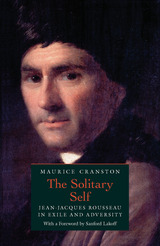 The Solitary Self: Jean-Jacques Rousseau in Exile and Adversity
Maurice Cranston
University of Chicago Press, 1997 A monumental achievement, Maurice Cranston's trilogy provides the definitive account of Jean-Jacques Rousseau's turbulent life. Now available in paperback, this final volume completes a masterful biography of one of the most important philosophers of all time. The Solitary Self traces the last tempestuous years of Rousseau's life.
"The Solitary Self is a fitting coda to a magisterial work. Cranston . . . is a compelling stylist who narrates Rousseau's tribulations with a mixture of compassion and dry humor."—Thomas Pavel, Wall Street Journal
"Cranston not only recreates for his readers a rounded view of Rousseau himself, he sets it firmly in the social and political context of Europe's ancien regime. . . . An engrossing work of history."—John Gray, New Statesman
"Cranston's painstaking archival research and lucid style yield the most detailed and thoroughly documented biography of Rousseau written in English. His epilogue masterfully sums up Rousseau's importance as political philosopher and initiator of romantic sensibilities."—Choice
"Anyone curious about the paradoxes of a most paradoxical man will not go wrong by starting with this invaluable biography."—James Miller, Washington Post Book World
"As absorbing as a picaresque novel."—Naomi Bliven, New Yorker
"A monument of scholarship. . . . This amazing biography, like Boswell's account of Johnson, recreates the daily life of Rousseau: what he did, who he saw, what he said, what he wrote. . . . We may be quite confident that we hold in our hands the authoritative account of this life. The definitive Rousseau."—Isaac Kramnick, New Republic
Maurice Cranston (1920-1993), a distinguished scholar and recipient of the James Tait Black Memorial Prize for his biography of John Locke, was professor of political science at the London School of Economics. His numerous books include The Romantic Movement and Philosophers and Pamphleteers, and translations of Rousseau's The Social Contract and Discourse on the Origins of Inequality.
Solitary Song: An Autobiography
Pauline Koner
Duke University Press, 1989 In this well-illustrated work, Pauline Koner “traces the course” of her remarkable career from her days as a student of Michel Fokine in the 1920s, through further studies with Angel Cansino and the brilliantly influential Michio Ito, to a period as a dance soloist before World War II that make her reputation. After the war she entered a productive collaboration with Doris Humphrey, and then began the epochal performances with Jose Limon. She continued to perform until 1972, and her influence as a teacher and choreographer is still widely felt. Her book is an instructive and charming chronicle of this remarkable career, as well as a record of performances and interpretations that have gone far to mold modern dance into its present state of grace.
Solitude: Art And Symbolism In The National Basque Monument
Carmelo Urza
University of Nevada Press, 1993 Urza discusses the genesis of the National Basque Monument to the Basque Sheepherder that is located in Reno, Nevada. He also describes the competition held to determine the monument's design and the debates arising from the modern sculpture created by renowned Basque artist Nestor Basterrextea. Urza examines the arguments of those who favored the selection of a figurative, traditional symbol and those who preferred a modern, forward-looking symbol. He utilizes this discussion to explore the evolution of Basque ethnicity and its relationship to society.
 Solitude in Society: A Sociological Study in French Literature
Robert Sayre
Harvard University Press, 1978 Robert Sayre brings a special kind of literary intelligence to his study of the problem of isolation in modern society. He gives us a spirited instance of a sociological approach to literature, more specifically a Marxist approach that forcefully links a literary theme to a social fact. In contrast to the existentialist interpretation of alienation (in which isolation is the eternal dilemma of Man), a Marxist analysis interprets solitude in society as precisely a modern phenomenon, directly related to the evolution of advanced capitalism.
Sayre first discusses the notion of solitude as it is treated in classical literature and carries it through to the nineteenth century, with emphasis on the literary history of France. In the second part of the book he presents detailed interpretations of five twentieth-century French novels (by Proust, Malraux, Bernanos, Camus, and Sarraute). Controversial, but persuasive, these in-depth studies are certain to influence the reader's way of looking at the writers in question.
Solitudes
Goffredo Parise
Northwestern University Press, 1998 Goffredo Parise's quest to capture the essence of human sentiment in prose-poem form resulted in the publication in 1972 of SILLABARIO N. 1, which contained 22 stories with titles proceeding alphabetically. Characterized by the same clarity found in ABECEDARY, SOLITUDES is a series of exquisite miniatures that form a bittersweet exploration of the joy and the melancholy of life.
 Solo: The Everything Guide to Writing, Performing, and Producing Your One-Person Show
Arlene Malinowski and Julie Ganey
Northwestern University Press, 2026 A comprehensive guide for anyone interested in creating solo performances
The art of solo performance has exploded in the last twenty years as an immediate and accessible art form. The number of solo festivals grows every year, and artists are hungry for the opportunity to center their own voices and experiences. Solo is designed to feed that hunger.
Seasoned theater educators and performers Arlene Malinowski and Julie Ganey have compiled an invaluable guide for students and practitioners alike. Topics include high-stakes narratives, compelling characters, and the role of narrators, as well as practical exercises, interviews with performers at every stage of their careers, and examples from real one-person shows. Performers will also find advice on collaborating with directors, incorporating technical elements, and producing and marketing strategies.
Whether you’re just starting out or are a seasoned professional looking to refine your show-in-progress, Solo is an essential volume for anyone ready to bring their story to life onstage.
solo/black/woman: scripts, interviews, and essays
Edited by E. Patrick Johnson and Ramón H. Rivera-Servera and with a foreword by D. Soyini Madison
Northwestern University Press, 2013 The collection solo/black/woman features seven solo performances by emerging and established feminist performance artists from the past three decades. The scripts are accompanied by interviews and critical essays, as well as a DVD showcasing the performances. The performers range from Robbie McCauley and Rhodessa Jones, who were at the leading edge of the solo monologue boom of the 1980s, to new talents such as Stacey Robinson and Misty DeBerry. Collectively, their work displays an enormous range of aesthetic approach and thematic emphasis. The anthology offers a comprehensive, stimulating introduction to the beauty, richness, urgency, pleasure, and political promise of black feminist performance.
 Solomon and Marcolf
Jan M. Ziolkowski
Harvard University Press, 2008 Solomon and Marcolf is known for being both important and mysterious. It pits wise Solomon, famous from the Bible, against a wily peasant named Marcolf. One of its two parts is a dialogue, in which the king and jester, sage and fool, prophet and blasphemer bandy back and forth questions and comments. Whereas Solomon is solemn and pompous, Marcolf resorts to low language and earthy topics. The other part comprises twenty short chapters in which Marcolf tricks Solomon time and again. These episodes are as impudent and scatological as is the dialogue. Together, the two parts constitute a rudimental prose novel or “rogue biography.”
Cited by Bakhtin in Rabelais and His World, Solomon and Marcolf is widely known by name. But until now it has not been translated into any modern language. The present volume offers an introduction, followed by the Latin and English, detailed commentary, and reproductions of woodcut illustrations from the 1514 edition. Appendixes help readers understand the origins and influence of a work that was composed around 1200, that attained its greatest popularity in the fifteenth and sixteenth centuries, and that has the potential still today to delight and instruct.
 Solomon and Marcolf: Vernacular Traditions
Jan M. Ziolkowski
Harvard University Press, 2022 The Latin prose Solomon and Marcolf, enigmatic in origins, has been a puzzle from long before the sixteenth-century French author François Rabelais through the twentieth-century Russian critic Bakhtin to today. Though often called a dialogue, the second of its two parts comprises a rudimentary novel with twenty episodes. In 2009 the “original” received at last an edition and translation with commentary as the first volume in the Harvard Studies in Medieval Latin series.
Solomon and Marcolf: Vernacular Traditions, the fourth volume in the series, displays the mysteries of the tradition. Solomon relates to the biblical king, but did Marcolf originate in Germanic or Eastern regions? Here lovers of literature and folklore may explore, in English for the first time, relevant texts, from the twelfth through the early eighteenth century. These astonishingly varied and fascinating pieces, from Iceland in the North and West through Russia in the East and Italy in the South, have been translated from medieval and early modern French, Russian, German, Icelandic, Danish, and Italian. The book opens with snapshots of two nineteenth-century polymaths, the Englishman John M. Kemble and Russian Aleksandr Veselovskii, whose hypotheses can now be evaluated. An appendix documents awareness of Solomon and Marcolf in late medieval and early modern times.
 Solomon and Marcolf: Vernacular Traditions
Jan M. Ziolkowski
Harvard University Press, 2022 The Latin prose Solomon and Marcolf, enigmatic in origins, has been a puzzle from long before the sixteenth-century French author François Rabelais through the twentieth-century Russian critic Bakhtin to today. Though often called a dialogue, the second of its two parts comprises a rudimentary novel with twenty episodes. In 2009 the “original” received at last an edition and translation with commentary as the first volume in the Harvard Studies in Medieval Latin series.
Solomon and Marcolf: Vernacular Traditions, the fourth volume in the series, displays the mysteries of the tradition. Solomon relates to the biblical king, but did Marcolf originate in Germanic or Eastern regions? Here lovers of literature and folklore may explore, in English for the first time, relevant texts, from the twelfth through the early eighteenth century. These astonishingly varied and fascinating pieces, from Iceland in the North and West through Russia in the East and Italy in the South, have been translated from medieval and early modern French, Russian, German, Icelandic, Danish, and Italian. The book opens with snapshots of two nineteenth-century polymaths, the Englishman John M. Kemble and Russian Aleksandr Veselovskii, whose hypotheses can now be evaluated. An appendix documents awareness of Solomon and Marcolf in late medieval and early modern times.
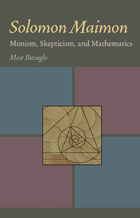 Solomon Maimon: Monism, Skepticism, and Mathematics
Meir Buzaglo
University of Pittsburgh Press, 2002 The philosophy of Solomon Maimon (1753–1800) is usually considered an important link between Kant’s transcendental philosophy and German idealism. Highly praised during his lifetime, over the past two centuries Maimon’s genius has been poorly understood and often ignored. Meir Buzaglo offers a reconstruction of Maimon’s philosophy, revealing that its true nature becomes apparent only when viewed in light of his philosophy of mathematics.
This provides the key to understanding Maimon’s solution to Kant’s quid juris question concerning the connection between intuition and concept in mathematics. Maimon’s original approach avoids dispensing with intuition (as in some versions of logicism and formalism) while reducing the reliance on intuition in its Kantian sense. As Buzaglo demonstrates, this led Maimon to question Kant’s ultimate rejection of the possibility of metaphysics and, simultaneously, to suggest a unique type of skepticism.
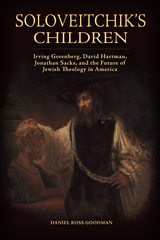 Soloveitchik's Children: Irving Greenberg, David Hartman, Jonathan Sacks, and the Future of Jewish Theology in America
Daniel Ross Goodman
University of Alabama Press, 2023 A revealing account of the three main disciples of Rabbi Joseph B. Soloveitchik, an essential figure in Orthodox Judaism in America
Orthodox Judaism is one of the fastest-growing religious communities in contemporary American life. Anyone who wishes to understand more about Judaism in America will need to consider the tenets and practices of Orthodox Judaism: who its adherents are, what they believe in, what motivates them, and to whom they turn for moral, intellectual, and spiritual guidance. Among those spiritual leaders none looms larger than Rabbi Joseph B. Soloveitchik, heir to the legendary Talmudic dynasty of Brisk and a teacher and ordainer of thousands of rabbis during his time as a Talmud teacher at Yeshiva University from the Second World War until the 1980s. Soloveitchik was not only a Talmudic authority but a scholar of Western philosophy. While many books and articles have been written about Soloveitchik’s legacy and his influence on American Orthodoxy, few have looked carefully at his disciples in Torah and Talmud study, and even fewer at his disciples in Jewish thought and philosophy. Soloveitchik’s Children: Irving Greenberg, David Hartman, Jonathan Sacks, and the Future of Jewish Theology in America is the first book to study closely three of Soloveitchik’s major disciples in Jewish thought and philosophy: Rabbis Irving (“Yitz”) Greenberg, David Hartman, and Jonathan Sacks. Daniel Ross Goodman narrates how each of these three major modern Jewish thinkers learned from and adapted Soloveitchik’s teachings in their own ways, even while advancing his philosophical and theological legacy. The story of religious life and Judaism in contemporary America is incomplete without an understanding of how three of the most consequential Jewish thinkers of this generation adapted the teachings of one of the most consequential Jewish thinkers of the previous generation. Soloveitchik’s Children tells this gripping intellectual and religious story in a learned and engaging manner, shining a light on where Jewish religious thought in the United States currently stands—and where it may be heading in future generations.
Soluble Fish
Mary Jo Firth Gillett
Southern Illinois University Press, 2007 Soluble Fish transports readers to a place of discovery, exploring issues of borders, familial and love relationships, and other aspects of being human. Mary Jo Firth Gillett layers her poems in rich metaphor as she searches for meaning in everyday life. Contemplating a range of topics from teaching poetry to watching her father filet a fish, Gillett’s humorous and playful collection celebrates language and life.
The Soluble Hour
Hillary Gravendyk
Omnidawn, 2017 In Hillary Gravendyk’s The Soluble Hour, the speaker sings with visionary passion how the beloved and dear ones will soon be without her and laments for their imminent grief. But being in extremis pulls the voice towards testimony of unquestioned love, a recollection of landscapes Californian and otherwise, and previous selves. The poet wields her deep solitude as the measure of truth and conviction, the self that accepts its own impermanence.
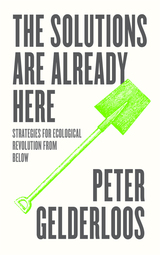 The Solutions are Already Here: Strategies of Ecological Revolution from Below
Peter Gelderloos
Pluto Press, 2022 Are alternative energies and Green New Deals enough to deliver environmental justice? Peter Gelderloos argues that international governmental responses to the climate emergency are structurally incapable of solving the crisis. But there is hope.
Across the world, grassroots networks of local communities are working to realize their visions of an alternative revolutionary response to planetary destruction, often pitted against the new megaprojects promoted by greenwashed alternative energy infrastructures and the neocolonialist, technocratic policies that are the forerunners of the Green New Deal.
Gelderloos interviews food sovereignty activists in Venezuela, Indigenous communities reforesting their lands in Brazil and anarchists fighting biofuel plantations in Indonesia, looking at the battles that have cancelled airports, stopped pipelines, and helped the most marginalized to fight borders and environmental racism, to transform their cities, to win a dignified survival.
A Solutions Manual for General Equilibrium, Overlapping Generations Models, and Optimal Growth Theory
Truman F. Bewley
Harvard University Press, 2011 This Solutions Manual contains answers to most of the problems in General Equilibrium, Overlapping Generations Models, and Optimal Growth Theory. Truman F. Bewley’s indispensable textbook—a cornerstone of courses on microeconomics, general equilibrium theory, and mathematical economics—covers the main premises behind insurance, capital theory, growth theory, and social security. Detailed explanations provide guidance to advanced undergraduate and graduate students, leading to in-depth understanding of Bewley’s unified approach to macroeconomics theory.
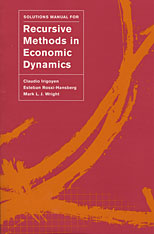 Solutions Manual for Recursive Methods in Economic Dynamics
Claudio Irigoyen, Esteban Rossi-Hansberg, and Mark L. J. Wright
Harvard University Press, 2002 This solutions manual is a valuable companion volume to the classic textbook Recursive Methods in Economic Dynamics by Nancy L. Stokey, Robert E. Lucas, Jr., and Edward C. Prescott. The exercises in the Stokey et al. book are integral to the text, and thus, a reader cannot fully appreciate the text without understanding the results developed in the exercises. This manual provides detailed answers to the central exercises in Recursive Methods.
The authors’ selection of exercises is designed to maximize the reader’s understanding of Recursive Methods. Solutions are presented to every question in the core chapters on recursive methods, as well as most questions from the chapters on mathematical background. Some questions from the chapters on applications of these techniques to economic models have been reserved so as to provide instructors with a crucial “test bank” of questions.
Efficient and lucid in approach, this manual will greatly enhance the value of Recursive Methods as a text for self-study.
Solutions Manual to Elements of Econometrics
Jan Kmenta
University of Michigan Press, 1997 The Solutions Manual to Elements of Econometrics, Second Edition provides chapter solutions to the exercises in the college textbook: Elements of Econometrics, Second Edition by Jan Kmenta.
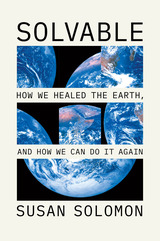 Solvable: How We Healed the Earth, and How We Can Do It Again
Susan Solomon
University of Chicago Press, 2024 A compelling and pragmatic argument: Solutions to yesterday’s environmental problems reveal today’s path forward.
We solved planet-threatening problems before, Susan Solomon argues, and we can do it again. Solomon knows firsthand what those solutions entail. She first gained international fame as the leader of an expedition to Antarctica in 1986, making discoveries that were key to healing the damaged ozone layer. She saw a path—from scientific and public awareness to political engagement, international agreement, industry involvement, and effective action. Solomon, an atmospheric scientist and award-winning author, connects this career-defining triumph to the inside stories of other past environmental victories—against ozone depletion, smog, pesticides, and lead—to extract the essential elements of what makes change possible.
The path to success begins when an environmental problem becomes both personal and perceptible to the general public. Lawmakers, diplomats, industries, and international agencies respond to popular momentum, and effective change takes place in tandem with consumer pressure when legislation and regulation yield practical solutions. Healing the planet is a long game won not by fear and panic but by the union of public, political, and regulatory pressure.
Solvable is a book for anyone who has ever despaired about the climate crisis. As Solomon reminds us, doom and gloom get us nowhere, and idealism will only take us so far. The heroes in these stories range from angry mothers to gang members turned social activists, to upset Long Island birdwatchers to iconoclastic scientists (often women) to brilliant legislative craftsmen. Solomon’s authoritative point of view is an inspiration, a reality check, a road map, and a much-needed dose of realism. The problems facing our planet are Solvable. Solomon shows us how.
Solved Problems in Dynamical Systems and Control
J. Tenreiro-Machado
The Institution of Engineering and Technology, 2017 This book presents a collection of exercises on dynamical systems, modelling and control. Each topic covered includes a summary of the theoretical background, problems with solutions, and further exercises.
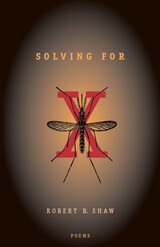 Solving For X: Poems
Robert B. Shaw
Ohio University Press, 2002 In Solving for X, his award-winning collection of new poems, Robert B. Shaw probes the familiar and encounters the unexpected; in the apparently random he discerns a hidden order. Throughout, Shaw ponders the human frailties and strengths that continue to characterize us, with glances at the stresses of these millennial times that now test our mettle and jar our complacency. Often touched with humor, his perceptions are grounded in devoted observation of the changing world. As in his previous collections, Shaw in these poems unites conversational vigor with finely crafted metrical lines. Final judge Rachel Hadas says it best: “Solving for X is droll and puzzled, elegiac and satirical in equal measure. Shaw’s attention alights on a variety of more and less tangible things—a seed catalog, a shirt, a bad book, a request for a letter of recommendation, an irritating colleagues’s death—which his masterfully packed lines then proceed to light up with deliberate and unforgettable authority.”
 Solving Problems in Technical Communication
Edited by Johndan Johnson-Eilola and Stuart A. Selber
University of Chicago Press, 2012 The field of technical communication is rapidly expanding in both the academic world and the private sector, yet a problematic divide remains between theory and practice. Here Stuart A. Selber and Johndan Johnson-Eilola, both respected scholars and teachers of technical communication, effectively bridge that gap. Solving Problems in Technical Communication collects the latest research and theory in the field and applies it to real-world problems faced by practitioners—problems involving ethics, intercultural communication, new media, and other areas that determine the boundaries of the discipline. The book is structured in four parts, offering an overview of the field, situating it historically and culturally, reviewing various theoretical approaches to technical communication, and examining how the field can be advanced by drawing on diverse perspectives. Timely, informed, and practical, Solving Problems in Technical Communication will be an essential tool for undergraduates and graduate students as they begin the transition from classroom to career.
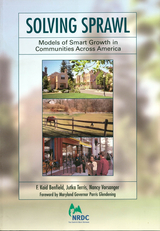 Solving Sprawl: Models Of Smart Growth In Communities Across America
NRDC
Island Press, 2003 Solving Sprawl shines a spotlight on American communities that are applying smart growth principles in successfully addressing the problem of sprawl. It offers examples that illustrate key concepts and tells the story of how this new approach to development has caught hold across America. It reports the good news that successful smart-growth developments can now be found throughout the country, with communities large and small implementing a wide array of innovative solutions.
The book details 35 diverse smart-growth stories from around the United States and celebrates those who are leading the way in solving sprawl –state and local officials who have embraced new forms of development, corporations who are choosing to redevelop abandoned city properties rather than build new corporate campuses on undeveloped land, faith-based organizations that have been instrumental in redeveloping inner-city neighborhoods, visionary architects and planners who are showing how to design communities and regions that solve sprawl. Each chapter showcases a wide variety of solutions with projects of all sizes in urban, suburban, and exurban settings including Adidas Village in Portland, Oregon; the MCI Center in Washington, D.C.; Quality Hill in Kansas City, Kansas; Suisun City redevelopment in Suisun City, California; growth control initiatives in Boulder, Colorado; Pearl Lake in Almira Township, Michigan; and more.
Interspersed throughout are sidebars that offer additional examples and reminders of the sprawl-related environmental and social problems that smart growth helps overcome. The book also includes a glossary of planning terms and land-use concepts.
Instead of obliterating our countryside while jeopardizing our financial reserves and weakening our social bonds, we are learning how to develop and grow in ways that better reflect our values. Solving Sprawl brings a renewed sense of hope and inspiration about smart growth and its potential for creating a more livable country.
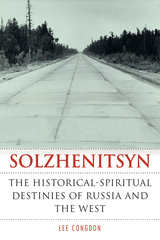 Solzhenitsyn: The Historical-Spiritual Destinies of Russia and the West
Lee Congdon
Northern Illinois University Press, 2017 This study of Aleksandr Solzhenitsyn (1918–2008) and his writings focuses on his reflections on the religiopolitical trajectories of Russia and the West, understood as distinct civilizations. What perhaps most sets Russia apart from the West is the Orthodox Christian faith. The mature Solzhenitsyn returned to the Orthodox faith of his childhood while serving an eight-year sentence in the GULag Archipelago. He believed that when men forget God, communism or a similar catastrophe is likely to be their fate. In his examination of the author and his work, Lee Congdon explores the consequences of the atheistic socialism that drove the Russian revolutionary movement.
Beginning with a description of the post-revolutionary Russia into which Solzhenitsyn was born, Congdon outlines the Bolshevik victory in the civil war, the origins of the concentration camp system, and the Bolsheviks’ war on Christianity and the Russian Orthodox Church. He then focuses on Solzhenitsyn’s arrest near the war’s end, his time in the labor camps, and his struggle with cancer. Congdon describes his time in exile and increasing alienation from the Western way of life, as well as his return home and his final years. He concludes with a reminder of Solzhenitsyn’s warning to the West—that it was on a path parallel to that which Russia had followed into the abyss. This important study will appeal to scholars and educated general readers with an interest in Solzhenitsyn, Russia, Christianity, and the fate of Western civilization.
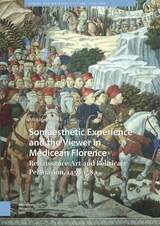 Somaesthetic Experience and the Viewer in Medicean Florence: Renaissance Art and Political Persuasion, 1459-1580
Allie Terry-Fritsch
Amsterdam University Press, 2020 Viewers in the Middle Ages and Renaissance were encouraged to forge connections between their physical and affective states when they experienced works of art. They believed that their bodies served a critical function in coming to know and make sense of the world around them, and intimately engaged themselves with works of art and architecture on a daily basis. This book examines how viewers in Medicean Florence were self-consciously cultivated to enhance their sensory appreciation of works of art and creatively self-fashion through somaesthetics. Mobilized as a technology for the production of knowledge with and through their bodies, viewers contributed to the essential meaning of Renaissance art and, in the process, bound themselves to others. By investigating the framework and practice of somaesthetic experience of works by Benozzo Gozzoli, Donatello, Benedetto Buglioni, Giorgio Vasari, and others in fifteenth- and sixteenth century Florence, the book approaches the viewer as a powerful tool that was used by patrons to shape identity and power in the Renaissance.
Somali Nationalism: International Politics and the Drive for Unity in the Horn of Africa
Saadia Touval
Harvard University Press In this first book on the emergence of Somali nationalism, Saadia Touval draws on extensive research and firsthand knowledge to explore the complex and dangerous situation in easternmost Africa. He describes the land and people, the spread of Somali tribes with their Moslem culture, the arrival of Europeans during the nineteenth century, the development of national consciousness, politics in the new Somali Republic and French Somaliland, problems presented by the Somalis of Kenya and Ethiopia, and the overriding question of boundary lines. Finally, he discusses the prospects for a peaceful solution.
 Somalia - the Untold Story: The War Through the Eyes of Somali Women
Edited by Judith Gardner and Judy El Bushra
Pluto Press, 2004 Somalia came to the world's attention in 1992 when television and newspapers began to report on the terrifyingly violent war and the famine that resulted. Half a million Somalis died that year, and over a million fled the country. Cameras followed US troops as they landed on the beaches at Mogadishu to lead what became an ill-fated UN intervention to end hunger and restore peace.
In this book, Somali women write and talk about the war, their experiences and the unacceptable choices they often faced. They explain clearly, in their own words, the changes, challenges – and sometimes the opportunities – that war brought, and how they coped with them.
Key themes include the slaughter and loss of men, who were the prime target for killings; rape and sexual violence as a weapon of war; changing roles in the family and within the pastoralist economy; women mobilising for peace; and leading social recovery in a war-torn society.
This book is not only an important record of women's experience of war, but also provides researchers and students of gender and conflict with rare first hand accounts highlighting the impact of war on gender relations, and women's struggle for equal political rights in a situation of state collapse.
Somalis Abroad: Clan and Everyday Life in Finland
Stephanie R. Bjork
University of Illinois Press, 2017 Drawing on a wealth of ethnographic detail, Stephanie Bjork offers the first study on the messy role of clan or tribe in the Somali diaspora, and the only study on the subject to include women's perspectives. Somalis Abroad illuminates the ways clan is contested alongside ideas of autonomy and gender equality, challenged by affinities towards others with similar migration experiences, transformed because of geographical separation from family members, and leveraged by individuals for cultural capital. Challenging prevailing views in the field, Bjork argues that clan-informed practices influence everything from asylum decisions to managing money. The practices also become a pattern that structures important relationships via constant--and unwitting--effort.
 Somalis in the Twin Cities and Columbus: Immigrant Incorporation in New Destinations
Stephanie Chambers
Temple University Press, 2017 In the early 1990s, Somali refugees arrived in Minneapolis and St. Paul, Minnesota. Later in the decade, an additional influx of immigrants arrived in a second destination of Columbus, Ohio. These refugees found low-skill jobs in warehouses and food processing plants and struggled as social “outsiders,” often facing discrimination based on their religious traditions, dress, and misconceptions that they are terrorists. The immigrant youth also lacked access to quality educational opportunities. In Somalis in the Twin Cities and Columbus, Stefanie Chambers provides a cogent analysis of these refugees in Midwestern cities where new immigrant communities are growing. Her comparative study uses qualitative and quantitative data to assess the political, economic, and social variations between these urban areas. Chambers examines how culture and history influenced the incorporation of Somali immigrants in the U.S., and recommends policy changes that can advance rather than impede incorporation. Her robust investigation provides a better understanding of the reasons these refugees establish roots in these areas, as well as how these resettled immigrants struggle to thrive.
 Somatic Movement Dance Therapy: The Healing Art of Self-regulation and Co-regulation
Amanda Williamson
Intellect Books, 2023 A comprehensive account of the relationship between somatics, spirituality, and physiology.
In this detailed anatomical text, Amanda Williamson shares her therapeutic practice, rooted in self-regulation, co-regulation, cardio-ception, breath awareness, soft-tissue-rolling in gravity, fascial release, and the importance of parasympathetic ease-and-release. The book attends to key body systems in detail, and how sense-perception of living tissues increases fluid flow and supports fascial health. It is grounded in detailed experiential encounters with afferent sensing, consciously sensed motor expression, interoception, proprioception, the vagus nerve, the cranial bones and nerves, scapulae, sacrum, fascia, and the nervous system. Clients and students share qualitative refl ections after sense-perceiving the state of their living tissues and easing tight tonus through self-regulatory movement.
Somatic Movement Dance Therapy pays detailed attention to applied experiential anatomy and physiology, improvisation underpinned by somatic awareness, the art of directing one’s awareness and attending gently to living breathing tissues, resting egoic mind and settling in the heart. The integral importance and compassion of the co-regulatory embodied witness is shared in this book. Williamson shares processes throughout that ease stress, depression, and anxiety.
Collective foreword from Sarah Whatley, Daniel Deslauriers, Celeste Snowber, and Karin Rugman.
Somatic Selection and Adaptive Evolution: On the Inheritance of Acquired Characters
E. J. Steele
University of Chicago Press, 1981 If the thesis advanced in this book can be corroborated by experiments currently being carried out in a number of laboratories around the world, it will signify an intellectual revolution and a landmark in the history of science. E. J. Steele here suggests that on the basis of his own immunological research, the theory originally put forward by Lamarck 170 years ago and subsequently rejected—the notion that organisms may transmit characters acquired in their lifetimes to their offspring—may in fact be right. In the new postscript to the second edition, Steele presents his latest findings and replies to the enormous body of criticism his research has engendered.
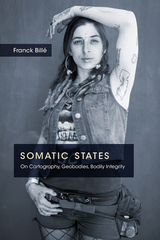 Somatic States: On Cartography, Geobodies, Bodily Integrity
Franck Billé
Duke University Press, 2025 In Somatic States, Franck Billé examines the conceptual link between the nation-state and the body, particularly the visceral and affective attachment to the state and the symbolic significance of its borders. Billé argues that corporeal analogies to the nation-state are not simply poetic or allegorical but reflect a genuine association of the individual body with the national outline—an identification greatly facilitated by the emergence of the national map. Billé charts the evolution of cartographic practices and the role that political maps have played in transforming notions of territorial sovereignty. He shows how states routinely and effectively mobilize corporeal narratives, such as framing territorial loss through metaphors of dismemberment and mutilation. Despite the current complexity of geopolitics and neoliberalism, Billé demonstrates that corporeality and bodily metaphors remain viscerally powerful because they offer a seemingly simple way to apprehend the abstract nature of the nation-state.
Somatics in Dance, Ecology, and Ethics: The Flowing Live Present
Sondra Fraleigh
Intellect Books, 2024 Elucidates the field of movement and dance somatics.
Somatics in Dance, Ecology, and Ethics explores the relationships between self, world, and earth to understand the experience of being alive and corporeal. In doing so, Sondra Fraleigh develops a philosophy of an ethical world gaze that promises to enliven the senses. Chapters borrow from wide-ranging intellectual influences—phenomenology, Buddhism, butoh, dialogics, aesthetics, poetry, feminism, ecology, and more—Fraleigh describes the ways somatics can help people to feel well, practice empathetic communication, and recognize the psychic, unpredictable edges of experience as they move. An interview with Amanda Williamson complements the chapters. “The body is the fascinating home for all our dispositions,” Fraleigh tells hers. “Spiritual qualities are embodied. We dance and sing them into being.”
Sombra en plata: poemas / Shadow in Silver: Poems: A Bilingual Edition
Olivia Maciel
Swan Isle Press, 2005 In her fourth book of poems, Mexican-born Olivia Maciel lyrically evokes another America. She writes with the critical and contemplative eye of a poet, revealing mystery and beauty in places dark and light, near and far. The richly allusive language of Sombra en plata / Shadow in Silver is a terrain at times steep, fevered, and sensual: a harmony of words scented of earth and sky. Her poems are catalysts for transformation, challenging the reader with a vision of a world where myth and the quotidian are intimately intertwined. Exploring complex and unpredictable landscapes, Maciel is both a guide and fellow traveler on a fascinating journey through memories and emotions. Maciel eloquently draws from both collective and personal histories, and this new bilingual compilation will be a pleasure to turn to again and again.
Some Are Drowning
Reginald Shepherd
University of Pittsburgh Press, 1995 This first collection of poems enacts the struggle of a young black gay man in his search for identity. Many voices haunt these poems: black and white, male and female, the oppressor’s voice as well as the oppressed. The poet’s aim, finally, is to rescue some portion of the drowned and the drowning.
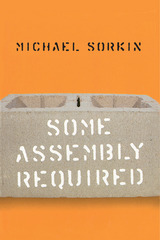 Some Assembly Required
Michael Sorkin
University of Minnesota Press, 2001 The long-awaited collection by one of architecture’s most exciting voices. Michael Sorkin is widely hailed as one of the best architecture critics writing today. Iconoclastic and often controversial, he is a witty, entertaining, yet ultimately serious writer. In this new collection, Sorkin reviews the state of contemporary architecture and surveys the dramatic changes in the urban environment of the past decade. From New York to New Delhi, from Shanghai to Cairo, Sorkin offers a sweeping assessment of the impact of globalization, environmental degradation, electronic media, rapid growth, and the legacies of modernist planning. Whether laying out, manifesto-like, eleven necessary tasks for urban design, providing a fresh take on the Disneyfication of Times Square, grappling with sprawl, or blasting the nostalgic prescriptions of "new urbanist" communities (which he dubs "Reaganville"), Sorkin makes a compelling argument for an architecture and urbanism firmly grounded in both artistic expression and social purpose.
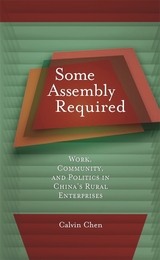 Some Assembly Required: Work, Community, and Politics in China’s Rural Enterprises
Calvin Chen
Harvard University Press, 2008 One linchpin of China’s expansion has been township and village enterprises (TVEs), a vast group of firms with diverse modes of ownership and structure. Based on the author’s fieldwork in Zhejiang, this book explores the emergence and success of rural enterprises.
This study also examines how ordinary rural residents have made sense of and participated in the industrialization engulfing them in recent decades. How much does TVE success depend on the ruthless exploitation of workers? How did peasants-turned-workers develop such impressive skills so quickly? To what extent do employees’ values affect the cohesion and operations of companies? And how long can peasant workers sustain these efforts in the face of increasing market competition?
The author argues that the resilience of these factories has as much to do with how authority is defined and how people interact as it does with the ability to generate profits. How social capital was deployed and replenished at critical moments was central to the eventual rise and consolidation of these enterprises as effective, robust institutions. Without mutual respect, company leaders would have found it impossible to improve their firms’ productivity, workplace stability, and long-term viability.
 Some Final Beauty and Other Stories
Lisa Alvarez
University of Nevada Press, 2025 Some Final Beauty and Other Stories showcases women and Chicanx characters whose resistance, reconciliation, and strength vigorously affirm community. Author Lisa Alvarez captures the spirit of empowerment in the struggle for justice faced by marginalized communities in a nation defined by politicians from Reagan to Trump.
From the vibrant streets of Southern California to the arid Nevada Nuclear Test Site, these thematically linked stories explore self-discovery, rebellion, and solidarity as complex personalities and values meet at the intersection of art, love, relationships, activism, and identity. A Mexican American returns from WWII to encounter Paul Robeson. A Spanish Civil War veteran befriends a recovering addict. Young 1980s female activists take to the streets. A big-city Latino mayor discovers the limits of ambition. A grieving aunt confronts her dead niece’s toxic lover.
Both the author and her characters interrogate finality while insisting on the beauty of everyday human engagement, often steeped in Hispanic culture, and stubbornly demanding joyful civic participation. Alvarez constructs more than a sharp, empathetic and funny sociological survey of experiences. She crafts a chronicle of lives lived with purpose, resilience, and the hope of a better future.
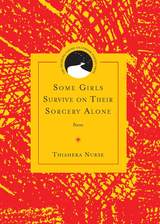 Some Girls Survive on Their Sorcery Alone: Poems
Thiahera Nurse
Northwestern University Press, 2019 Thiahera Nurse’s Some Girls Survive on Their Sorcery Alone works as ode and requiem to document the precious narratives held inside the body of a black girl. Opening with declarations of self-love, beauty, eulogy, and Lil’ Kim rapping in the rain, the landscape of Nurse’s poetry functions equally as underworld and imagined heaven.
Some Girls Survive on Their Sorcery Alone sees Renisha McBride, Sandra Bland, Korrynn Gaines, and others not as ornamental nor does the book attempt to canonize the dead women as saints. The poems see them as they are: play-cousins, home-girls, the mirror. Line to line, there is an obsession with keeping all of the women in the poems safe and perhaps resurrectable. The black girl who is alive here lives to switch her waistline to a reggae beat. She is in the middle of the dance floor with a suicide note in her purse as a means of warding off bad juju. Always, she is chasing joy head-on, at warp speed.
Some Girls Survive on Their Sorcery Alone is a celebration that the black girl will always dance, in the church basement, a grandmother’s funeral repast—she dances until she hits the floor, in her joy . . . and her grief.
 Some Glad Morning: Poems
Barbara Crooker
University of Pittsburgh Press, 2019 Longlist, 2019 Julie Suk Prize for best poetry book published by a literary press
Some Glad Morning, Barbara Crooker’s ninth book of poetry, teeters between joy and despair, faith and doubt, the disconnect between lived experience and the written word. Primarily a lyric poet, Crooker is in love with the beauty and mystery of the natural world, even as she recognizes its fragility. But she is also a poet unafraid to write about the consequences of our politics, the great divide. She writes as well about art, with ekphrastic poems on paintings by Hopper, O’Keeffe, Renoir, Matisse, Cézanne, and others. Many of the poems are elegaic in tone, an older writer tallying up her losses. Her work embodies Bruce Springsteen’s dictum, “it ain’t no sin to be glad we’re alive,” as she celebrates the explosion of spring peonies, chocolate mousse, a good martini, hummingbirds’ flashy metallics, the pewter light of September, Darryl Dawkins (late NBA star), saltine crackers. While she recognizes it might all be about to slip away, “Remember that nothing is ever lost,” she writes, and somehow, we do.
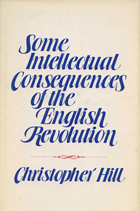 Some Intellectual Consequences of the English Revolution
Christopher Hill
University of Wisconsin Press, 1980 In Some Intellectual Consequences of the English Revolution, Christopher Hill takes up themes that have emerged from a lifetime’s investigation into the causes of the English Revolution. However, Hill does more than analyze the origins of the Revolution. He examines the ways the seeds of change sown during the revolution, grew into transformative politics in the period following the restoration of the monarchy in 1660.
Hill argues that the intellectual heritage of the English Revolution was mixed. While he acknowledges its achievements, he also depicts some of its failings. Consequently, he challenges the view that radical notions faded with the Restoration, suggesting instead, that they continued in pervasive and subtle ways throughout the course of English and American history. The apparent similarity between the England of 1640 and that of 1660 is shown to be illusory. Each period’s institutions survived but the social context had changed. In this way, Hill demonstrates how intellectual consequences cannot be separated from the social and economic factors of the nation that produced them. He concludes that historians should turn their attention to the “unofficial” radical heritage that is less easy to comprehend, though no less important.
This is a highly readable and provocative account by one of the world’s foremost historians.
Some Jazz a While: Collected Poems
Miller Williams
University of Illinois Press, 1999 Some Jazz a While, the eagerly anticipated collected poems of one of America's best-loved poets, gathers Miller Williams's most representative work and adds some new pieces as well. This generous collection welcomes newcomers as well as longtime admirers of Williams's trademark style: a compact and straightforward language, a masterful command of form, and an unsentimental approach to his subject matter. Williams treats the mundane interchanges, the lingering uncertainties, the missed opportunities, and the familiar sense of loss that mark daily life with the surgeon's deft touch. An American original, Miller Williams involves the reader's emotions and imagination with an effective illusion of plain talk, continually rediscovering what is vital and musical in the language we speak and by which we imagine.
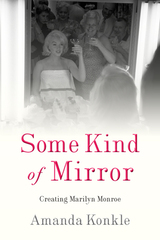 Some Kind of Mirror: Creating Marilyn Monroe
Konkle, Amanda
Rutgers University Press, 2019 Although she remains one of the all-time most recognizable Hollywood icons, Marilyn Monroe has seldom been ranked among the greatest actors of her generation. Critics have typically viewed her film roles as mere extensions of her sexpot star persona. Yet this ignores both the subtle variations between these roles and the acting skill that went into the creation of Monroe’s public persona.
Some Kind of Mirror offers the first extended scholarly analysis of Marilyn Monroe’s film performances, examining how they united the contradictory discourses about women’s roles in 1950s America. Amanda Konkle suggests that Monroe’s star persona resonated with audiences precisely because it engaged with the era’s critical debates regarding femininity, sexuality, marriage, and political activism. Furthermore, she explores how Monroe drew from the techniques of Method acting and finely calibrated her performances to better mirror her audience’s anxieties and desires.
Drawing both from Monroe’s filmography and from 1950s fan magazines, newspaper reports, and archived film studio reports, Some Kind of Mirror considers how her star persona was coauthored by the actress, the Hollywood publicity machine, and the fans who adored her. It is about why 1950s America made Monroe a star, but it is also about how Marilyn defined an era.
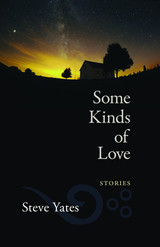 Some Kinds of Love: Stories
Steve Yates
University of Massachusetts Press, 2013 Sometimes the opposite of love is not hate, but depravity. In these twelve stories set in the Missouri Ozarks, New Orleans, and Mississippi, Steve Yates reveals lovers clawing back from precipices of destructiveness, obsessiveness, cruelty, vanity, or greed. They seek escape and yet find new barriers, realizing true love may not be at all what they imagined. Pioneers, limestone quarry owners, young German American Civil War survivors, bankers, sex toy catalog designers, highway engineers, Pakistani terrorists, attorneys, missile guidance masterminds, and furniture factory workers (who can see the future) populate these pieces. From the Ozarks of the 1830s, when locals perceive doomsday in a historic starfall, to the near future at an all-night slow-pitch softball tournament when Armageddon looms yet again, these stories chart the dark side of love, the ties that bind families, and the sweet complications of human desire.
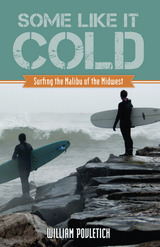 Some Like It Cold: Surfing the Malibu of the Midwest
William Povletich
Wisconsin Historical Society Press, 2016 Some Like It Cold chronicles the true story of twin brothers Lee and Larry Williams, whose love of surfing evolved in the most unlikely of geographies: off the shores of Lake Michigan. From their boyhood home in Sheboygan, Wisconsin, the brothers trekked to the local beach with their longboards and their dreams to master the waves at spots like the Elbow and the Cove. The next six decades proved that their zeal for catching grinders and barrels was much more than a hobby. Surfing in the cold had its challenges, and Lee and Larry recall stories of freak storms, ice-encrusted beaches, and near drownings, along with the usual hypothermia, helped but not cured by their customized cold-water wetsuits. Despite living nearly 2,000 miles from either coast, Lee and Larry have made a lifestyle out of freshwater surfing, recreating their hometown as "The Malibu of the Midwest" and gaining international fame as hosts of the Dairyland Surf Classic. With humor and wit, author William Povletich brings their tale of revolutionizing surf culture to the page.
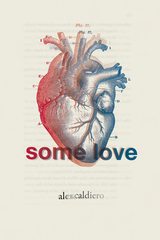 Some Love: Poetry
Alex Caldiero
Signature Books, 2015 Indifference rests quietly alone in the universe while love, hate, and hurt rage tightly together elsewhere across safely defined demarcations. Some Love secretly yearns for rest but plunges deeply into the scramble of human emotions: One Day a hurt hits
with a fact and a sorrow.
It makes me want to
write. It makes me want
to go away, to cry
in the arms of a lover,
past words said and actions
you cant take back not even in
a next life—on that day you
choose the one who comes to you. From his childhood in Sicily as a Catholic altar boy through his latter days as a Mormon “saint,” Caldiero recalls in verse his emerging passion for performance and for the sensual liturgical marriage of physical space—the church or temple proper—with bodily space. This ritualized confluence of architectural structure, human bodies, images, movements, smells, and sounds affects him as much today as it did in the past. It is this memory of the religious ritual that keeps him striving for a poetic creation and richness that achieves a depth of symbolic meaning.
 Some Measure of Justice: The Holocaust Era Restitution Campaign of the 1990s
Michael R. Marrus; Foreword by William A. Schabas
University of Wisconsin Press, 2009 Can there ever be justice for the Holocaust? During the 1990s—triggered by lawsuits in the United States against Swiss banks, German corporations, insurance companies, and owners of valuable works of art—claimants and their lawyers sought to rectify terrible wrongs committed more than a half century earlier. Some Measure of Justice explores this most recent wave of justice-seeking for the Holocaust: what it has been, why it emerged when it did, how it fits with earlier reparation to the Jewish people, its significance for the historical representation of the Holocaust, and its implications for justice-seeking in our time.
Writings on the subject of Holocaust reparations have largely come from participants, lawyers, philosophers, journalists, and social scientists specializing in restitution. In Some Measure of Justice Michael Marrus takes up the issue as a historian deeply involved with legal issues. He engages with larger questions about historical understanding and historical interpretation as they enter the legal arena. Ultimately this book asks, What constitutes justice for a great historic wrong? And, Is such justice possible?
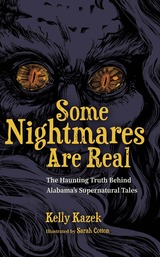 Some Nightmares Are Real: The Haunting Truth Behind Alabama’s Supernatural Tales
by Kelly Kazek, illustrated by Sarah Cotton
University of Alabama Press, 2024 Southern writer and folklorist Kelly Kazek’s collection of eerie and enigmatic Alabama ghost stories Dark secrets lurk beneath the sleepy surface of Alabama. Ghosts and grisly creatures haunt the towns and forests. In the great Southern ghost-story tradition, famed Alabama storyteller Kelly Kazek weaves a gothic tapestry of ten stories drawn from real people and legendary creatures, cursed places, and harrowing events. Each story or legend takes readers to a different place in Alabama. Read about the bestial Wolf Woman who terrified Mobilians in the haunted old port city. In the northern city of Huntsville, visit the Dead Children’s Playground in gloomy Maple Hill Cemetery. In Jacksonville, feel the cold grip of the Old Mill Witch, rumored to protect the workers at the rickety cotton yarn mill. Hear about the mysterious green light that drifts along the Alabama River in the Black Belt hamlet of Gee’s Bend and learn about the role the Gee’s Bend Ferry played in the Civil Rights Movement. Unlike most ghost-story collections, Some Nightmares Are Real includes an appendix of facts, historical resources, and information about how to visit the locations. These contemporary stories embrace a beloved Southern folkloric tradition for a new generation of young readers. The tales will terrify and ensnare ghost-story lovers of all ages. So settle in, pull the covers up tight, and maybe turn on the light, because the truth is: Some Nightmares Are Real.
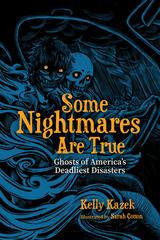 Some Nightmares Are True: Ghosts of America's Deadliest Disasters
by Kelly Kazek, illustrated by Sarah Cotton
University of Alabama Press, 2025 Digging up the eerie aftermath of America’s deadliest disasters—where ghost stories take root, history lingers in the shadows, and the past refuses to stay buried. In this haunting follow-up to Some Nightmares Are Real: The Haunting Truth Behind Alabama’s Supernatural Tales, journalist and storyteller Kelly Kazek investigates supernatural folklore grounded in historical catastrophe. This time, she ventures far beyond Alabama, unearthing the eerie legends born from their aftermath of nine of America’s most infamous disasters. From the strangling suffocation of the Boston Molasses Flood and the terror of Galveston’s notorious Great Storm, to flames blasting from the Triangle Shirtwaist Factory disaster, Some Nightmares Are True examines ghost stories that have haunted communities long after the news headlines stopped. Each spooky story blends vivid storytelling with meticulous research, connecting real events to the ghostly lore they inspired. Kazek explores not just the moment of disaster, but how grief, resilience, and remembrance shape the way stories live on—through newspaper archives, folklore, and generations of retelling. With both wry Southern sensibility and journalistic rigor, Kazek explores how moments of tragedy like the Dixie Tornado Outbreak in Alabama, the capsizing of the SS Eastland in Chicago, and the haunting aftermath of the Schoolchildren’s Blizzard in Nebraska leave lasting imprints on generational memory. These sites of devastation become more than historical footnotes; they transform into hallowed grounds where grief lingers, legends remain, and the line between fact and folklore dissolves. For ghost hunters, or simply those brave enough to follow their curiosity into learning more about the stories’ historical facts, Kazek has compiled a robust appendix that provides context, source materials, and location details, making this a perfect pick to toss in the car for that late-night road trip adventure. But remember, Some Nightmares Are True.
(some of) The Adventures of Carlyle, My Imaginary Friend
Dainis Hazners
University of Iowa Press, 2004 At first glance these poems (which read like one long odyssey) seem sweet and peaceful—like taking a walk in the woods. But then, things turn darker: a storm blows in—and with it some Aliens, Ghost and Ghoul, the Hanging Man. Luckily, Carlyle has a few good friends such as Ruth, the Hag, the Boy, who are staunch and true and faithful. A whistling-in-the-dark suspense alternately stimulates and enervates the witness.
“Carlyle is spore, and mild. / He is swoon & sherbet.” Endearing and kind, if not actually cruel, he is also cold and strange. He shapeshifts, transforming into Magician and Jester, Surgeon and Scientist, Cloud; he studies fire and mirrors and bores holes in his own skull, looking for heaven. Throughout his many adventures, which range from the ludicrous to the life-threatening, he flies into the light and carries the reader with him on his perplexing and fanciful journey.
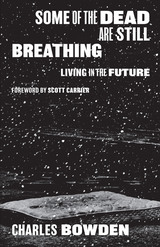 Some of the Dead Are Still Breathing: Living in the Future
By Charles Bowden
University of Texas Press, 2018 The third book in Charles Bowden’s “accidental trilogy” that began with Blood Orchid and Blues for Cannibals, Some of the Dead Are Still Breathing attempts to resolve the overarching question: “How can a person live a moral life in a culture of death?” As humanity moves further into the twenty-first century, Bowden continues to interrogate our roles in creating the ravaged landscapes and accumulated death that still surround us, as well as his own childhood isolation, his lust for alcohol and women, and his waning hope for a future. We witness post-Katrina New Orleans and terrorist-bombed Bali; we encounter our shared actions with the animal world and the desirous need for consumption; we see the clash and erosion of our physical and figurative borders, the savagery of our own civilization. A man of his time and out of time, Bowden seeks acceptance and a will to endure what may lie ahead.
 Some of the People Who Ate My Barbecue Didn't Vote for Me: The Life of Georgia Governor Marvin Griffin
Scott E. Buchanan
Vanderbilt University Press, 2011 Marvin Griffin was Georgia's seventy-second governor. Apart from that simple fact, virtually everything else about his career is the subject of controversy. Griffin governed at a point in the late 1950s when the state was undergoing a profound political transition from a rural-dominated, segregationist culture to a more urban landscape. As he attempted to guide Georgia through years of tumultuous change and upheaval throughout the South, Griffin developed a reputation for being inflammatory on racial issues and merciless to his political enemies .
In "Some of the People Who Ate My Barbecue Didn't Vote for Me," Scott Buchanan portrays Marvin Griffin as a Yellow Dog Democrat struggling against inevitable change. Griffin was viewed by many as a charismatic voice of resistance in the Georgia and the South in the wake of Brown v. Board of Education. He combined a staunch segregationist approach with economically progressive policies, assisting in Georgia's transformation from an agrarian economy to a more industrialized one.
Ironically, it was these efforts and the larger shift in politics that doomed Griffin's career, ensuring his administration would last only one term. In many ways, Griffin stands as a clear dividing line between the Old South and the New.
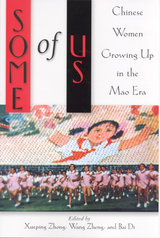 Some of Us: Chinese Women Growing Up in the Mao Era
Zhong, Xueping
Rutgers University Press, 2001 What does it mean to have grown up female in the Mao era? How can the remembered details of everyday life help shed light upon those turbulent times?
Some of Us is a collection of memoirs by nine Chinese women who grew up during the Mao era. All hail from urban backgrounds and all have obtained their Ph.D.s in the United States; thus, their memories are informed by intellectual training and insights that only distance can allow. Each of the chapters—arranged by the age of the author—is crafted by a writer who reflects back to that time in a more nuanced manner than has been possible for Western observers. The authors attend to gender in a way that male writers have barely noticed and reflect on their lives in the United States.
The issues explored here are as varied as these women’s lives: The burgeoning rebellion of a young girl in northeast China. A girl’s struggles to obtain for herself the education her parents inspired her to attain. An exploration of gender and identity as experienced by two sisters.
Some of Us offers insight into a place and time when life was much more complex than Westerners have allowed. These eloquent writings shatter our stereotypes of persecution, repression, victims, and victimizers. Together, these multi-faceted memoirs offer the reader new perspectives as they daringly explore difficult—and fascinating—issues.
 Some Other Amazonians: Perspectives on Modern Amazonia
Edited by Mark Harris and Stephen Nugent
University of London Press, 2004 Anthropological work in Amazonia has traditionally focused on Amerindian societies --and more recently, development projects, colonists, and the resource base represented in the humid neotropics. Receiving far less attention is the Amazonia of caboclos (people of mixed Brazilian Indian, European, and African ancestry), river traders, rum distillers, immigrant communities of Lebanese, Japanese, and Jews, quilombos (settlements formed by escaped slaves), ornamental fish trappers,and others whose long presence in the region defies the stereotypes of a frontier inferno verde. These other Amazonians present a vivid refutation of stereotypical views about the social landscape. This book brings to light the diversity of Amazonian societies and contributes to the extension of anthropological work beyond its traditional limits.
Contributors include Rosa Elizabeth Acevedo Marin, Edna De Castro, and David McGrath (Nucleo de Altos Estudos Amazonicos, Federal University of Para, Brazil), Scott Anderson (Tide-Energy Project in the Amazon), Neide Esterci (Federal University of Rio de Janeiro), Deborah Lima (Fluminense Federal University), Raymundo Heraldo Maues (Federal University of Para, Brazil), and Gregory Prang (Wayne State University).
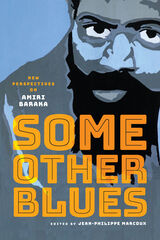 Some Other Blues: New Perspectives on Amiri Baraka
Edited by Jean-Philippe Marcoux
Ohio State University Press, 2021 This collection of original essays brings together some of the most important critics and scholars of Amiri Baraka’s oeuvre. Some Other Blues consists of career-spanning conversations on the many trajectories, bifurcations, and intersections in and of Baraka’s black art. Every chapter is grounded in the desire to illuminate Baraka’s multilayered creative output—whether through critical analyses, literary historiographies, or musicological and biographical reassessments of his work. Every contributor attempts, in their own unique ways, to delineate how the contours of poems, short stories, essays, and editorials reveal the poetics and politics of Amiri Baraka. At the same time, every chapter looks outward at what Baraka saw as the fractures and fissures of our society—moments in the history of African America that have needed repair and relief. For the first time in one book, two generations of scholars and friends of the Baraka family converge to assess the legacy and the imprint of the writer, activist, and cultural worker who has reshaped and redefined what is means to be a black public intellectual and poet. (Include contributors if space allows) Contributors: Tony Bolden, Jeremy Glick, William J. Harris, Benjamin Lee, Aidan Levy, John Lowney, Jean-Philippe Marcoux, Kim McMillon, Fred Moten, Michael New, Aldon Lynn Nielsen, Amy Abugo Ongiri, Gregory Pierrot, Howard Rambsy II, Emily Ruth Rutter, Anthony Reed, Lauri Scheyer, Kathy Lou Schultz, Michael Simanga, James Smethurst, Laura Vrana, Tyrone Williams, Kalamu ya Salaam.
Some Problems of Philosophy
William James
Harvard University Press, 1979 Some Problems of Philosophy, William James's last book, was published after his death in 1910. For years he had talked of rounding out his philosophical work with a treatise on metaphysics. Characteristically, he chose to do so in the form of an introduction to the problems of philosophy, because writing for beginners would force him to be nontechnical and readable. The result is that, although this is James's most systematic and abstract work, it has all the lucidity of his other, more popular writings. Step by step the reader is introduced, through analysis of the fundamental problems of Being, the relation of thoughts to things, novelty, causation, and the Infinite, to the original philosophical synthesis that James called radical empiricism.
This is the seventh volume to be published in The Works of William James, an authoritative edition sponsored by the American Council of Learned Societies.
Some Reflections Upon Marriage
Mary Astell. Introduction by John A. Dussinger
University of Illinois Press, 2015 Published anonymously in 1700, Some Reflections upon Marriage lamented the inequities of the institution of marriage and reasoned against it with both traditional and innovative arguments. Mary Astell's tract, written in response to an infamous divorce case, forcefully argued against the grim but all-too-common prospect of a marriage of necessity to a man in search of power, money, or a trophy wife. Astell proposed education as the solution to women's second-class status, stating that knowledge alone could lead to a partnership based on friendship and respect. "Let us learn to pride ourselves in something more excellent than the invention of a fashion," she wrote, and her well-reasoned arguments soon won her a wide readership.
Some Strange Corners of Our Country
Charles F. Lummis; Foreword by Lawrence Clark Powell
University of Arizona Press, 1989 Lummis's prose portraits of the Grand Canyon, Petrified Forest, Montezuma Castle, and other sites reflect the author's knowledge of Southwest anthropology and history.
 Some Wear Leather, Some Wear Lace: The Worldwide Compendium of Postpunk and Goth in the 1980s
Andi Harriman and Marloes Bontje
Intellect Books, 2014 It was a scene that had many names: some original members referred to themselves as punks, others, new romantics, new wavers, the bats, or the morbids. “Goth” did not gain lexical currency until the late 1980s. But no matter what term was used, “postpunk” encompasses all the incarnations of the 1980s alternative movement. Some Wear Leather, Some Wear Lace is a visual and oral history of the first decade of the scene. Featuring interviews with both the performers and the audience to capture the community on and off stage, the book places personal snapshots alongside professional photography to reveal a unique range of fashions, bands, and scenes.
A book about the music, the individual, and the creativity of a worldwide community rather than theoretical definitions of a subculture, Some Wear Leather, Some Wear Lace considers a subject not often covered by academic books. Whether you were part of the scene or are just fascinated by different modes of expression, this book will transport you to another time and place.
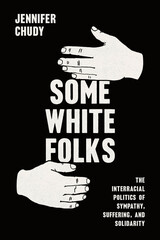 Some White Folks: The Interracial Politics of Sympathy, Suffering, and Solidarity
Jennifer Chudy
University of Chicago Press, 2024 A pioneering exploration of the unexamined roots and effect of racial sympathy within American politics. There is racial inequality in America, and some people are distressed over it while others are not. This is a book about white people who feel that distress. For decades, political scientists have studied the effects of white racial prejudice, but Jennifer Chudy shows that white racial sympathy for Black Americans’ suffering is also a potent force in modern American politics. Grounded in the history of Black-white relations in America, racial sympathy is unique. It is not equivalent to a low level of racial prejudice or sympathy for other marginalized groups. Some White Folks reveals how racial sympathy shapes a significant number of white Americans’ opinions on policy areas ranging from the social welfare state to the criminal justice system. Under certain circumstances, it can also spur action—although effects on political behavior are weaker and less consistent, for reasons Chudy examines. Drawing on diverse quantitative and qualitative evidence and integrating insights from multiple disciplines, Chudy explores the origins, importance, and complexity of racial sympathy, as well as the practical implications for political and movement leaders. A companion to the rich literature on prejudice, Some White Folks demonstrates the multifaceted role of race in American politics and public opinion.
Some Words of Jane Austen
Stuart M. Tave
University of Chicago Press, 2019 Jane Austen’s readers continue to find delight in the justness of her moral and psychological discriminations. But for most readers, her values have been a phenomenon more felt than fully apprehended. In this book, Stuart M. Tave identifies and explains a number of the central concepts across Austen’s novels—examining how words like “odd,” “exertion,” and, of course, “sensibility,” hold the key to understanding the Regency author’s language of moral values. Tracing the force and function of these words from Sense and Sensibility to Persuasion, Tave invites us to consider the peculiar and subtle ways in which word choice informs the conduct, moral standing, and self-awareness of Austen’s remarkable characters.
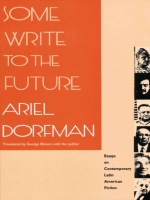 Some Write to the Future: Essays on Contemporary Latin American Fiction
Ariel Dorfman
Duke University Press, 1991 Formerly exiled Chilean author Ariel Dorfman, one of Latin America's greatest writers and a major literary figure of the twentieth century, is known for such critically acclaimed works as the novel Widows and the play Death and the Maiden. A master of various literary forms, this collection draws together Dorfman's critical essays on contemporary Latin American writing. Spanning more than twenty years and arranged in chronological order, each essay is devoted to a single author—Miguel Angel Asturias, Jorge Luis Borges, José Maria Arguedas, Alejo Carpentier, Gabrial Garcia Márquez, Roa Bastos—and one final essay looks at the "testimonial" or concentration camp literature from Chile. Praise for Ariel Dorfman
“One of the most important voices coming out of Latin America.”—Salman Rushdie “A remarkable writer . . . writing out of a very different cultural perspective from comfortable American readers.”—Digby Diehl, Los Angeles Herald Examiner “One of the six greatest Latin American novelists.”—Jacobo Timmerman, Newsweek
 Somebody Else: Arthur Rimbaud in Africa 1880-91
Charles Nicholl
University of Chicago Press, 1999 At the age of twenty-five, Arthur Rimbaud—the infamous author of A Season in Hell, the pioneer of modernism, the lover and destroyer of Verlaine, the "hoodlum poet" celebrated a century later by Bob Dylan and Jim Morrison—turned his back on poetry, France, and fame, for a life of wandering in East Africa.
In this compelling biography, Charles Nicholl pieces together the shadowy story of Rimbaud's life as a trader, explorer, and gunrunner in Africa. Following his fascinating journey, Nicholl shows how Rimbaud lived out that mysterious pronouncement of his teenage years: "Je est un autre"—I is somebody else.
"Rimbaud's fear of stasis never left him. 'I should like to wander over the face of the whole world,' he told his sister, Isobelle, 'then perhaps I'd find a place that would please me a little.' The tragedy of Rimbaud's later life, superbly chronicled by Nicholl, is that he never really did."—London Guardian
"Nicholl has excavated a mosaic of semi-legendary anecdotes to show that they were an essential part of the poet's journey to become 'somebody else.' Not quite biography, not quite travel book, in the end Somebody Else transcends both genres."—Sara Wheeler, Daily Telegraph
"At the end of Somebody Else Rimbaud is more interesting and more various than before: he is not less mysterious, but he is more real."—Susannah Clapp, Observer Review
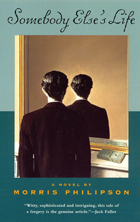 Somebody Else's Life: A Novel
Morris Philipson
University of Chicago Press, 2000 Stephen Cooper, a middle-aged university professor who is suddenly utterly bored by his life, plots an intricate scheme with his lover. They arrange a spectacular forgery of a disappeared art relic, and in order to sell it, also craft new identities for themselves: together they become somebody else.
"We move inside Cooper's chilly satisfaction as he and his lover-accomplice bring off one trick after another in the identity switching necessary to their scam. . . . And we're also brought close to the pain and rage . . . of the women whom Cooper (incorrigible to the end) deceives."—Benjamin DeMott, New York Times Book Review
"An authentic and ingenious account of the ingeniously counterfeit in art and in life."—D. J. Enright
"This offbeat romp intrigues with its ironic probing of life values at the same time that it provides lively entertainment."—Kirkus Reviews
"An extended and absorbing mediation on the loss of integrity."—Chicago Sun-Times
"Witty, sophisticated and intriguing, this tale of a forger is the genuine article: an example of the art of suspense and the suspense of art."—Jack Fuller
"An entertainingly mordant psychological thriller."—Washington Times Magazine
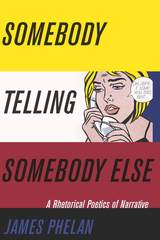 Somebody Telling Somebody Else: A Rhetorical Poetics of Narrative
James Phelan
Ohio State University Press, 2017 In Somebody Telling Somebody Else, James Phelan proposes a paradigm shift for narrative theory, a turn from viewing narrative as a structure to viewing it as a rhetorical action in which a teller selectively deploys the resources of storytelling in order to accomplish particular purposes in relation to particular audiences. Phelan explores the consequences of this shift for an understanding of various elements of narrative, including reliable and unreliable narration, character-character dialogue, and occasions of narration.
In doing so, he offers new readings of a wide range of narratives from Jane Austen’s Pride and Prejudice to Joan Didion’s The Year of Magical Thinking, from Joseph Conrad’s Lord Jim to George V. Higgins’s The Friends of Eddie Coyle, from Franz Kafka’s “Das Urteil” to Toni Morrison’s “Recitatif,” from David Small’s Stitches to Jhumpa Lahiri’s “Third and Final Continent,” from John O’Hara’s “Appearances” to Ian McEwan’s Enduring Love. Phelan contends that the standard view of narrative as a synthesis of story and discourse is inadequate to handle the complexities of narrative communication, and he demonstrates the greater explanatory power of his rhetorical view. Furthermore, Phelan gives new prominence to the presence and activity of the “somebody else,” as he shows that an audience’s unfolding responses to a narrative often influence its very construction.
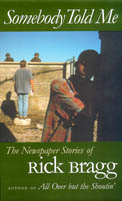 Somebody Told Me: The Newspaper Stories of Rick Bragg
Rick Bragg
University of Alabama Press, 2000 One of the South’s most loved authors
Over the past twenty years, writer Rick Bragg has earned legions of fans with his award-winning newspaper stories and with his critically aclaimed memoir All Over but the Shoutin'. His unique storytelling talent and his sympathy for the day-to-day struggles of everyday people set him apart from journalists who focus on political intrigue and the foibles of the rich and famous.
This collection showcases Bragg's talent for turning seemingly ordinary situations into extraordinary stories by bringing together more than sixty of his most recent feature articles, most of them written for the New York Times. Bragg explores such questions as: What happens to someone released from prison for a crime he didn't commit? Who takes care of the graves of poor people? What keeps an elderly woman from selling her land for a tidy profit? Bragg's curiosity often leads him to society's margins, where he wins the confidence of those who have good reason to mistrust others.
Bragg has reported on some of the most newsworthy tragedies in the nation, and his unfolding coverage of events such as the Oklahoma City bombing and the Susan Smith child murders is included here. Once again, though, his special ability to connect with people allows him accesss and perspectives that many other reporters do not achieve.
Whether he's profiling the sheriff who broke the Smith case or relating the efforts of Alabama churchgoers to understand a Sunday morning tornado strike, Bragg writes with genuine compassion and sentiment but without being sensationalist. He looks where others don’t and gets behind the headlines to the people standing there stunned and often, until he finds them, voiceless. When asked how he came up with his remarkable stories, Bragg has his answer down pat: “Somebody told me.”
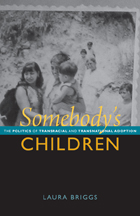 Somebody's Children: The Politics of Transracial and Transnational Adoption
Laura Briggs
Duke University Press, 2012 In Somebody's Children, Laura Briggs examines the social and cultural forces—poverty, racism, economic inequality, and political violence—that have shaped transracial and transnational adoption in the United States during the second half of the twentieth century and the first decade of the twenty-first. Focusing particularly on the experiences of those who have lost their children to adoption, Briggs analyzes the circumstances under which African American and Native mothers in the United States and indigenous and poor women in Latin America have felt pressed to give up their children for adoption or have lost them involuntarily. The dramatic expansion of transracial and transnational adoption since the 1950s, Briggs argues, was the result of specific and profound political and social changes, including the large-scale removal of Native children from their parents, the condemnation of single African American mothers in the context of the civil rights struggle, and the largely invented "crack babies" scare that inaugurated the dramatic withdrawal of benefits to poor mothers in the United States. In Guatemala, El Salvador, and Argentina, governments disappeared children during the Cold War and then imposed neoliberal economic regimes with U.S. support, making the circulation of children across national borders easy and often profitable. Concluding with an assessment of present-day controversies surrounding gay and lesbian adoptions and the struggles of immigrants fearful of losing their children to foster care, Briggs challenges celebratory or otherwise simplistic accounts of transracial and transnational adoption by revealing some of their unacknowledged causes and costs.
 Someday All the Adults Will Die!: The Birth of Texas Punk
Pat Blashill
University of Texas Press, 2025 A deep dive into the early days of punk in Austin, Texas, this oral history immerses readers in a diverse and influential music scene. Texas has always teemed with music and counterculture. When punk came to the state in 1978, it flourished in San Antonio, Dallas, Houston, and, especially, Austin. Punk and post-punk musicians, including nationally acclaimed bands like the Butthole Surfers, the Big Boys, the Dicks, and Daniel Johnston influenced local culture before slashing into the American musical psyche. (See Kurt Cobain sporting Johnston’s “Hi, How are you?” T-shirt.) Someday All the Adults Will Die! is an oral history of punk in Texas, from its rise in the late 1970s, through its strong anti-racist, feminist, and queer peak, to its dissolution in the late 1980s. Now a seasoned music journalist, Blashill experienced the zenith of Texas punk as a teenager, and he captures its intensity in words and pictures. Someday All the Adults Will Die! is rife with electrifying images and firsthand tales of what made this scene such a storm of pleasures and terrors, uncompromising artists, and wild performances. This dynamic portrait of an untamed, all-out musical era is a must-read for fans of punk music, counterculture, and live music.
 Someday All This Will Be Yours: A History of Inheritance and Old Age
Hendrik Hartog
Harvard University Press, 2011 We all hope that we will be cared for as we age. But the details of that care, for caretaker and recipient alike, raise some of life’s most vexing questions. From the mid-nineteenth to the mid-twentieth century, as an explosive economy and shifting social opportunities drew the young away from home, the elderly used promises of inheritance to keep children at their side. Hendrik Hartog tells the riveting, heartbreaking stories of how families fought over the work of care and its compensation.
Someday All This Will Be Yours narrates the legal and emotional strategies mobilized by older people, and explores the ambivalences of family members as they struggled with expectations of love and duty. Court cases offer an extraordinary glimpse of the mundane, painful, and intimate predicaments of family life. They reveal what it meant to be old without the pensions, Social Security, and nursing homes that now do much of the work of serving the elderly. From demented grandparents to fickle fathers, from litigious sons to grateful daughters, Hartog guides us into a world of disputed promises and broken hearts, and helps us feel the terrible tangle of love and commitments and money.
From one of the bedrocks of the human condition—the tension between the infirmities of the elderly and the longings of the young—emerges a pioneering work of exploration into the darker recesses of family life. Ultimately, Hartog forces us to reflect on what we owe and are owed as members of a family.
 Someone Else's Hunger
Isabella DeSendi
Four Way Books, 2025 Dislocated in her own skin after a sexual assault, Isabella DeSendi wrestles with the thorny border between desire and appetite in her incandescent debut collection. Poised between her Cuban matrilineage and her first-generation adolescence in America, between assimilation and reclamation, between owning her own cravings and becoming a sacrifice to "someone else's hunger," these poems dissect our human obsession with beauty and the body. The poems in this collection use the lyric form to enact destruction and reparation as they attempt to reverse the vector of aesthetic power toward grace. Because Someone Else's Hunger is beautiful, devastatingly so, it surveys violence, romance, eating disorders, structural racism, and socioeconomic inequality, all while yearning to still find beauty everywhere. At the nail salon, the speaker chooses red lacquer and the tech "paints the color of / anger or desire across the long lake of [her] nail"; in the city, where she feels like "an animal caught / in the sewer of [her] life" with "spring's pink garbage / strewn into the streets while petals performed / their daily adagio down the avenue"; and behind her mother's house, where she used to vomit at the lip of the reservoir, "where the water would congeal / then break like dough under [her] body's simple rot."
The expansive mercy of DeSendi's breath-taking images is never more apparent than the moment they turn, as when she heralds the avian frenzy "in the moment right after a purge": "always the miracle of birds arriving," "a messy flurry…curious if any piece of me could be salvaged, was still good enough to be taken home to the other starlings to eat." This speaker's ability to see the tenacious tenderness that drives the scavenger, to recognize its creative intelligence for nourishment, belies the resuscitative artistry that never abandons her as she turns carrion into continuance, coming alive again. Someone Else's Hunger subverts the revenge to recovery plot, arguing that the truest testament to the speaker's inner strength is the resilience it took to survive. DeSendi formally moves between restraint and excess, illustrating the great courage required to relinquish the control she won back when she became the master of her suffering. But the reward of risking exposure, daring to open herself to the world and let herself feed off it? Abundance. The arrival of spring and "with it the audacious dirt," this realization that "sometimes / in the breaking I am bettering / and in the bettering I am free."
 Someone Has to Fail: The Zero-Sum Game of Public Schooling
David F. Labaree
Harvard University Press, 2012 What do we really want from schools? Only everything, in all its contradictions. Most of all, we want access and opportunity for all children—but all possible advantages for our own. So argues historian David Labaree in this provocative look at the way “this archetype of dysfunction works so well at what we want it to do even as it evades what we explicitly ask it to do.”
Ever since the common school movement of the nineteenth century, mass schooling has been seen as an essential solution to great social problems. Yet as wave after wave of reform movements have shown, schools are extremely difficult to change. Labaree shows how the very organization of the locally controlled, administratively limited school system makes reform difficult.
At the same time, he argues, the choices of educational consumers have always overwhelmed top-down efforts at school reform. Individual families seek to use schools for their own purposes—to pursue social opportunity, if they need it, and to preserve social advantage, if they have it. In principle, we want the best for all children. In practice, we want the best for our own.
Provocative, unflinching, wry, Someone Has to Fail looks at the way that unintended consequences of consumer choices have created an extraordinarily resilient educational system, perpetually expanding, perpetually unequal, constantly being reformed, and never changing much.
 Someone Shot My Book
Julie Carr
University of Michigan Press, 2018 Approaching the practices of reading and writing from a feminist perspective, Julie Carr asks vital ethical questions about the role of poetry—and of art in general—in a violent culture. She addresses issues such as the art of listening, the body and the avant-garde, gun violence, police brutality, reading and protest, and feminist responses to war in essays that are lucid, inventive, and informed by a life lived with poetry. Essays on poets Lorine Niedecker, Jean Valentine, Anne Carson, Lyn Hejinian, and Lisa Robertson detail some of the political, emotional, and spiritual work of these forerunners. A former dancer, Carr also takes up question of text, dance, performance, and race in an essay on the work of choreographer, writer, and visual artist Ralph Lemon and poet Fred Moten.
Carr’s essays push past familiar boundaries between the personal/confessional and experimental/conceptual strains in American poetry. Pressing philosophical inquiries into the nature of gender, motherhood, fear, the body, and violence up against readings of twentieth- and twenty-first-century poets, she asks us to consider the political and affective work of poetry in a range of contexts. Carr reports on her own practices, examining her concerns for research and narrative against her investment in lyric, as well as her history as a dancer and her work as curator and publisher. Carr’s breadth of inquiry moves well beyond the page, yet remains grounded in languages possibilities.
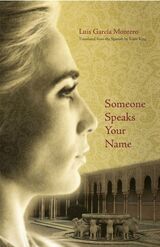 Someone Speaks Your Name
Luis García Montero
Swan Isle Press, 2022 A lyrical novel following an idealistic student who explores the power of literature in Franco’s Spain.
It’s the summer of 1963 and León Egea, a cocky nineteen-year-old student and aspiring author, has just finished his first year studying literature at the University of Granada and is starting a summer job as an encyclopedia salesman. León, infuriated by the injustices in Spanish society under the Franco dictatorship, comes to find that literature can speak the truth when the reality is clouded.
In this coming-of-age novel by renowned Spanish writer Luis García Montero, León discovers that, under the repressive Franco dictatorship, people, places, and events are not always what they seem. But literature, words, and names open paths to discovery, both personal and political. Through lyrical fast-paced narrative, Someone Speaks Your Name explores literature as a foundation for understanding human relationships, national character, discrete differences between right and wrong, and for pursuing the path forward. As León’s professor tells him: “Learning to write is learning to see.”
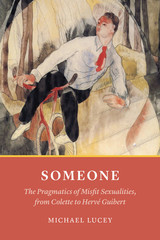 Someone: The Pragmatics of Misfit Sexualities, from Colette to Hervé Guibert
Michael Lucey
University of Chicago Press, 2019 Imagine trying to tell someone something about yourself and your desires for which there are no words. What if the mere attempt at expression was bound to misfire, to efface the truth of that ineluctable something?
In Someone, Michael Lucey considers characters from twentieth-century French literary texts whose sexual forms prove difficult to conceptualize or represent. The characters expressing these “misfit” sexualities gravitate towards same-sex encounters. Yet they differ in subtle but crucial ways from mainstream gay or lesbian identities—whether because of a discordance between gender identity and sexuality, practices specific to a certain place and time, or the fleetingness or non-exclusivity of desire. Investigating works by Simone de Beauvoir, Colette, Jean Genet, and others, Lucey probes both the range of same-sex sexual forms in twentieth-century France and the innovative literary language authors have used to explore these evanescent forms.
As a portrait of fragile sexualities that involve awkward and delicate maneuvers and modes of articulation, Someone reveals just how messy the ways in which we experience and perceive sexuality remain, even to ourselves.
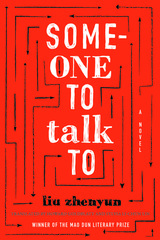 Someone to Talk To: A Novel
Liu Zhenyun
Duke University Press, 2018 Tofu peddler Yang Baishun is a man of few words and few friends. Unable to find meaningful companionship, he settles for a marriage of convenience. When his wife leaves him for another man he is left to care for his five-year-old stepdaughter Qiaoling, who is subsequently kidnapped, never to be seen by Yang again. Seventy years later we find Niu Aiguo, who, like Yang, struggles to connect with other people. As Niu begins learning about his recently deceased mother’s murky past it becomes clear that Qiaoling is the mysterious bond that links Yang and Niu. Originally published in China in 2009 and appearing in English for the first time, Liu Zhenyun’s award-winning Someone to Talk To highlights the contours of everyday life in pre- and post-Mao China, where regular people struggle to make a living and establish homes and families. Meditating on connection and loneliness, community and family, Someone to Talk To traces the unexpected and far-reaching ramifications of seemingly inconsequential actions, while reminding us all of the importance of communication.
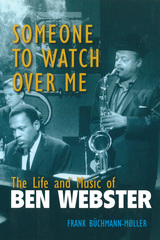 Someone to Watch Over Me: The Life and Music of Ben Webster
Frank Büchmann-Møller
University of Michigan Press, 2010 For a half century, Ben Webster, one of the "big three" of swing tenors-along with Coleman Hawkins and Lester Young-was one of the best-known and most popular saxophonists.
Early in his career, Webster worked with many of the greatest orchestras of the time, including those led by Willie Bryant, Cab Calloway, Benny Carter, Fletcher Henderson, Andy Kirk, Bennie Moten, and Teddy Wilson. In 1940 Webster became Duke Ellington's first major tenor soloist, and during the next three years he played on many famous recordings, including "Cotton Tail."
Someone to Watch Over Me tells, for the first time, the complete story of Ben Webster's brilliant and troubled career. For this comprehensive study of Webster, author Frank Büchmann-Møller interviewed more than fifty people in the United States and Europe, and he includes numerous translated excerpts from European periodicals and newspapers, none previously available in English. In addition, the author studies every known Webster recording and film, including many private recordings from Webster's home collection not available to the public.
Exhaustively researched, this is a much needed and long overdue study of the life and music of one of jazz's most important artists.
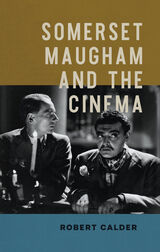 Somerset Maugham and the Cinema
Robert Calder
University of Wisconsin Press, 2024 William Somerset Maugham (1874–1965) was one of the most prominent and productive authors of the twentieth century—and his works have been among the most cinematically transformed in history. For more than five decades, adaptations of his plays, stories, and novels dominated movie theaters and, later, television screens. More than ninety individual works were filmed, and for many filmgoers his name was a greater draw than that of the director. Works such as Of Human Bondage, “The Letter,” The Painted Veil, “Rain,” The Razor’s Edge, and others were produced multiple times, with starring roles sought by actors like Bette Davis, Gloria Swanson, Greta Garbo, Lionel Barrymore, Charles Laughton, and Bill Murray.
This study of the famous author explores the relationship between literature and film, what is involved in adaptation, and how best to judge films based on celebrated books. Robert Calder, the world’s leading scholar of Maugham’s work, offers fascinating production histories, insight into both fortunate and misguided casting decisions, shrewd analyses of performances and film techniques, and summaries of public and critical responses. Maugham’s characters were often conflicted, iconoclastic, and morally out of step with their times, which may have accounted for the popularity of his fiction. Most of Maugham’s works could be adapted to satisfy the tastes of moviegoers and the demands of the Hays Office censors, if not the expectations of their author.
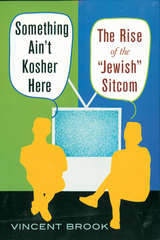 Something Ain't Kosher Here: The Rise of the 'Jewish' Sitcom
Brook, Vincent
Rutgers University Press, 2003 From 1989 through 2002 there was an unprecedented surge in American sitcoms featuring explicitly Jewish lead characters, thirty-two compared to seven in the previous forty years. Several of these—Mad About You, The Nanny, and Friends—were among the most popular and influential of all shows over this period; one program—Seinfeld—has been singled out as the “defining” series of the nineties. In addition, scriptwriters have increasingly created “Jewish” characters, although they may not be perceived to be by the show’s audience, Rachel Green on Friends being only one example. In Something Ain’t Kosher Here, Vincent Brook asks two key questions: Why has this trend appeared at this particular historical moment and what is the significance of this phenomenon for Jews and non-Jews alike? He takes readers through three key phases of the Jewish sitcom trend: The early years of television before and after the first Jewish sitcom, The Goldbergs’, appeared; the second phase in which America found itself “Under the Sign of Seinfeld”; and the current era of what Brook calls “Post- Jewishness.”
Interviews with key writers, producers, and “showrunners” such as David Kohan, (Will and Grace), Marta Kauffman (Friends and Dream On), Bill Prady (Dharma and Greg), Peter Mehlman and Carol Leifer (Seinfeld), and close readings of individual episodes and series provoke the inescapable conclusion that we have entered uncharted “post-Jewish” territory. Brook reveals that the acceptance of Jews in mainstream white America at the very time when identity politics have put a premium on celebrating difference reinforces and threatens the historically unique insider/outsider status of Jews in American society. This paradox upsets a delicate balance that has been a defining component of American Jewish identity. The rise of the Jewish sitcom represents a broader struggle in which American Jews and the TV industry, if not American society as a whole, are increasingly operating at cross-purposes— torn between the desire to celebrate unique ethnic identities, yet to assimilate: to assert independence, yet also to build a consensus to appeal to the widest possible audience. No reader of this book will ever be able to watch these television programs in quite the same way again.
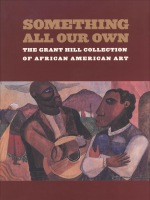 Something All Our Own: The Grant Hill Collection of African American Art
Grant Hill
Duke University Press, 2003 Since 1990, Grant Hill has thrilled sports fans with his artistry on the basketball court, first as an All-American player at Duke University and then as a six-time NBA All-Star for the Detroit Pistons and the Orlando Magic. During these years, Hill has amassed a collection of art by African Americans that he now shares with the public through this book, which accompanies a traveling exhibition.
The forty-six pieces documented here include thirteen works that span the career of the great Romare Bearden, from his 1941 gouache painting Serenade to the important collages of the 1980s. Hill’s fascination with artists’ depiction of women is represented in Elizabeth Catlett’s lithographs, many of them from the 1992 series “For My People,” and her sculptures in stone, bronze, and onyx. In addition to these two giants of twentieth-century art, the Hill Collection features pieces by Phoebe Beasley, Arthello Beck Jr., John Biggers, Malcolm Brown, John Coleman, Edward Jackson, and Hughie Lee Smith.
Hill began collecting art in the early 1990s after learning from his parents to appreciate artworks not only as objects of beauty but as expressions of heritage and culture. According to the internationally known curator Alvia J. Wardlaw, he is part of an emerging group of young African American collectors who have “raised the bar for others.” Hill writes, “Getting to know yourself means understanding your background and appreciating those who have come before you. My father has a saying he uses in speeches: ‘To be ignorant of your past is to remain a boy. ‘The interest in my heritage as an African American is reflected in this collection.”
Something All Our Own features Wardlaw’s essay on the history of African American collecting. It also features articles about Bearden and Catlett by the scholars Elizabeth Alexander and Beverly Guy-Sheftall and reflections about Hill by the historian John Hope Franklin, Duke’s basketball coach Mike Krzyzewski, and the sportswriter William C. Rhoden. Hill and his father, the NFL great Calvin Hill, contribute a dialogue that explores their motivations for collecting art.
At the heart of the book are the exquisite color photographs of the forty-six artworks included in the exhibition, with commentary by Wardlaw and by Hill himself.
As a star athlete, Grant Hill is well aware that African Americans who excel in sports and entertainment are more broadly recognized than their counterparts in artistic fields. He strives to inspire young people to explore their heritage and broaden their concept of excellence by learning more about African American art. By sharing his artworks with collectors and fans, Hill reminds us that while the jump shot is ephemeral, art is enduring.
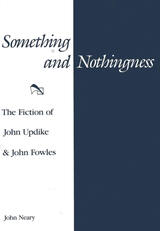 Something and Nothingness: The Fiction of John Updike and John Fowles
John Neary
Southern Illinois University Press, 1992 John Neary shows that the theological dichotomy of via negativa (which posits the authentic experience of God as absence, darkness, silence) and via affirmativa (which emphasizes presence, images, and the sounds of the earth) is an overlooked key to examining and comparing the works of John Fowles and John Updike. Drawing on his extensive knowledge of both Christian and secular existentialism within the modern theology of Barth and Levinas and the contemporary critical theory of Derrida and J. Hillis Miller, Neary demonstrates the ultimate affinity of these authors who at first appear such opposites. He makes clear that Fowles’s postmodernist, metafictional experiments reflect the stark existentialism of Camus and Sartre while Updike’s social realism recalls Kierkegaard’s empirical faith in a generous God within a kind of Christian deconstructionism. Neary’s perception of uncanny similarities between the two authors—whose respective careers are marked by a series of novels that structurally and thematically parallel each other—and the authors’ shared long-term interest in existentialism and theology support both his critical comparison and his argument that neither author is "philosophically more sophisticated nor aesthetically more daring."
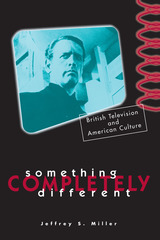 Something Completely Different: British Television And American Culture
Jeffrey S. Miller
University of Minnesota Press, 2000 The first comprehensive study of the influence British programming had on American television. The first comprehensive study of the influence British programming had on American television. Between Emma Peel and the Ministry of Silly Walks, British television had a significant impact on American popular culture in the 1960s and 1970s. In Something Completely Different, Jeffrey Miller offers the first comprehensive study of British programming on American television, discussing why the American networks imported such series as The Avengers and Monty Python’s Flying Circus; how American audiences received these uniquely British shows; and how the shows’ success reshaped American television.Miller’s lively analysis covers three genres: spy shows, costume dramas, and sketch comedies. In addition to providing his close readings of the series themselves, Miller considers the networks’ packaging of the programs for American viewers and the influences that led to their acceptance, including the American television industry’s search for new advertising revenue and the creation of PBS.Something Completely Different concludes with a discussion of the American programs and genres that owed their existence to British progenitors. Miller convincingly argues that much of what came to define American television by 1980 was in fact British in origin, a contention that casts a new light on traditional discussions of American cultural imperialism.ISBN 0-8166-3240-5 Cloth £31.00 $44.95xxISBN 0-8166-3241-3 Paper £12.50 $17.95x208 Pages 17 black-and-white photos 5 7/8 x 9 JanuaryTranslation inquiries: University of Minnesota Press
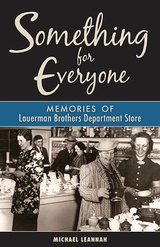 Something for Everyone: Memories of Lauerman Brothers Department Store
Michael Leanah
Wisconsin Historical Society Press, 2013 In 1890 the Lauerman brothers opened a general store in the lumber-boom town of Marinette, Wisconsin. The business prospered, and soon the brothers abandoned their small quarters on Main Street for a magnificent department store on Dunlap Square in the heart of Marinette. Thanks to the Lauermans’ devotion to offering diverse merchandise, superior customer service, and loyalty to their employees, the store would remain a lively, vital part of the Marinette fabric for one hundred years.
This book traces the history of the Lauerman enterprise and its importance to the community of Marinette and dozens of counties in northern Wisconsin and the UP. The author takes readers on a tour of the store’s most memorable and delightful features, from the plethora of merchandise offered to the record-listening booths to the famous frosted malt cones. Along the way we hear the recollections of dozens of former customers and employees whose memories form a unique tapestry of family, business, and community story. As it brings to life the people who worked and shopped at Lauermans, Something for Everyone will have readers fondly recalling their own favorite shopping destinations during the golden age of department stores.
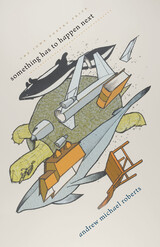 something has to happen next
andrew michael roberts
University of Iowa Press, 2009 The poems in something has to happen next, if given the chance, might peer down inquisitively from a great height; they speak of quietness, namelessness, the reachlessness of love, the fortune of animals and their silence, apocalypse, abandonment, beginnings, and endings.
Working with brevity and compression, Andrew Michael Roberts first imagines how small he can go with a poem and still maintain some sort of emotional or imagistic center. Then, released from this limitation, the rest of his playful, unexpected poems expand to fill a world with imagery, emotion, and sound.
What Roberts calls “simply a book of small poems” grew out of his obsessions with time and catastrophe and love and abandonment—what is always possible, almost attained, but lost at the last minute. When something ends or when everything ends, something else must always happen next—what will it be, and who will be there to name and love and destroy it?
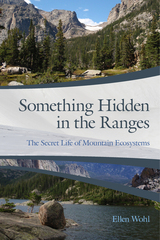 Something Hidden in the Ranges: The Secret Life of Mountain Ecosystems
Ellen Wohl
Oregon State University Press, 2021 We all see the largest features of mountain ecosystems—the impressively rugged peaks, the clear blue lakes, and the extensive forests—but each of these readily visible features depends on largely invisible creatures and flows of material and energy. Something Hidden in the Ranges draws on a wide array of scientific research to reveal the complex ecology of Rocky Mountain National Park in Colorado and, by extension, of mountain ecosystems generally.
Geologist Ellen Wohl has spent three decades investigating the streams and forests near her home in Colorado. In writing that is free from jargon and easy to understand, she tells the intricate story of how streams provide energy to adjacent forests, how lake sediments record the history of wind-blown pollutants, and how hidden networks of fungi keeps forests healthy. She guides readers through forests at both lower and higher elevations, revealing how trees rely on microbes in the soil, in the forest canopy, and even within individual pine needles to obtain the food they need. Other chapters focus on subalpine lakes, mountain streams, beaver meadows, and alpine tundra.
While scientists, students, and scholars will benefit from Wohl’s intimate knowledge of mountain ecosystems, Something Hidden in the Ranges is written for anyone interested in natural or environmental history. It will change the way readers perceive and think about natural landscapes.
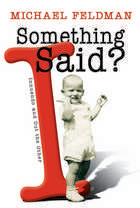 Something I Said?: Innuendo and Out the Other
Michael Feldman
University of Wisconsin Press, 2004 What we have here is another mighty slim volume from Michael Feldman, best known (when known at all) for his public radio show "Whad'ya Know" (sic). Feldman, who spouts off about things he knows "not much" about weekly, here writes them down:
· how to get your own radio show and what you can do with it once you do
· paranoia
· marriage (or as Feldman likes to refer to it, "a long-term bad relationship")
· Hitler
· SUVs
· child-rearing (although it sounds like it's the author who is being reared)
· a number of short pieces on places he and his crew have visited for their "remote possibilities"
· more references to "gentiles" than absolutely necessary (seems to be an issue for Feldman, although he is tickled with the
notion that, to a Mormon, he is one)
· some attempts to misrepresent scientific or social research for humorous purposes
· many personal revelations that prove the examined life is not necessarily worth living either
· and pages and pages of fluff. Mr. Feldman has not been compared, to our knowledge, to S. J. Perlman. But here is some of what Michael Feldman says in Something I Said:
"The paranoid no longer is: paranoia has outlived its usefulness when everybody is out to get us."
"Take the phrase 'no problem': I can use it, although it is the very opposite of my two-word world view ('Nothing works')." "Whatever latitude beauty may have in the eye of the beholder, funny is not readily apparent to all, and, who knows, they may be right. More importantly, they may be bigger."
Includes a music CD by Michael Feldman and John Sieger.
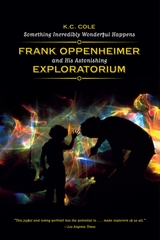 Something Incredibly Wonderful Happens: Frank Oppenheimer and His Astonishing Exploratorium
K. C. Cole
University of Chicago Press, 2012 How do we reclaim our innate enchantment with the world? And how can we turn our natural curiosity into a deep, abiding love for knowledge? Frank Oppenheimer, the younger brother of the physicist J. Robert Oppenheimer, was captivated by these questions, and used his own intellectual inquisitiveness to found the Exploratorium, a powerfully influential museum of human awareness in San Francisco, that encourages play, creativity, and discovery—all in the name of understanding. In this elegant biography, K. C. Cole investigates the man behind the museum with sharp insight and deep sympathy. The Oppenheimers were a family with great wealth and education, and Frank, like his older brother, pursued a career in physics. But while Robert was unceasingly ambitious, and eventually came to be known for his work on the atomic bomb, Frank’s path as a scientist was much less conventional. His brief fling with the Communist Party cost him his position at the University of Minnesota, and he subsequently spent a decade ranching in Colorado before returning to teaching. Once back in the lab, however, Frank found himself moved to create something to make the world meaningful after the bombing of Hiroshima and Nagasaki. He was inspired by European science museums, and he developed a dream of teaching Americans about science through participatory museums. Thus was born the magical world of the Exploratorium, forever revolutionizing not only the way we experience museums, but also science education for years to come. Cole has brought this charismatic and dynamic figure to life with vibrant prose and rich insight into Oppenheimer as both a scientist and an individual.
 Something Left To Lose: Personal Relations and Survival among New York's Homeless
Gwendolyn Dordick
Temple University Press, 1997 Homelessness is usually discusses in terms of its origins or in terms of its amelioration. Media accounts focus on poverty, drug use, lack of shelter, the social safety net, or attempts by the homeless, social service agencies, and government to end homelessness by policy and direct action. Yet we never seem to get a clear picture of who the homeless are. We are exposed to them as a social problem, but we learn little about their daily existence.
In Something Left to Lose, Gwendolyn A. Dordick gives us a dramatic portrait of the social and personal lives of the homeless. Through her extensive "hanging out" with homeless people, Dordick came to a profound understanding of the web of relationships that provides complex social structure in situations where, to the casual eye, there appears to be only chaos and paralysis.
The author shows us that improvising shelter means working hard to co-exist with others. Lacking conventional private dwellings, the homeless find or create shelter in unconventional places -- on street corners adjoining bus stations, on empty lots of land, or in shelters, public or private -- and negotiate the rules of these places with authorities, passersby, and fellow homeless.
The different environments lead to quite different social relations. The Armory, for example, is a frightening place, thanks to the authoritarian attitudes of the employees and cliques of homeless people in charge. In the Shanty, on the other hand, the difficult issues are those of a self-governing community concerned about safety -- controlling the drug use of some residents, deciding who is allowed to tap into the electricity, and worrying about intruders.
In all settings, daily life for people without homes, like daily life for people with homes, if full of the concerns of personal relationships. How will we share our goods and emotions, speak respectfully to each other, love and joke and work out our disputes, and act in a trustworthy fashion?
This book is also a miniature research odyssey, complete with moments of fear, frustration, blunders, distrust, and trust. In order to gather these interviews, Dordick had to not only win the the confidence of the homeless people she visited (the women at the Station thought she was interested in their boyfriends) but also negotiate with unsympathetic police and shelters employees or defy them.
Something More than Night: The Case of Raymond Chandler
Peter Wolfe
University of Wisconsin Press, 1985 Raymond Chandler’s eminence as a mystery writer is unchallenged. Somerset Maugham and George Grella both rate him above Dashiell Hammett; Eric Partridge deems him “a serious artist and a very considerable novelist,” while praising him as “one of the finest novelists of his time.” Peter Wolfe examines the many sides of Chandler and his work—his apparent will to self-destruct, his obsession with beautiful women, and his apparent brush with homosexuality—and casts much new and needed light on this major American author.
 Something Old, Something Bold: Bridal Showers and Bachelorette Parties
Montemurro, Beth
Rutgers University Press, 2006 Weddings in the United States are often extravagant, highly ritualized, and costly affairs. In this book, Beth Montemurro takes a fresh look at the wedding process, offering a perspective not likely to be found in the many planning books and magazines readily available to the modern bride. Montemurro draws upon years of ethnographic research to explore what prenuptial events mean to women participants and what they tell us about the complexity and ambiguity of gender roles. Through the bachelorette party and the bridal shower, the bride-to-be is initiated into the role of wife by her friends and family, who present elaborate scenarios that demonstrate both what she is sacrificing and what she is gaining. Montemurro argues that American society at the turn of the twenty-first century is still married to traditional conceptions of masculinity and femininity and that prenuptial rituals contribute to the stabilization of gender inequalities
Something Old, Something New: College Writing Teachers and Classroom Change
Wendy Bishop. Foreword by Patrick Hartwell
Southern Illinois University Press, 1990 How do college writing teachers learn new ways to teach? Most current composition research focuses almost exclusively on student writers, ignoring the role the teacher plays in classroom development. Here is the first book to focus on college writing teachers and the ways in which they are affected by graduate rhetoric pedagogy courses. Wendy Bishop observed teachers enrolled in a doctoral seminar, titled "Teaching Basic Writing," and then conducted case studies of five of those teachers in their college writing classrooms to investigate how their teaching practices changed and how their previous professional and personal histories influenced their ability to make those changes.
Something Small of How to See a River
Teresa Dzieglewicz
Tupelo Press, 2025 Through the weaving of documentary poetics, first-hand accounts, dialogue, and lyric, these poems tell the story of co-running a school at the Ocethi Sakowin Camp at Standing Rock.
Something Small of How to See a River interrogates the idea of narrative. Who gets to tell a story and what does it mean when the official story, the story told by the governor, the police, or the local media, is a fundamentally dishonest one? The poems collected here meditate on failure: how systems fail us and our environment, how whiteness fails to hold itself accountable, how future generations and the land are being failed—and how, in the face of all this, the Standing Rock movement was not a failure. At the heart of this collection is the strength, care, and radical joy of the movement, which shines through and against the violence.
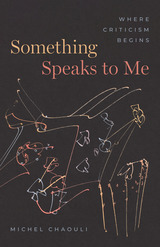 Something Speaks to Me: Where Criticism Begins
Michel Chaouli
University of Chicago Press, 2024 An account of criticism as an urgent response to what moves us.
Criticism begins when we put down a book to tell someone about it. It is what we do when we face a work or event that bowls us over and makes us scramble for a response. As Michel Chaouli argues, criticism involves three moments: Something speaks to me. I must tell you about it. But I don’t know how. The heart of criticism, no matter its form, lies in these surges of thoughts and feelings. Criticism arises from the fundamental need to share what overwhelms us.
We tend to associate criticism with scholarship and journalism. But Chaouli is not describing professional criticism, but what he calls “poetic criticism”—a staging ground for surprise, dread, delight, comprehension, and incomprehension. Written in the mode of a philosophical essay, Something Speaks to Me draws on a wide range of writers, artists, and thinkers, from Kant and Schlegel to Merleau-Ponty, Bachelard, Barthes, and Cavell. Reflecting on these dimensions of poetic experience, Something Speaks to Me is less concerned with joining academic debates than communicating the urgency of criticism.
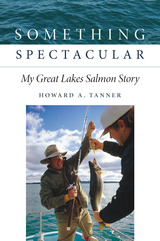 Something Spectacular: My Great Lakes Salmon Story
Howard A. Tanner
Michigan State University Press, 2018 As the new chief of the Michigan Department of Conservation’s Fish Division in 1964, Howard A. Tanner was challenged to “do something . . . spectacular.” He met that challenge by leading the successful introduction of coho salmon into the Michigan waters of the Great Lakes. This volume illustrates how Tanner was able to accomplish this feat: from a detailed account of his personal and professional background that provided a foundation for success; the historical and contemporary context in which the Fish Division undertook this bold step to reorient the state’s fishery from commercial to sport; the challenges, such as resistance from existing government institutions and finding funding, that he and his colleagues faced; the risks they took by introducing a nonnative species; the surprises they experienced in the first season’s catch; to, finally, the success they achieved in establishing a world-renowned, biologically and financially beneficial sport fishery in the Great Lakes. Tanner provides an engaging history of successfully introducing Pacific salmon into the lakes from the perspective of an ultimate insider.
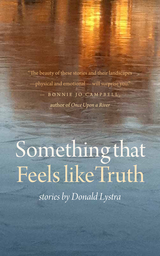 Something That Feels Like Truth
Donald Lystra
Northern Illinois University Press, 2012 Donald Lystra’s first novel, Season of Water and Ice, was the winner of the 2009 Midwest Book Award for fiction, making a nice publicity splash for our fiction imprint, Switchgrass, which proudly published it. The book garnered lots of publicity too, earing praise for Switchgrass in the pages of the Cleveland Plain Dealer, the Minneapolis Star Tribune, the Detroit Free Press, Time Out Chicago magazine, and other venues. This volume gathers a bracing selection of short stories by Lystra that are very much cut from the same cloth as his highly acclaimed novel. The stories in Something That Feels Like Truth confound expected plot turns, and Lystra develops his characters patiently and naturally, bringing them into convincing and honest actions. Lystra was a career engineer before retiring and launching a second career as a writer: I like to think this is why his fiction operates with such mathematical precision. Every plot point in every story here holds an integral part in the imbuing of its beauty and meaning. You can also tell Lystra has read a lot of Hemingway and Chekov: and that he aspires to be an inheritor of their effectively concise tradition. But there’s a touch of Cheever in Lystra’s stories as well: what that master storyteller did for the suburbs of New York, Lystra does for the Midwest.
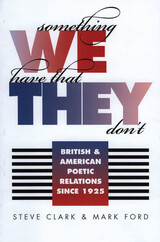 Something We Have That They Don't: British and American Poetic Relations since 1925
Steve & Mark Clark & Ford
University of Iowa Press, 2004 There is some connexion
(I like the way the English spell it
They’re so clever about some things
Probably smarter generally than we are
Although there is supposed to be something
We have that they don’'t—'don’t ask me
What it is. . . .)
—John Ashbery, “Tenth Symphony”
Something We Have That They Don’t presents a variety of essays on the relationship between British and American poetry since 1925. The essays collected here all explore some aspect of the rich and complex history of Anglo-American poetic relations of the last seventy years. Since the dawn of Modernism poets either side of the Atlantic have frequently inspired each other’s developments, from Frost’s galvanizing advice to Edward Thomas to rearrange his prose as verse, to Eliot’s and Auden’s enormous influence on the poetry of their adopted nations (“whichever Auden is,” Eliot once replied when asked if he were a British or an American poet, “I suppose, I must be the other”); from the impact of Charles Olson and other Black Mountain poets on J. H. Prynne and the Cambridge School, to the widespread influence of Frank O'Hara and Robert Lowell on a diverse range of contemporary British poets. Clark and Ford’s study aims to chart some of the currents of these ever-shifting relations. Poets discussed in these essays include John Ashbery, W. H. Auden, Elizabeth Bishop, T. S. Eliot, Mark Ford, Robert Graves, Thom Gunn, Lee Harwood, Geoffrey Hill, Michael Hofmann, Susan Howe, Robert Lowell, and W. B. Yeats.
“Poetry and sovereignty,” Philip Larkin remarked in an interview of 1982, “are very primitive things”: these essays consider the ways in which even seemingly very “unprimitive” poetries can be seen as reflecting and engaging with issues of national sovereignty and self-interest, and in the process they pose a series of fascinating questions about the national narratives that currently dominate definitions of the British and American poetic traditions.
This innovative and exciting new collection will be of great interest to students and scholars of British and American poetry and comparative literature.
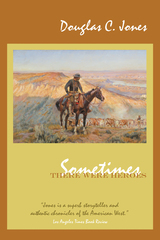 Sometimes There Were Heroes
Douglas C. Jones
University of Arkansas Press, 2005 Arkansas native Douglas C. Jones (1924–1998) ranks right up there with Larry McMurtry, A.B. Guthrie, and Ron Hansen. Author of nineteen historical Westerns, including The Court-Martial of George Armstrong Custer, which was made into a Hallmark Hall of Fame movie, Arrest Sitting Bull, and Elkhorn Tavern, Jones was a three-time recipient of the Golden Spur Award, and in 1993, he received the Owen Wister Award for Lifetime Contribution and Achievement from the Western Writers of America. His final novel, Sometimes there Were Heroes, originally published in 2000 and now in paperback, is the riveting tale of the brave and driven men and women of early Texas, told against the color backdrop of Bexar, the tiny Spanish mission that would later become San Antonio. As witnessed through the unforgettable characters of the "Mexican Gringo" Paco Salazar, a German immigrant named Sophie, and the young Oscar Schiller, this history is made rich with intrigue, danger, murder and love as disparate cultures clash and bond on the American frontier. Tonkawa Indians and Bavarian settlers, Mexicans and Texicans, Comanches and Angelos all mingle memorably in this riveting drama. Here are Sam Houston and Santa Ana, the Alamo, the founding of the Republic of Texas, the Texas Rangers, the forty-Niner Gold Rush, and the Civil War, all seamlessly woven into a suspenseful and colorful tale. The author's own pencil and charcoal drawings further enliven the novel. From prologue to epilogue, this is a suspenseful book that will be hard to put aside until it is finished.
Somewhere: A Novel
By Paloma Vidal, translated by Jordan B. Jones
Amherst College Press, 2026 In Paloma Vidal's unforgettable novel Somewhere, an Argentine-Brazilian woman narrates her struggles to determine her identity and maintain relationships while moving between three languages and as many locations: Los Angeles, Rio de Janeiro, and Buenos Aires, her birthplace. The novel’s shifting first-, second-, and third-person narration mirrors the fragmentation the protagonist feels and encounters around her, engaging themes of immigration, identity, translation, war, and geographical estrangement. Translated into English from Portuguese for the first time, Somewhere reflects the narrator’s persistent attempts to position herself in relation to others and to make each city her own. Given our fraught geopolitical climate, the book's themes will resonate with readers of many different backgrounds.
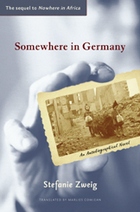 Somewhere in Germany: A Novel
Stefanie Zweig, Translated by Marlies Comjean
University of Wisconsin Press, 2006 Somewhere in Germany is the sequel to the acclaimed Nowhere in Africa, which was turned into the Oscar-winning film of the same name. This novel traces the return of the Redlich family to Germany after their nine-year exile in Kenya during World War II. In Africa, Walter had longed for his homeland and dreamed of rebuilding his life as a lawyer, yet ultimately he and his family—wife Jettel, daughter Regina, and baby Max—realize that Germany seems as exotic and unwelcoming to them in 1947 as Kenya had seemed in 1938. Hunger and desperation are omnipresent in bombed-out Frankfurt, and this Jewish family—especially Regina, who misses Africa the most—has a hard time adjusting to their new circumstances. Yet slowly the family adapts to their new home amidst the ruins.
In Frankfurt, Regina matures into a woman and, though her parents want her to marry an upstanding Jewish man, her love life progresses in its own idiosyncratic fashion. She develops a passion for art and journalism and begins her professional career at a Frankfurt newspaper. Walter at last finds professional success as a lawyer, but never quite adjusts to life in Frankfurt, recalling with nostalgia his childhood in Upper Silesia and his years in Africa. Only his son Max truly finds what Walter had hoped for: a new homeland in Germany.
Although the Redlichs receive kindness from strangers, they also learn anti-Semitism still prevails in post-Nazi Germany. They partake in the West German “economic miracle” with their own home, a second-hand car, and the discovery of television, but young Max’s discovery of the Holocaust revives long-buried memories. Rich in memorable moments and characters, this novel portrays the reality of postwar German society in vivid and candid detail.
Somewhere in Space
Talvikki Ansel
Ohio State University Press, 2015 The poems in Talvikki Ansel’s Somewhere in Space work to locate us in this world and its mix of the made and natural, the cultivated and untamable. Faced with such mysteries and intricacies as the water-conducting tissue of trees, the sensory abilities of vultures, the lives of past writers (Edith Södergran, Bruno Schulz), and fragments of history and our tenuous connections to them, the poems acknowledge the difficulty of authority, yet continue with their forays. Invented characters coexist with observations of mergansers and moths, orioles and cats; “Particulars rock / just inside the breakwater / like conjured up skiffs.”
 Somme: Into the Breach
Hugh Sebag-Montefiore
Harvard University Press, 2016 The notion of battles as the irreducible building blocks of war demands a single verdict of each campaign—victory, defeat, stalemate. But this kind of accounting leaves no room to record the nuances and twists of actual conflict. In Somme: Into the Breach, the noted military historian Hugh Sebag-Montefiore shows that by turning our focus to stories of the front line—to acts of heroism and moments of both terror and triumph—we can counter, and even change, familiar narratives.
Planned as a decisive strike but fought as a bloody battle of attrition, the Battle of the Somme claimed over a million dead or wounded in months of fighting that have long epitomized the tragedy and folly of World War I. Yet by focusing on the first-hand experiences and personal stories of both Allied and enemy soldiers, Hugh Sebag-Montefiore defies the customary framing of incompetent generals and senseless slaughter. In its place, eyewitness accounts relive scenes of extraordinary courage and sacrifice, as soldiers ordered “over the top” ventured into No Man’s Land and enemy trenches, where they met a hail of machine-gun fire, thickets of barbed wire, and exploding shells.
Rescuing from history the many forgotten heroes whose bravery has been overlooked, and giving voice to their bereaved relatives at home, Hugh Sebag-Montefiore reveals the Somme campaign in all its glory as well as its misery, helping us to realize that there are many meaningful ways to define a battle when seen through the eyes of those who lived it.
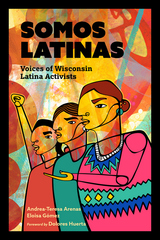 Somos Latinas: Voices of Wisconsin Latina Activists
Andrea-Teresa Arenas
Wisconsin Historical Society Press, 2018 Twenty-five Latina agents of change share their inspirational stories.
Celebrated Latina civil rights activist Dolores Huerta once said, “Every moment is an organizing opportunity, every person a potential activist, every minute a chance to change the world.” These are the stories of some of the Latina activists from Wisconsin who have lived Huerta’s words. Somos Latinas shares the powerful narratives of 25 activists—from outspoken demonstrators to collaborative community-builders to determined individuals working for change behind the scenes—providing proof of the long-standing legacy of Latina activism throughout Wisconsin.
Somos Latinas draws on activist interviews conducted as part of the Somos Latinas Digital History Project, housed at the Wisconsin Historical Society, and looks deep into the life and passion of each woman. Though Latinas have a rich history of community activism in the state and throughout the country, their stories often go uncelebrated. Somos Latinas is essential reading for scholars, historians, activists, and anyone curious about how everyday citizens can effect change in their communities.
 Somos Tejanas!: Chicana Identity and Culture in Texas
Edited by Jody A. Marín and Norma E. Cantú
University of Texas Press, 2025 An expansive volume on Tejana identity and Tejanidad told through personal narratives, poetry, and essays. Being Tejanx is different than just being from Texas. Being Tejanx means you are a border subject. Being Tejanx means living in and from a certain history of oppression, possibility, activism, and cultural-linguistic hybridity arising within the US-Mexico borderland that is home. And being Tejanx means something in particular if you are a woman. In ¡Somos Tejanas!, editors Norma E. Cantú and Jody A. Marín assemble contemporary Tejanx writers who provide firsthand accounts of their experience of identity, enriching the field of Tejanx studies through an encounter with gender and sexuality. The contributions, including personal and scholarly essays, poems, criticism, and artworks, explore the heterogeneity of Tejana identity and the sociopolitical movements, stories, dances, music, and athletic feats that mark Tejanidad. Authors contemplate the history and memory of segregation in Texas, the struggles of surviving the unnatural disaster and blackouts of 2021 amid the global pandemic of COVID-19, and the drug-war violence and ever-tightening immigration restrictions that strangle a transborder way of life shared by millions. An unrepentant act of expression from women under attack by state policymakers, this collection dispels the silence imposed by colonial erasure.
A Son at the Front
Edith Wharton
Northern Illinois University Press, 1995
Wharton's antiwar masterpiece, now once again available, probes the devastation of World War I on the home front. Interweaving her own experiences of the Great War with themes of parental and filial love, art and self-sacrifice, national loyalties and class privilege, Wharton tells an intimate and captivating story of war behind the lines.
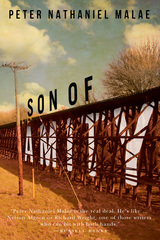 Son of Amity
Peter Nathaniel Malae
Oregon State University Press, 2018 Three lives on the verge of ruin intersect in the small Oregon town of Amity: Pika, a half-Samoan ex-con from California, seeks to deliver justice to his sister’s rapist; Michael, a five-tour Iraq War Marine, faces the cracked mirror of his own embattled soul; and Sissy, a recent convert to Catholicism, must resist the lure of ruthless self-judgment and discover what love is.
Determined to escape the past, these characters find themselves sharing the same torn-down house, bordering tweaker poverty and bucolic wine country. Violence and penance, family and legacy, recidivism and post-traumatic stress disorder linger with the heavy rain of desperation. At the center of this storm is five-year old Benji, whose wide-eyed energy and openhearted faith could show all of them how to still be saved.
In this unforgettable tale, award-winning author Peter Nathaniel Malae explores the depths of human pain and trauma with genuine cultural authority. Son of Amity is a novel whose voices cry out with truth and vulnerability, never betraying that slight tilt toward hope needed to make the long, hard trek to tomorrow.
 Son of Andalusia: The Lyrical Landscapes of Federico Garcia Lorca
C. Brian Morris
Vanderbilt University Press, 1997 A pathbreaking account of the influence and context of Andalusian life and art in the poetry and drama of Federico Garcia Lorca. Andalusia was the central feature and influence in the life and writings of the twentieth-century author, musician, and artist, Federico Garcia Lorca. Rooted in his native region, which both captivated and shaped him, Lorca maintained that "The better a writer learns how to interpret the landscape, the greater the artist he will be." Blessed with an acute historical sense of a region where the past is both present and enduring, Lorca proved himself sensitive and articulate enough to interpret "the emotion of the landscape" in all of his creative work. For Lorca, Andalusia was a landscape not only of place but of people. Through exhaustive research and painstaking readings in a wide range of anthologies of Andalusian folk culture and collections of popular verse, author C. Brian Morris reveals how Lorca transformed and veiled real people and real places in his poetry and drama. Exploring subjects ranging from medieval ballads to flower and plant lore, he further investigates the relationship between Lorca and the writings of other Andalusian-born authors, as well as traditional Andalusian poetry and song. Juxtaposing this material with well-chosen quotations from Lorca's works, Morris provides myriad examples of analogy and reminiscence that will inform and enlighten both general readers and Lorca specialists.
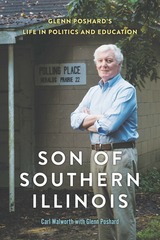 Son of Southern Illinois: Glenn Poshard’s Life in Politics and Education
Carl Walworth with Glenn Poshard
Southern Illinois University Press, 2023 A life of principles, service, and faith
This first biography of Glenn Poshard traces the life of a young man who rose from rural poverty in Southern Illinois to become a United States congressman and president of the Southern Illinois University system. This profound portrait unveils a life and career dedicated to making higher education affordable and improving the quality of life for the community of Southern Illinois.
Beginning with his childhood in a two-room home near Herald, Illinois and the early, tragic loss of his sister, this biography navigates Poshard’s service in the military, his time as a state senator and United States congressman, his run for governor, his years at Southern Illinois University, and the establishment of the Poshard Foundation for Abused Children. Intimacies of his personal life are disclosed, such as his struggles with and treatment for depression, his passion for education, and the lasting bonds he formed with his teachers. His unpopular decision to refuse PAC donations is also highlighted, along with the work that went into sponsoring the Illinois Wilderness Act, and his relationship with civil rights activist John Lewis. Glenn Poshard’s efforts for the Wilderness Act designated Southern Illinois’s famous Garden of the Gods as a National Wilderness Preservation System, which continues to attract visitors from around the world.
Poshard’s path from poverty was riddled with hardship, but his perseverance and family values ultimately allowed for longstanding personal and civic growth. From an admirable work ethic to a steadfast commitment to problem-solving, this biography illuminates the life and accomplishments of an impressive and generous leader.
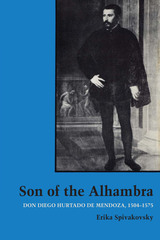 Son of the Alhambra: Don Diego Hurtado de Mendoza, 1504-1575
By Erika Spivakovsky
University of Texas Press, 1970 Last of the Spanish Renaissance men, Diego Hurtado de Mendoza (1504–1575) was a master of the humanist disciplines as well as an active diplomat whose correspondence provides insight into the workings of power politics in the first post-Machiavellian decades. This account of Mendoza's diplomatic career is a living commentary on the mid-sixteenth century, the time of the Spanish Inquisition and the Reformation, with its upheavals in the European balance of power. Mendoza served as ambassador of Charles V to Venice and Rome and as governor of Siena. His political life complements the reign of the Emperor whose ambition was to become a universal monarch. An interesting contradiction in Mendoza's thought—his humanist theories versus personal ambition—prevented him from successful implemention of tyrannical imperial policies. His role in the government of the Holy Roman Empire shows how the exertion of imperialist power, humanist ethics notwithstanding, inevitably entails corruption, hypocrisy, greed, and imbalance in the one who tries to wield this power. Gifted to the point of universal genius, Mendoza was perhaps the foremost representative of the splendid but little-known epoch of Spanish humanism, the era between the death of Queen Isabel (1504) and the abdication of her grandson Charles V (1556). Spain's short-lived Renaissance came to an abrupt end with the accession of Philip II and the almost simultaneous onset of the Counter Reformation. To this changed Spain, under monolithic thought control now exacted and enforced by monarch and Inquisition, Mendoza returned to live the last third of his life, mostly in obscurity, and in the last few years in royal disgrace. Based on primary sources, this first biography of Mendoza in English also examines the relevance of some of Don Diego's disputed literary works to the legend that grew up around him as a spokesman for latent unorthodox opinion.
"A Son of the Forest" and Other Writings
William Apess
University of Massachusetts Press, 1997 Designed especially for classroom use, this book brings together the best-known works of the nineteenth-century Indian writer William Apess, including the first extended autobiography by a Native American. The text is drawn from On Our Own Ground, which was named a Choice Outstanding Academic Book. Barry O'Connell has written a new introduction for this abbreviated edition.
Son of the Wilderness: The Life of John Muir
Linnie Marsh Wolfe
University of Wisconsin Press, 2003 Working closely with Muir’s family and with his papers, Wolfe was able to create a full portrait of her subject, not only as America’s firebrand conservationist and founder of the national park system, but also as husband, father, and friend. All readers who have admired Muir’s ruggedly individualistic lifestyle, and those who wish a greater appreciation for the history of environmental preservation in America, will be enthralled and enlightened by this splendid biography.
The story follows Muir from his ancestral home in Scotland, through his early years in the harsh Wisconsin wilderness, to his history-making pilgrimage to California.
This book, originally published in 1945 and based in large part on Wolfe’s personal interviews with people who knew and worked with Muir, is one that could never be written again. It is, and will remain, the standard Muir biography.
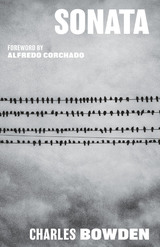 Sonata
By Charles Bowden; foreword by Alfredo Corchado
University of Texas Press, 2020 "I believe every sunrise and I remember the smell of wet grass, the color of robins, and rustle of leaves on the big oaks that outlive nations, all this comes with each sunrise." Sonata marks the sixth and final installment of Charles Bowden’s towering “Unnatural History of America” series. While his earlier volumes were suffused with violence and war, Bowden offers here a celebration of rebirth and regrowth. Rendered in Bowden's inimitable style, more prose poetry than reportage, he evokes panoramas that contain the potential for respite and offer a state of grace all but lost in the endless wars of man. Bowden travels back in time to the worlds of artists Francisco Goya and Vincent van Gogh, the latter painting furiously against encroaching madness. “Van Gogh tries to dream a life of color,” writes Bowden. “Powder blue sheds, yellow stubble, pink skies—but the fears and dark things drag him down.” As Bowden’s vivid prose wrestles with the madness of the world, van Gogh’s paintings represent an act of resistance, ultimately unsuccessful, against depression and suicide. Moving from the vibrant hues of van Gogh’s painted gardens to America’s southern border, Bowden returns once more to the Mexican asylum run by "El Pastor," Jose Antonio Galvan, who was first introduced to readers of the sextet in Jericho. Here, too, is the dream of a garden that will be planted in the desert, a promise of regeneration in a world gone mad. Poetic, elegiac, and elliptical, Sonata is the final, captivating book of Bowden’s monumental career.
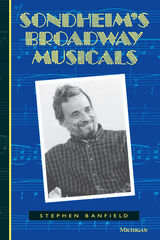 Sondheim's Broadway Musicals
Stephen Banfield
University of Michigan Press, 1995 With thirteen Broadway musicals to his credit, Stephen Sondheim's career in the musical theater has outdistanced those of most of his contemporaries. Each of his shows has presented new challenges to audiences, and each has cast fresh perspectives on the nature and potential of the American musical, as well as probing deeply, often painfully, into the nature of our culture.
Sondheim's Broadway Musicals is the first book to take an in-depth look at Sondheim's work. Stephen Banfield examines each of Sondheim's musicals for Broadway, from West Side Story and Gypsy to the 1987 musical Into the Woods, and includes A Funny Thing Happened on the Way to the Forum, Company, Follies, Anyone Can Whistle, A Little Night Music, Pacific Overtures, Merrily We Roll Along, Sweeney Todd, and Sunday in the Park with George. Banfield also discusses Sondheim's other work, such as the 1991 show Assassins and his music for the 1990 film Dick Tracy--for which "Sooner or Later" won him an Academy Award for Best Song.
"Banfield seems almost to hear Sondheim's music with Sondheim's ears. This extremely valuable work discusses Sondheim's early training and subsequent career, his general compositional concerns, and his style. The meat of the book is a musical-dramatic analysis of his musicals . . . . For each musical, Banfield places the work and its components in a historical and typological text. He also treats in welcome detail the musical profile or universe of each show: Sondheim's use of generative intervals or interval complexes as source material, motifs that reappear in various guises in various songs, the sound world that defines the musical's emotional mind. The book will be as useful to those who are cool to Sondheim's work as to his fans." --Choice
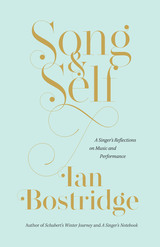 Song and Self: A Singer's Reflections on Music and Performance
Ian Bostridge
University of Chicago Press, 2023 Award-winning singer Ian Bostridge examines iconic works of Western classical music to reflect on the relationship between performer and audience.
Like so many performers, renowned tenor Ian Bostridge spent much of 2020 and 2021 unable to take part in live music. The enforced silence of the pandemic led him to question an identity that was previously defined by communicating directly with audiences in opera houses and concert halls. It also allowed him to delve deeper into many of the classical works he has encountered over the course of his career, such as Claudio Monteverdi’s seventeenth-century masterpiece Il Combattimento di Tancredi e Clorinda and Robert Schumann’s popular song cycle Frauenliebe und Leben. In lucid and compelling prose, Bostridge explores the ways Monteverdi, Schumann, and Britten employed and disrupted gender roles in their music; questions colonial power and hierarchy in Ravel’s Songs of Madagascar; and surveys Britten’s reckoning with death in works from the War Requiem to his final opera, Death in Venice.
As a performer reconciling his own identity and that of the musical text he delivers on stage, Bostridge unravels the complex history of each piece of music, showing how today’s performers can embody that complexity for their audiences. As readers become privy to Bostridge’s unique lines of inquiry, they are also primed for the searching intensity of his interpretations, in which the uncanny melding of song and self brings about moments of epiphany for both the singer and his audience.
A Song for One or Two: Music and the Concept of Art in Early China
Kenneth J. DeWoskin
University of Michigan Press, 1982 This study of theories of music and art in China from the classical period to the Six Dynasties is based on analysis and interpretation of textual and archaeological evidence. Its wide-ranging sources include mythology, aesthetic philosophy, musical lore, and notation systems. The evolution of theories of music and art is considered in the context of cosmological and moral philosophy.
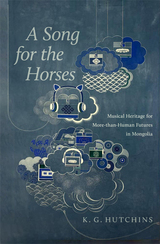 A Song for the Horses: Musical Heritage for More-than-Human Futures in Mongolia
K. G. Hutchins
University of Arizona Press, 2025 As permafrost in Siberia continues to melt and the steppe in the Gobi turns to desert, people in Mongolia are faced with overlapping climate crises. Some nomadic herders describe climate change as the end of a world. They are quick to add that the world has ended before for Indigenous people in North Asia, as waves of colonialism have left the steppe with a complicated web of apocalypses. A Song for the Horses by K. G. Hutchins examines cases in which people respond to the pressures of climate change by drawing on cultural heritage to foster social resiliency.
Hutchins’s ethnographic research, spanning more than a decade, provides a vivid and intimate portrayal of Mongolian life. Musicians use the morin khuur, or ‘horse fiddle,’ to engage with the subjectivities and agencies of nonhuman animals and other beings. This work is a significant contribution to the posthuman turn in social sciences, engaging with theories from prominent scholars such as Donna Haraway and Anna Tsing .
As climate change continues to impact communities worldwide, this book offers a unique perspective on how cultural heritage can be mobilized to address environmental challenges, providing valuable lessons for global efforts to build sustainable and resilient futures. At the intersection of music, environment, and posthumanism, A Song for the Horses shows how Mongolian musicians use cultural traditions to imagine and build toward alternative futures beyond climate change and neoliberalism.
 Song for Uncle Tom, Tonto, and Mr. Moto: Poetry and Identity
David Mura
University of Michigan Press, 2002 As a Sansei or third-generation Japanese American poet, David Mura is one of the generation of multicultural writers who are changing the face of American poetry. Song for Uncle Tom, Tonto, and Mr. Moto explores shifts in and challenges to aesthetic standards that have come about because of a more diverse range of American writers and because of the growing awareness of world literature.
Mura's writings recently have been at the center of various debates concerning race and literary standards. In this book, he argues the need for a more complicated and diverse set of literary standards than the canon has previously allowed, an opening up to the many voices that are "great within us." He contends that, when placed against a gathering awareness of a world literature, particularly in the so-called Third World, the boundaries of the traditional Anglo-American canon and its present-day proponents like Harold Bloom come to be seen as too narrow and parochial, reenacting the "tribal" label that many throw now at the advocates of multiculturalism.
Beyond its theoretical underpinnings, Song for Uncle Tom, Tonto, and Mr. Moto charts the wayward course of Mura's own development as a poet. In three interviews, Mura provides readings of his own work and discusses various issues of technique and form.
David Mura is a poet, memoirist, essayist, playwright, writer of fiction, performance artist, and literary critic. He is author of The Colors of Desire, After We Lost Our Way, and Turning Japanese: Memoirs of a Sansei.
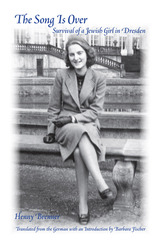 The Song Is Over: A Jewish Girl in Dresden
Henny Brenner
University of Alabama Press, 2010 A moving story of German Jews saved by the firebombing of Dresden. February, 1945. After heavy bombing by Allied air forces, Dresden was on fire and in ruins. Ironically, for the few Dresden Jews who had not yet been deported and murdered by the Nazis, the destruction meant rescue. With the Gestapo order for the family to report for deportation still in hand, Henny Wolf Brenner and her parents ran for their lives. They went into hiding and waited for the end of the war. Despite the family’s fears, the Gestapo did not succeed in tracking down the city’s last few Jews, and the family survived. At the end of the war the Red Army liberated Dresden. But instead of the desired release from terror into a resumption of a peaceful, productive life, different forms of repression awaited Brenner and her parents. In the new communist-run East Germany, she was refused advanced schooling because she was not a Party member. Under the communist regime, it was clear the Jewish population was not welcome, and consequently normal life was impossible. With heavy hearts, the family decided to abandon their beloved home and risk the dangers of flight from East Berlin to West Berlin. With the help of good friends, they were successful in their venture.
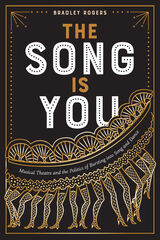 The Song Is You: Musical Theatre and the Politics of Bursting into Song and Dance
Bradley Rogers
University of Iowa Press, 2020 Musicals, it is often said, burst into song and dance when mere words can no longer convey the emotion. This book argues that musicals burst into song and dance when one body can no longer convey the emotion. Rogers shows how the musical’s episodes of burlesque and minstrelsy model the kinds of radical relationships that the genre works to create across the different bodies of its performers, spectators, and creators every time the musical bursts into song. These radical relationships—borne of the musical’s obsessions with “bad” performances of gender and race—are the root of the genre’s progressive play with identity, and thus the source of its subcultural power. However, this leads to an ethical dilemma: Are the musical’s progressive politics thus rooted in its embrace of regressive entertainments like burlesque and minstrelsy? The Song Is You shows how musicals return again and again to this question, and grapple with a guilt that its joyous pleasures are based on exploiting the laboring bodies of its performers. Rogers argues that the discourse of “integration”—which claims that songs should advance the plot—has functioned to deny the radical work that the musical undertakes every time it transitions into song and dance. Looking at musicals from The Black Crook to Hamilton, Rogers confronts the gendered and racial dynamics that have always under-girded the genre, and asks how we move forward.
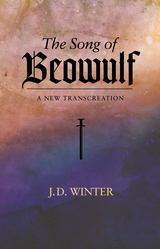 The Song of BEOWULF: A New Transcreation
Joe Winter
Sussex Academic Press, 2022 An epic poem is a performance. The telling of Beowulf carries something of the days of its pre-literary composition, as it evolved as something memorised, half spoken and half sung, over many generations. The single manuscript we have from about 1000 AD is the end result of a great chain of poetic adaptation. Of all new versions, Seamus Heaneys (1999) has made the most striking impact, in part for his willingness to experiment, to be a new scop or oral poet, to depart at times from the exact text and join the tradition when there was no such thing. The licence such an approach adopts can make for a riveting poem in itself, a work of wonder. But there is a different route to the flame of the original. J.D. Winters rendering of the Beowulf song accepts the text as historical fact, and by a gradual revelation of its deeper music, discovers an illumination from within. The clarity and concentration of meaning in the brilliantly alliterated half-lines can never be properly reconstructed, but a suggestion of that force and beauty, together with an underlying sense of the inexorable, may always be rediscovered. In the knock and flow of the lines, too, one can sense the poetry of a sea-faring nation.
The Song of Eros: Ancient Greek Love Poems
Translated by Bradley P. Nystrom Illustrated by Claudette Sherbert Little
Southern Illinois University Press, 1991 This collection of new translations of eighty poems provides a pleasant, thought-provoking reminder of love’s vagaries as captured through the wit, charm, and insight of the master poets of antiquity. All the emotions and experiences associated with love—rejection, infatuation, ecstasy, desperation, loneliness—are rendered accessible to contemporary readers through this lively, modern, yet faithful English translation of works that date from the seventh century B.C.to the sixth century A.D.Illustrations accompany the poetry of Plato, Sappho, Stratto, Meleagros, and others, capturing both the flavor of the age and the theme of the texts.
Song of Gray
Asha Futterman
University Press of Colorado, 2025 Song of Gray approaches Black experience by clarifying the concrete worlds that exist between humanity and objecthood. Asha Futterman renders this in-between space as it reveals itself in performance: in a contemporary performance workshop, at an audition, in a production of A Midsummer Night’s Dream, and in the dailiness of the YMCA, her porch, the walk to the train.
These poems build new logic systems. Futterman stands at her grandmother’s grave and proclaims, “how powerful how dense and naked how inaccurate.” With quiet, deadpan, and piercing language, Song of Gray offers earnest, felt relationships to race, empathy, pleasure, and nonsense.
“There wasn’t a sunrise / just gray / then brighter gray.” In Song of Gray, blackness is not definite—it is an ambivalent hole as much as an area of hope. Blackness is a song of gray
A Song of Longing: AN ETHIOPIAN JOURNEY
Kay Kaufman Shelemay
University of Illinois Press, 1992 "A rich, descriptive account. . . . Shelemay presents extraordinary personal experiences that shaped her research process and make reading this text pleasurable."
-- Library Journal
"Highly recommended to generalists in music as well as to specialists interested in Ethiopia. . . . Also makes an excellent case study text for university-level courses examining fieldwork issues and conditions."
-- Notes
"Highly recommended for both undergraduate and graduate collections in ethnomusicology, anthropology, African, and Judaic studies."
-- Choice
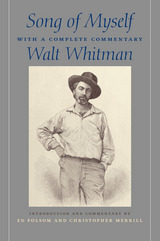 Song of Myself: With a Complete Commentary
Walt Whitman
University of Iowa Press, 2016 This book offers the most comprehensive and detailed reading to date of Song of Myself. One of the most distinguished critics in Whitman Studies, Ed Folsom, and one of the nation’s most prominent writers and literary figures, Christopher Merrill, carry on a dialog with Whitman, and with each other, section by section, as they invite readers to enter into the conversation about how the poem develops, moves, improvises, and surprises. Instead of picking and choosing particular passages to support a reading of the poem, Folsom and Merrill take Whitman at his word and interact with “every atom” of his work. The book presents Whitman’s final version of the poem, arranged in fifty-two sections; each section is followed by Folsom’s detailed critical examination of the passage, and then Merrill offers a poet’s perspective, suggesting broader contexts for thinking about both the passage in question and the entire poem.
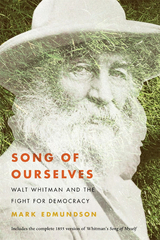 Song of Ourselves: Walt Whitman and the Fight for Democracy
Mark Edmundson
Harvard University Press, 2021 In the midst of a crisis of democracy, we have much to learn from Walt Whitman’s journey toward egalitarian selfhood.
Walt Whitman knew a great deal about democracy that we don’t. Most of that knowledge is concentrated in one stunning poem, Song of Myself.
Esteemed cultural and literary thinker Mark Edmundson offers a bold reading of the 1855 poem, included here in its entirety. He finds in the poem the genesis and development of a democratic spirit, for the individual and the nation. Whitman broke from past literature that he saw as “feudal”: obsessed with the noble and great. He wanted instead to celebrate the common and everyday. Song of Myself does this, setting the terms for democratic identity and culture in America. The work captures the drama of becoming an egalitarian individual, as the poet ascends to knowledge and happiness by confronting and overcoming the major obstacles to democratic selfhood. In the course of his journey, the poet addresses God and Jesus, body and soul, the love of kings, the fear of the poor, and the fear of death. The poet’s consciousness enlarges; he can see more, comprehend more, and he has more to teach.
In Edmundson’s account, Whitman’s great poem does not end with its last line. Seven years after the poem was published, Whitman went to work in hospitals, where he attended to the Civil War’s wounded, sick, and dying. He thus became in life the democratic individual he had prophesied in art. Even now, that prophecy gives us words, thoughts, and feelings to feed the democratic spirit of self and nation.
Song of Sampo Lake
William Durbin
University of Minnesota Press, 2011 For fifteen-year-old Matti Ojala and his family, Finnish immigrants in Minnesota in 1900, starting a new life in America is both a hardship and an opportunity. After a tragic mining accident kills their beloved uncle, the family turns away from on the iron mines to pursue the dream of owning a homestead in the wilderness. This means constant hard work and new challenges for the entire family. But will it also allow Matti, the in-between child, the chance to escape from his older brother’s shadow and gain the approval of his father, which he so desperately desires?
The Song of Songs: Love Lyrics from the Bible
Marcia Falk
Brandeis University Press, 2004 Striking in its appeal to the senses, the Song of Songs—the Bible’s only book of love poems—is remarkable for its lack of sexual stereotyping and its expression of mutuality in relationships between men and women. Marcia Falk’s rich and lyrical translation, praised by poets and scholars alike, is paired here with the original Hebrew text.
The Song of Songs: The JPS Audio Version
JPS: The Jewish Publication Society
Jewish Publication Society, 2009 The audio version of the Song of Songs was created by JPS and JBI. Using the NJPS translation, Theodore Bikel and Marciarose Shestack narrated this book exclusively for The Jewish Publication Society.
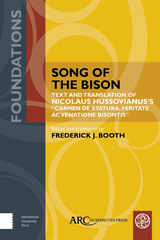 Song of the Bison: Text and Translation of Nicolaus Hussovianus’s "Carmen de statura, feritate, ac venatione bisontis"
Frederick J. Booth
Arc Humanities Press, 2019 In 1521, the young Polish diplomat Nicolaus Hussovianus was watching the bullfights at a papal celebration in Rome. He remarked that the spectacle reminded him of the bison hunts he had witnessed as a young man in the Polish-Lithuanian woods, and his employer then asked Hussovianus to write a poem about the bison hunts, to accompany the gift of a stuffed bison for Pope Leo X, an avid hunter. Song of the Bison is the first complete English translation of Hussovianus’s Latin poem, which is claimed as a national epic by Lithuania, Belarus, and Poland. The exciting poem discusses not only Hussovianus’s own experience in hunting and observing the European bison, but also the political, social, religious, and aesthetic developments of sixteenth-century Europe, and ends with an urgent plea for unity among European states threatened by foreign invasions.
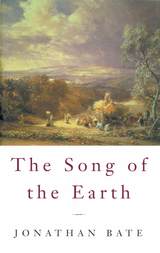 The Song of the Earth
Jonathan Bate
Harvard University Press, 2002 As we enter a new millennium ruled by technology, will poetry still matter? The Song of the Earth answers eloquently in the affirmative. A book about our growing alienation from nature, it is also a brilliant meditation on the capacity of the writer to bring us back to earth, our home.
In the first ecological reading of English literature, Jonathan Bate traces the distinctions among "nature," "culture," and "environment" and shows how their meanings have changed since their appearance in the literature of the eighteenth century. An intricate interweaving of climatic, topographical, and political elements poetically deployed, his book ranges from greenhouses in Jane Austen's novels to fruit bats in the poetry of Les Murray, by way of Thomas Hardy's woodlands, Dr. Frankenstein's Creature, John Clare's birds' nests, Wordsworth's rivers, Byron's bear, and an early nineteenth-century novel about an orangutan who stands for Parliament. Though grounded in the English Romantic tradition, the book also explores American, Central European, and Caribbean poets and engages theoretically with Rousseau, Adorno, Bachelard, and especially Heidegger.
The model for an innovative and sophisticated new "ecopoetics," The Song of the Earth is at once an essential history of environmental consciousness and an impassioned argument for the necessity of literature in a time of ecological crisis.
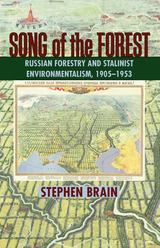 Song of the Forest: Russian Forestry and Stalinist Environmentalism, 1905–1953
Stephen Brain
University of Pittsburgh Press, 2011
The Soviets are often viewed as insatiable industrialists who saw nature as a force to be tamed and exploited. Song of the Forest counters this assumption, uncovering significant evidence of Soviet conservation efforts in forestry, particularly under Josef Stalin. In his compelling study, Stephen Brain profiles the leading Soviet-era conservationists, agencies, and administrators, and their efforts to formulate forest policy despite powerful ideological differences.
By the time of the revolution of 1905, modern Russian forestry science had developed an influential romantic strand, especially prevalent in the work of Georgii Morozov, whose theory of “stand types” asked forest managers to consider native species and local conditions when devising plans for regenerating forests. After their rise to power, the Bolsheviks turned their backs on this tradition and adopted German methods, then considered the most advanced in the world, for clear-cutting and replanting of marketable tree types in “artificial forests.” Later, when Stalin’s Five Year Plan required vast amounts of timber for industrialization, forest radicals proposed “flying management,” an exaggerated version of German forestry where large tracts of virgin forest would be clear-cut. Opponents who still upheld Morozov’s vision favored a conservative regenerating approach, and ultimately triumphed by establishing the world’s largest forest preserve.
Another radical turn came with the Great Stalin Plan for the Transformation of Nature, implemented in 1948. Narrow “belts” of new forest planted on the vast Russian steppe would block drying winds, provide cool temperatures, trap moisture, and increase crop production. Unfortunately, planters were ordered to follow the misguided methods of the notorious Trofim Lysenko, and the resulting yields were abysmal. But despite Lysenko, agency infighting, and an indifferent peasant workforce, Stalin’s forestry bureaus eventually succeeded in winning many environmental concessions from industrial interests. In addition, the visionary teachings of Morozov found new life, ensuring that the forest’s song did not fall upon deaf ears.
The Song of the Hammer and Drill: The Colorado San Juans, 1860-1914
Duane A. Smith
University Press of Colorado, 2000 As one of the great mining regions of Colorado and the United States, the San Juan Mountains provide insight into the development of both the industry and the state. First published in 1982, Song of the Hammer and Drill, with the help of more than 100 historical photographs, traces the mining and urban history of the San Juans from 1860-1914 through the lives of the people who opened, settled, and developed the beautiful but rugged mineral-rich peaks of southwestern Colorado.
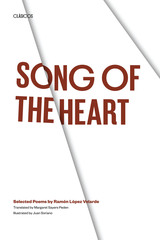 Song of the Heart: Selected Poems by Ramón López Velarde
By Ramón López Velarde
University of Texas Press, 1995 Ramón López Velarde (1888-1921) was one of the most Mexican of Mexican poets, whose sense of history found expression in many poems, including his best-known "La suave Patria" ("Sweet Land"). This bilingual collection, drawn primarily from Poesías completas y el minutero, offers English-language readers our first book-length introduction to his poetry. Often called a "poet of the provinces," López Velarde gives us a glimpse into a slower and more gentle way of life. His poems present the contrast between city and hometown and between urban and pastoral landscapes. Through these contrasts runs the thread of religious faith, while urgency of language informs the entire body of his poetic production. Original, specially commissioned drawings by noted contemporary Mexican artist Juan Soriano complement the poems. This combination of poetry and art speaks to universal emotions; indeed the poetry of López Velarde belongs to everyone who sings the Song of the Heart.
Song of the Simple Truth: The Complete Poems of Julia de Burgos
Julia de Burgos
Northwestern University Press, 1995 Song of the Simple Truth (Canción de la verdad sencilla) is the first bilingual edition of Julia de Burgos' complete poems. Numbering more than 200, these poems form a literary landmark—the first time her poems have appeared in a complete edition in either English or Spanish. Many of the verses presented here had been lost and are presented here for the first time in print. De Burgos broke new ground in her poetry by fusing a romantic temperament with keen political insights. This book will be essential reading for lovers of poetry and for feminists.
Song Of Thieves
Shara McCallum
University of Pittsburgh Press, 2003 Song of Thieves delves into issues of racial identity and politics, the immigrant experience, and the search for "home" and family histories. In this follow-up to her award-winning debut collection, The Water Between Us, Shara McCallum artfully draws from the language and imagery of her Caribbean background to play a haunting and soulful tune.
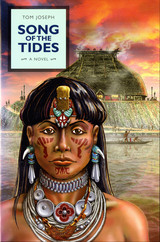 Song of Tides
Tom Joseph
University of Alabama Press, 2008 Beginning with their battle against the forces of Ponce de Leon, the Calusa Indians of southwest Florida entered a dark period of European invasion and native resistance, which changed the nature and course of life on the North American continent. Song of the Tides is a work of anthropological fiction that is set during the period of the Spanish entrada into southwest Florida and their encounters with the Calusa. Relying on letters and memoirs, especially those of explorer Pedro Menendez de Aviles, shipwrecked captive Escalante Fontaneda, and the Jesuit priest Juan Rogel, Joseph has woven a tale of vivid historical detail and compelling human drama. Working with Calusa scholars, the author has created a superbly written account of the clash of two proud and dominant cultures. Told through the voice of Aesha, daughter of the great Calusa chief Caalus, as well as those of other political and spiritual leaders, the fictional narrative spans half a century of conflict with Spanish soldiers and Jesuits, infighting between bands, struggle to preserve their culture, and eventual defeat of the Spanish through wit and deceit.
The Song of Youth
Montserrat Roig, Translated by Tiago Miller
Fum d'Estampa Press, 2021 In The Song of Youth, Montserrat Roig boldly presents eight remarkable stories that use language as a weapon against political and social “dismemory.” Her powerful and striking prose allows the important stories of those silenced by the brutal Franco regime to, at last, come to the fore. The Song of Youth is undoubtedly feminist and deeply critical but, as always, Roig’s lyrical writing gives shape, depth, and significance to the human experience.
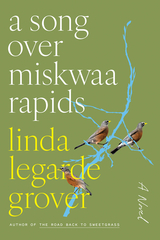 A Song over Miskwaa Rapids: A Novel
Linda LeGarde Grover
University of Minnesota Press, 2023 A fifty-year-old mystery converges with a present-day struggle over family, land, and history
When a rock is dislodged from its slope by mischievous ancestors, the past rises to meet the present, and Half-Dime Hill gives up a gruesome secret it has kept for half a century. Some people of Mozhay Point have theories about what happened; others know—and the discovery stirs memories long buried, reviving a terrible story yet to be told. Returning to the fictional Ojibwe reservation in northern Minnesota she has so deftly mapped in her award-winning books, Linda LeGarde Grover reveals traumas old and new as Margie Robineau, in the midst of a fight to keep her family’s long-held allotment land, uncovers events connected to a long-ago escape plan across the Canadian border, and the burial—at once figurative and painfully real—of not one crime but two. While Margie is piecing the facts together, Dale Ann is confronted by her own long-held secrets and the truth that the long ago and the now, the vital and the departed are all indelibly linked, no matter how much we try to forget. As the past returns to haunt those involved, Margie prepares her statement for the tribal government, defending her family’s land from a casino development and sorting the truths of Half-Dime Hill from the facts that remain there. Throughout the narrative, a chorus of spirit women gather in lawn chairs with coffee and cookies to reminisce, reflect, and speculate, spinning the threads of family, myth, history, and humor—much as Grover spins another tale of Mozhay Point, weaving together an intimate and complex novel of a place and its people. Retail e-book files for this title are screen-reader friendly.
 The Song Sparrow and the Child: Claims of Science and Humanity
Joseph Vining
University of Notre Dame Press, 2004 "The Song Sparrow and the Child is an amazingly learned, unpretentiously cultured meditation on a moral, spiritual, and cultural problem. It emerges as a deeply felt and beautifully written provocation to think and respond to what Vining calls total theory." --George Levine, Rutgers University
In this thought-provoking book, distinguished legal scholar Joseph Vining traces the complex roots of brutal twentieth-century human experimentation and extermination to worldviews that dehumanize both perpetrators and victims in distinctive ways, stripping them of their individuality as well as their intrinsic dignity and value. Vining finds a disturbing parallel between these worldviews and what he calls "total theory." Total theories are "beautiful and helpful explanations through attention to system and process" that aggressively claim to account for the universe and everything in it. Vining maintains that some of the most gifted intellectuals and scientists of our time profess these theories without necessarily considering the implications of such totalizing worldviews.
Using the example of the song sparrow and the child, Vining opens our eyes to the ramifications of total theory. He challenges readers to question casual acceptance of the total theories that are widely and quietly taught in contemporary biology, physics, and mathematics--theories that Vining maintains cannot be and are not actually believed by the people espousing them. This book is an invitation to recall our individuality and to take seriously the connection between thought and action, theory and practice. He asks readers to think deeply about what actual belief is and how what we believe in science has crucial consequences for the future of humanity and the natural world.
To assist readers in understanding total theory, Vining draws upon the legal sensibilities commonly shared by scientist and nonscientist alike. He extends his consideration to include the dignity not only of humans, but also of animals. In elegant, highly readable prose, The Song Sparrow and the Child offers a reconciliation of spirit and mind, serious science and a serious sense of purpose and meaning.
JOSEPH VINING is Hutchins Professor of Law at the University of Michigan.
 A Song to My City: Washington, DC
Carol Lancaster. WithDouglas Farrar
Georgetown University Press, 2018 This deeply felt memoir is a love letter to Washington, DC. Carol Lancaster, a third-generation Washingtonian who knew the city like few others, takes readers on a tour of the nation’s capital from its swamp-infested beginnings to the present day, with an insider’s view of the gritty politics, environment, society, culture, and larger-than-life heroes that characterize her beloved hometown. The former dean of Georgetown University’s School of Foreign Service, a friend of presidents and dignitaries all over the globe, Lancaster colorfully describes the city’s three near-death experiences and the many triumphs and tribulations that emerged as the city took shape. Along the way she provides brief biographies of three of the most influential figures in the city’s history: urban designer Pierre Charles L’Enfant, whose vision for the city was realized only after his death; civic leader “Boss” Shepherd, whose strong-arm tactics cleaned up the downtown area and helped create the walking mall we know today; and controversial mayor Marion Barry, whose rise and fall and resurrection underscored the contemporary challenges of home rule. Teeming with informative anecdotes and two dozen illustrations of landmarks and key characters, Lancaster’s memoir is a personal and passionate paean to the most powerful city in the world—from one of its most illustrious native daughters.
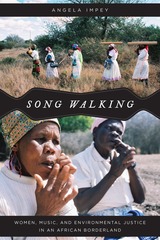 Song Walking: Women, Music, and Environmental Justice in an African Borderland
Angela Impey
University of Chicago Press, 2018 Song Walking explores the politics of land, its position in memories, and its foundation in changing land-use practices in western Maputaland, a borderland region situated at the juncture of South Africa, Mozambique, and Swaziland. Angela Impey investigates contrasting accounts of this little-known geopolitical triangle, offsetting textual histories with the memories of a group of elderly women whose songs and everyday practices narrativize a century of borderland dynamics. Drawing evidence from women’s walking songs (amaculo manihamba)—once performed while traversing vast distances to the accompaniment of the European mouth-harp (isitweletwele)—she uncovers the manifold impacts of internationally-driven transboundary environmental conservation on land, livelihoods, and local senses of place.
This book links ethnomusicological research to larger themes of international development, environmental conservation, gender, and local economic access to resources. By demonstrating that development processes are essentially cultural processes and revealing how music fits within this frame, Song Walking testifies to the affective, spatial, and economic dimensions of place, while contributing to a more inclusive and culturally apposite alignment between land and environmental policies and local needs and practices.
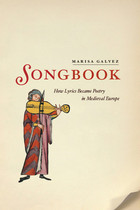 Songbook: How Lyrics Became Poetry in Medieval Europe
Marisa Galvez
University of Chicago Press, 2012 Today we usually think of a book of poems as composed by a poet, rather than assembled or adapted by a network of poets and readers. But the earliest European vernacular poetries challenge these assumptions. Medieval songbooks remind us how lyric poetry was once communally produced and received—a collaboration of artists, performers, live audiences, and readers stretching across languages and societies.
The only comparative study of its kind, Songbook treats what poetry was before the emergence of the modern category “poetry”: that is, how vernacular songbooks of the thirteenth to fifteenth centuries shaped our modern understanding of poetry by establishing expectations of what is a poem, what is a poet, and what is lyric poetry itself. Marisa Galvez analyzes the seminal songbooks representing the vernacular traditions of Occitan, Middle High German, and Castilian, and tracks the process by which the songbook emerged from the original performance contexts of oral publication, into a medium for preservation, and, finally, into an established literary object. Galvez reveals that songbooks—in ways that resonate with our modern practice of curated archives and playlists—contain lyric, music, images, and other nonlyric texts selected and ordered to reflect the local values and preferences of their readers. At a time when medievalists are reassessing the historical foundations of their field and especially the national literary canons established in the nineteenth century, a new examination of the songbook’s role in several vernacular traditions is more relevant than ever.
 Songbooks: The Literature of American Popular Music
Eric Weisbard
Duke University Press, 2021 In Songbooks, critic and scholar Eric Weisbard offers a critical guide to books on American popular music from William Billings's 1770 New-England Psalm-Singer to Jay-Z's 2010 memoir Decoded. Drawing on his background editing the Village Voice music section, coediting the Journal of Popular Music Studies, and organizing the Pop Conference, Weisbard connects American music writing from memoirs, biographies, and song compilations to blues novels, magazine essays, and academic studies. The authors of these works are as diverse as the music itself: women, people of color, queer writers, self-educated scholars, poets, musicians, and elites discarding their social norms. Whether analyzing books on Louis Armstrong, the Beatles, and Madonna; the novels of Theodore Dreiser, Gayl Jones, and Jennifer Egan; or varying takes on blackface minstrelsy, Weisbard charts an alternative history of American music as told through its writing. As Weisbard demonstrates, the most enduring work pursues questions that linger across time period and genre—cultural studies in the form of notes on the fly, on sounds that never cease to change meaning.
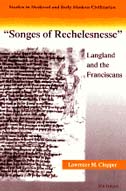 "Songes of Rechelesnesse": Langland and the Franciscans
Lawrence M. Clopper
University of Michigan Press, 1997 William Langland's Piers Plowman provides a highly charged picture of England near the end of the fourteenth century, a time of political, religious, and moral crises. The period in which Langland wrote was volatile and full of colorful and contentious people: Edward III, Richard II, Chaucer, Wyclif--and Langland. In "Songes of Rechelesnesse," Lawrence M. Clopper presents the voice of this powerful disputant who lived in a period marked by dissent and discontent.
In the late Middle Ages, Franciscan friars had a significant impact on all levels of society.
But because of the apparent discrepancy between the poverty the Franciscans claimed and the life they lived, a large body of antifraternal literature arose, including, supposedly, Piers Plowman. Since the sixteenth century, when it was first put into print, Piers Plowman has been understood to be a proto-Protestant work that revealed the failures of the medieval clergy, but especially of the mendicant orders. In "Songes of Rechelesnesse," Clopper establishes the presence of a Franciscan reformist position in Piers Plowman.
Clopper maintains that the poem articulates a reformist agenda, presenting the internal Franciscan debate, in a bid to return the order to its initial foundation. Clopper believes that Langland is deeply imbued with a Franciscan mentality that reaches deep into the structure of the poem. It manifests itself at the level of the alliterative long line in his exemplarist poetics and is the source of his imagery and politics. In short Clopper identifies Franciscanism as holding the poem together.
"Songes of Rechelesnesse" is a historical, political, and religious history of late fourteenth-century England. It will be of interest to literary scholars, historians of the late Middle Ages, and scholars in religious studies.
Lawrence M. Clopper is Director, Medieval Studies Institute, and Professor of English, Indiana University.
 Songlines in Michaeltree: NEW AND COLLECTED POEMS
Michael S. Harper
University of Illinois Press, 2000 Songlines in Michaeltree is the long-awaited collected poems--with the sparkling addition of some new ones--of one of America's most revered poets.
Hailed by critics as a distinctive and powerful presence in contemporary American poetry, Michael S. Harper is an artist and a truth teller who tempers his astonishing technical virtuosity with a compassionate and healing vision. A keen observer and a potent commentator, Harper calls a complacent society vigorously to account while cradling the wounded and remembering the lost.
Calling Harper "one of the finest poets of our time . . . [and] one of the most human and humane,"
George Cuomo of the San Francisco Examiner and Chronicle observed, "Harper's poetry has drawn its vitality from the incredible energy of his language and the honesty of his perceptions." Songlines in Michaeltree is a magnificent celebration of Harper's continuing, unstinting gifts.
Song-Poems from Xanadu
J. I. Crump
University of Michigan Press, 1993 If the title Song-Poems from Xanadu seems hauntingly familiar to the reader, it is because there is another book called Songs from Xanadu, written by the same author between 1979 and 1983, primarily as a rigorous attempt to make some sense out of the technical and prosodic questions which these songs raise about themselves. The editor at the Center for Chinese Studies noted somewhat wistfully that Songs from Xanadu would have been a perfect title for the present book. Since the author already used that title up on a somewhat stuffier work, he tried to mollify the editor by choosing a title that sounded as much like the one he preferred as possible. Being largely directed at specialists in Chinese literature, the first book differs greatly from this, its sequel, which is written for those who know next to nothing about its subject. [ix-x]
Song-Poems from Xanadu
J. I. Crump
University of Michigan Press, 1993 If the title Song-Poems from Xanadu seems hauntingly familiar to the reader, it is because there is another book called Songs from Xanadu, written by the same author between 1979 and 1983, primarily as a rigorous attempt to make some sense out of the technical and prosodic questions which these songs raise about themselves. The editor at the Center for Chinese Studies noted somewhat wistfully that Songs from Xanadu would have been a perfect title for the present book. Since the author already used that title up on a somewhat stuffier work, he tried to mollify the editor by choosing a title that sounded as much like the one he preferred as possible. Being largely directed at specialists in Chinese literature, the first book differs greatly from this, its sequel, which is written for those who know next to nothing about its subject. [ix-x]
 Songprints: The Musical Experience of Five Shoshone Women
Judith Vander
University of Illinois Press, 1988 Perspectives on the twentieth-century lives of Shoshone women musicians
The musical lives of Native American women have experienced a century of cultural change and constancy. Judith Vander takes readers to the Shoshone of Wyoming's Wind River Reservation to meet five generations of Shoshone women. Vander’s conversations with Emily, Angelina, Alberta, Helene, and Lenore capture their distinct personalities as they share their thoughts, feelings, and attitudes toward their music.
Vander transcribes and analyzes seventy-five songs that the women sing. Each woman possesses a unique songprint—a repertoire distinctive to her culture, age, and personality. As Vander shows, the context of Shoshone social and religious ceremonies offers insights into the rise of the Native American Church, the emergence and popularity of the contemporary powwow, and the changing, enlarging role of women. In addition, two eyewitnesses accounts of Ghost Dance songs and performances elaborate on the function and meaning of the Ghost Dance among the Wind River Shoshones.
2nd Place from the Pauline Alderman Prize for New Scholarship on Women in Music from the International Congress on Women in Music. Winner of an ASCAP Deems Taylor Award, 1989.
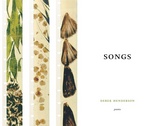 Songs
Derek Henderson
University Press of Colorado, 2014 The poems in Derek Henderson’s Songs are “translations” of a film cycle of the same name, shot by American filmmaker Stan Brakhage (1933–2003) to document his and his family’s life in Colorado in the mid-1960s. Where Brakhage’s films provide a subjective visual record of his experience bewildered by the eye, these poems let language bewilder the space a reader enters through the ear. Henderson tenders the visual experience of Brakhage’s films—films of the domestic and the wild, the private and political, the local and global—into language that insists on the ultimate incapacity of language—or of image—to fully document the comfort and the violence of intimacy. Songs expresses the ecstasy we so often experience in the company of family, but it just as urgently attests to ecstasy’s turbulent threat to family’s stability. Like Brakhage’s films, Henderson’s poems carry across into language and find family in every moment, even the broken ones, all of them abounding in hope.
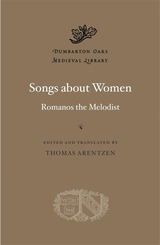 Songs about Women
Romanos the Melodist
Harvard University Press, 2024 A collection of ancient Byzantine hymns featuring women as pivotal characters, now in a new translation.
At a time when Christianity was becoming the dominant religion in the Byzantine Roman Empire, Romanos the Melodist (ca. 485–565) was a composer of songs for festivals and rituals in late antique Constantinople. Most of his songs include dramatic dialogues or monologues woven with imagery from ordinary life, and his name became inseparably tied to the kontakion, a genre of dramatic hymn. Later Byzantine religious poets enthusiastically praised his creative virtuosity and a legend claimed that Romanos’s inspiration came directly from the Virgin Mary herself.
Songs about Women contains eighteen works related to the liturgical calendar that feature important female characters, many portrayed as models for Christian life. They appear as heroines and villains, saints and sinners, often as transgressive and bold. Romanos’s songs offer intriguing perspectives on gender ideals and women’s roles in the early Byzantine world.
This edition presents a new translation of the Byzantine Greek texts into English.
Songs and Ballads of the Maine Lumberjacks with Other Songs from Maine
Roland Palmer Gray
Harvard University Press Round the campfires and in the log cabins deep in the Maine woods, the lumberjacks have for uncounted decades composed and sung a rude poetry woven about their hazardous life, its trials, and its compensations. Here is a modern instance of the very thing that happened in the forests of England centuries ago, when popular rhymers celebrated the deeds of Robin Hood and his merry men. Only the scene and the circumstances have changed; the impulse to make poetry out of immediate experience has remained the same. Professor Gray’s collection will therefore appeal to everyone who likes virile, unsophisticated verse as well as to the great number who have lived or camped in Maine.
The Songs and Sonets of John Donne: Second Edition
John Donne
Harvard University Press, 2009 There is perhaps no superior edition of Donne’s Songs and Sonets than Theodore Redpath’s wonderful annotated volume. Out of print for a decade, the book is reprinted here in its second, revised edition. The book’s twofold origin is evident on every page of Redpath’s limpid commentary: it arises partly out of a life of scholarship and partly from Redpath’s experiences and concerns as a teacher. The volume contains notes “on every point likely to cause difficulty to a reader of average intelligence.”
|
|
